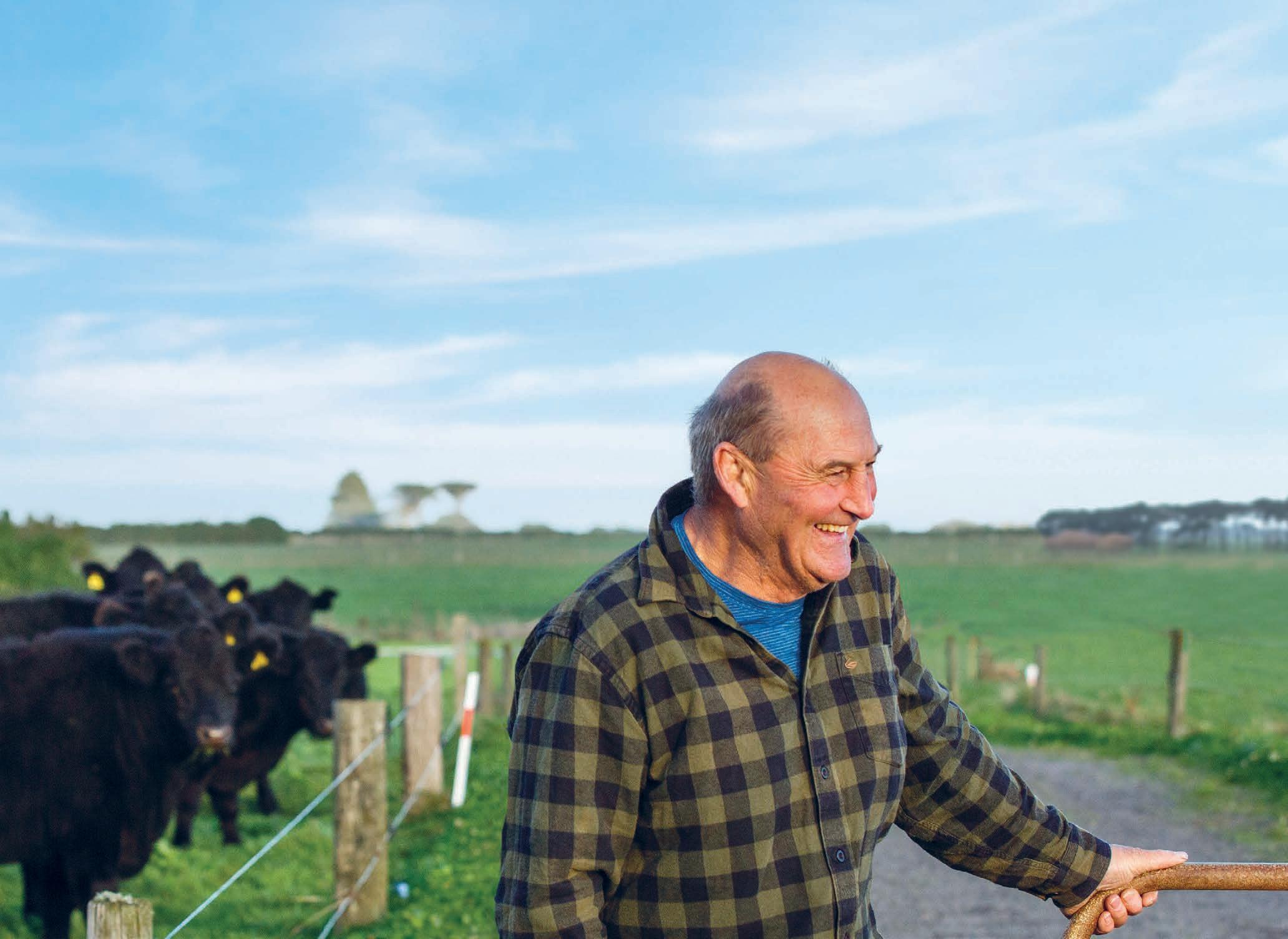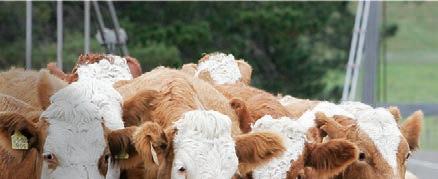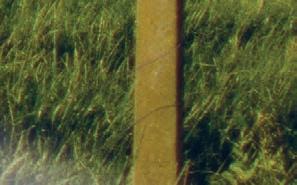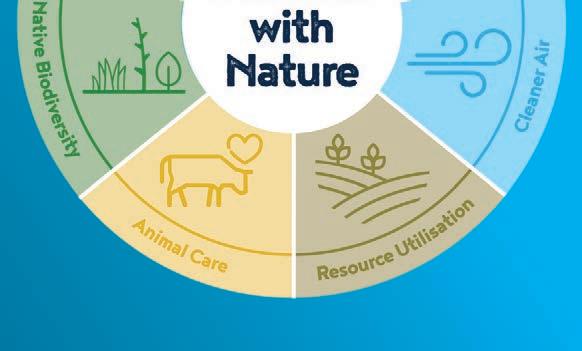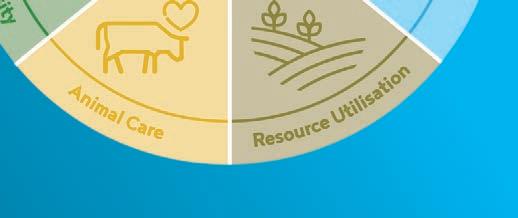Wool Impact predicts strong-wool bonanza
$4.95 Incl GST

$4.95 Incl GST
“But I think everyone – including the government – knows it’s only a step along the long path to recovery.”
THERE are fears the hit taken by farmers in the Cyclone Gabrielle floods could top $1 billion as almost 3400 producers apply for financial support within weeks of a government recovery fund being established.
Of those applications, 1754 were approved within the first two weeks and nearly $20.5m paid out to farmers and growers, according to Ministry for Primary Industries (MPI) director for animal health and welfare Dr Carolyn Guy.

A $25m support fund was announced by the government on February 21, and topped up with a further $26m on March 6.
The funding was aimed at ensuring farmers and growers could get back on their feet as quickly as possible, Guy said.
Grants of up to $10,000 are available for pastoral and arable farmers to help with initial recovery, such as repairs to water systems for livestock, and fencing.
Up to $2000 per hectare (up to a maximum of $40,000) is available for growers to remove silt from trees and vines, support clean-up, and minimise future losses.
As of Wednesday, MPI had received 3396 applications.
Federated Farmers chief executive Terry Copeland said the government funding is “very welcome”.

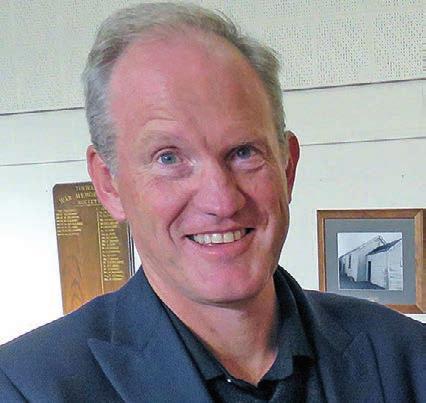
Copeland said the cost of cyclone damage is still being counted and some farmers, such as those in Tairāwhiti, have not been able to access all of their property to assess damage.
Stock losses will be in the many, many thousands of animals.
“As an educated estimate, the Federated Farmers policy team believes total on-farm costs, including income disruption, infrastructure repair and crop/ orchard restoration bills, for all affected farmers and growers could top $1 billion,” Copeland said.
This is not counting the cost to New Zealand in terms of public infrastructure, food shortages and inflation, he said.
Of the money already paid out, Guy said almost 60% has gone to sheep and beef farmers, 25% to orchardists and wine growers and the remainder to dairy farmers, and arable and vegetable growers.
Half of the funding went to farmers and growers in Hawke’s Bay, 20% to the Gisborne district, and the remainder to Northland and other regions.
Applications for the grants close on March 20, but will be extended to April 3 for those living in hard-to-reach areas.
An active national response is underway to support those
Continued page 3

NEWS 7
Former practising vet steps in to help community and small animals, such as Hershey and owner Nivarah Ella-Rae, cut off by flood damage.
PEOPLE 5
Cambridge University is in talks with its catering service to remove all animal products from its canteens.
NEWS 8

PEOPLE 14
If you’re with FMG, we want to acknowledge your patience as we work through the recovery of the recent adverse weather.
We’re making progress.
We’re already settling claims and our assessing teams are on the ground and right now focused on our most vulnerable clients.
If your claim is still with us, then please know we’re working on it – it will take time.
WORLD 28
Bryan Gibson | 06 323 1519
Managing Editor bryan.gibson@agrihq.co.nz
Craig Page
Deputy Editor craig.page@agrihq.co.nz
Claire Robertson
Sub-Editor claire.robertson@agrihq.co.nz
Neal Wallace | 03 474 9240
Journalist neal.wallace@agrihq.co.nz
Gerald Piddock | 027 486 8346
Journalist gerald.piddock@agrihq.co.nz
Annette Scott | 021 908 400
Journalist annette.scott@agrihq.co.nz
Hugh Stringleman | 09 432 8594
Journalist hugh.stringleman@agrihq.co.nz
Richard Rennie | 027 475 4256
Journalist richard.rennie@agrihq.co.nz
Nigel Stirling | 021 136 5570
Journalist nigel.g.stirling@gmail.com
PRODUCTION
Lana Kieselbach | 027 739 4295 production@agrihq.co.nz
ADVERTISING MATERIAL
Supply to: adcopy@agrihq.co.nz
SUBSCRIPTIONS
0800 85 25 80 subs@agrihq.co.nz
PRINTER
Printed by Stuff Ltd
Delivered by Reach Media Ltd
our
Andy Whitson | 027 626 2269 Sales & Marketing Manager andy.whitson@agrihq.co.nz
Steve McLaren | 027 205 1456 Auckland/Northland Partnership Manager steve.mclaren@agrihq.co.nz
Jody Anderson | 027 474 6094 Waikato/Bay of Plenty Partnership Manager jody.anderson@agrihq.co.nz
Andy Whitson | 027 626 2269
Lower North Island Partnership Manager andy.whitson@agrihq.co.nz
Omid Rafyee | 027 474 6091 South Island Partnership Manager omid.rafyee@agrihq.co.nz
Debbie Brown | 06 323 0765 Marketplace Partnership Manager classifieds@agrihq.co.nz
Grant Marshall | 027 887 5568 Real Estate Partnership Manager realestate@agrihq.co.nz
Andrea Mansfield | 027 602 4925 National Livestock Manager livestock@agrihq.co.nz

Dean and Cushla Williamson
Phone: 0800 85 25 80 dean.williamson@agrihq.co.nz cushla.williamson@agrihq.co.nz
Farmers Weekly is Published by AgriHQ PO Box 529, Feilding 4740, New Zealand Phone: 0800 85 25 80 Website: www.farmersweekly.co.nz
ISSN 2463-6002 (Print)







ISSN 2463-6010 (Online)
WET SUMMER: Dr Carolyn Guy, the Ministry for Primary Industries’ director of animal health and welfare, says this summer has been particularly warm and wet in some areas of the country, ‘which can increase the likelihood of flystrike’.
A ground-breaking beef genetics programme will be outlined at a field day near Te Anau later this month.
The Informing New Zealand Beef programme is hosting the event at the across-breed Beef Progeny Test site at Pāmu’s Kepler Farm on March 28.
Beef + Lamb New Zealand Genetics team members will provide an overview of the programme.
The first speakers have been announced for E Tipu: the Boma agri-summit in Christchurch in June.
They are cancer researcher and Future Crunch co-founder Tane Hunter, Foundation of Māori Authorities chair Traci Houpapa and nanobiotechnologist Oded Shoseyov.
E Tipu will be held in Christchurch and online.
A team including AgResearch, Massey University and Waka Digital have obtained $700,000 in funding through the Our Land and Water National Science Challenge to build a “digital gateway” to enable simpler open access to data sources.
The Kuaha Matihiko Digital Gateway project will take land and water data and consolidate sources into a single “shopfront” for access.
Dairy farmers will be surveyed to get a better understanding of how technology is being used.
DairyNZ senior scientist Dr Callum Eastwood said technology options for farmers have expanded rapidly since the last survey in 2018.
The new study will involve 500 dairy farmers, covering on-farm systems, technologies on farm, workforce productivity and infrastructure.
Back in 1860, exporting meat to the other side of the world seemed about as easy as nailing gravy to the ceiling. But a few determined kiwis took the bull by the horns and now our grass-fed beef and lamb is sought-after all around the globe.
At AFFCO, we see the same pioneering spirit alive and well in farmers today. We’re playing our part too – exploring every opportunity to take New Zealand’s finest farm-raised products to the world.
pioneering spirit tells us nothing’s out of reach
HEADING downhill with increasing rapidity is one scenario for the Asia-Pacific region should climate change continue unchecked through to 2050, with annual losses amounting to more than China’s current GDP. A Deloitte report on climate change’s implications underscores the narrowness of the window available to turn that potential loss into a significant multitrillion-dollar gain for the region.
But the report, Asia-Pacific’s Turning Point, emphasises that the grim scenario of losses that will follow a 2050 2degC temperature rise is by no means a foregone conclusion; a strong climate action response could pay off to the tune of a 7.5% gain in regional GDP, it says. This potential gain is in stark contrast to the do-nothing
approach that initially shaves off US$3.4 trillion (about $5.5 trillion) by 2050 under a 2degC rise, surging to an eye-watering US$16 trillion in 2070 alone under a 2degC rise.
That compares to China’s economy today, which is valued at US$14 trillion. Cumulative losses could total US$96 trillion between now and 2070.
The report says that even if the region manages to meet the target of a 1.5degC minimal increase, its economic growth rate will drop 25% from 4% a year to 3% a year.
Significant amounts of capital will have to be redirected to repairing climate damage rather than investing in new value-added innovations and infrastructure.
Flipping that negative outcome around by taking positive climate action sooner rather than later could deliver a gain of over 50% in annual GDP growth estimates, pushing it up 7.5% by 2070.
A gain of US$47 trillion could be cumulatively added to Asia-Pacific economy by 2070, including an







additional US$860 billion added to Australia and New Zealand’s economies, the report says.
The report cites NZ – along with Australia, China and Taiwan – as one of the countries that could gain the greatest GDP surge early on by making bold climate plays between now and 2025.
Many of those gains come from reducing coal use. The Asia-Pacific region accounts for almost half the world’s emissions, with almost half those coming from energy production using coal.
The removal of coal from energy production has the potential to slice 14% off the world’s total emissions.
The report has identified some of the bold early plays being made by countries in the region that would help achieve that upside target.
China’s objective of being carbon neutral by 2060 is cited, along with the lead it holds in growth of renewables and large-scale deployment of solar energy in particular.
South Korea has unveiled
Continued from page 1
affected by the cyclone, and regional control centres have been established in Northland, Tairāwhiti and Hawke’s Bay.
Guy said she is aware some farmers are anxious about getting stock off their properties. MPI is working closely with animal sector groups, meat processors and farmers on options to get sheep and cattle out of isolated communities, including where possible droving via forestry roads.
“Operation Muster, a community-led operation, is in full swing and supported by MPI. The community is droving a few
The report cites NZ as one of the countries that could gain the greatest GDP surge early on by making bold climate plays between now and 2025.
plans to commission the world’s largest wind farm, and India has undertaken to build large-scale solar parks. With regional decarbonising comes the potential to create a valuable export sector, with some future predictions estimating over US$15 trillion will be

thousand lambs across culverts, mainly in Rissington and Puketitiri areas initially.”









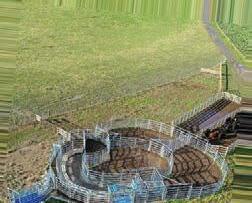
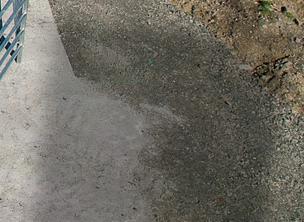

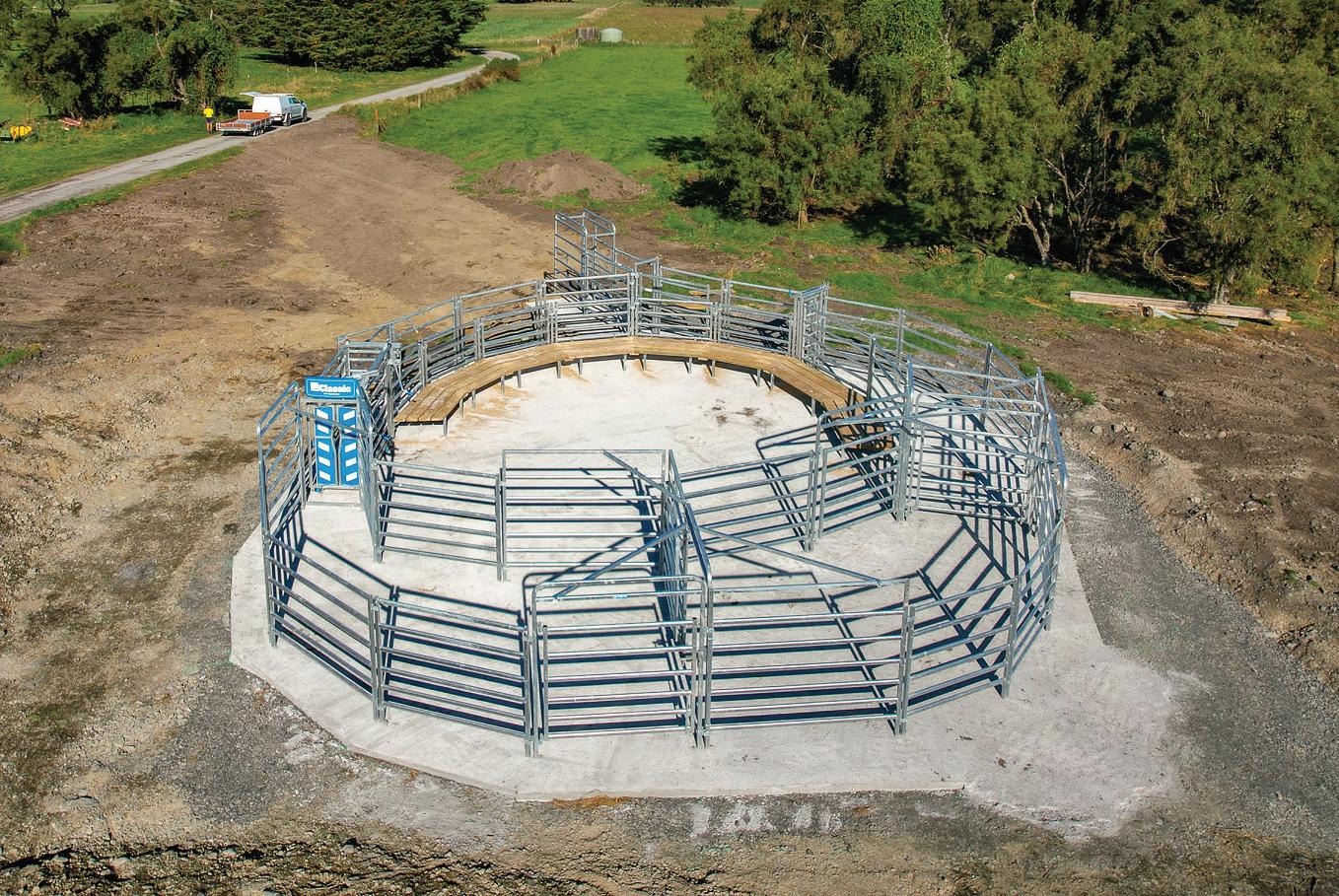
Guy said MPI is responsible for co-ordinating animal welfare services after the cyclone and uses specialist providers, such as the Massey Veterinary Emergency Response Team.

The team is trained to assist with animal rescues in damaged or destroyed buildings, flood situations and other natural disasters and has been involved in more than 20 rescues. Animal Evac New Zealand’s swift water rescue team assisted early in the response. Local veterinarians are also being used when needed.

invested around the world in new sustainable power capacity by 2050.

China is already the largest global exporter of renewable energy products, and South Korea and Japan are chasing strong growth in green energy products. The cost of not acting and letting temperatures run away will hit those who are currently in their 20s, 30s and 40s the hardest. A vastly more uncomfortable, uncertain world includes fewer hours where work can be done outdoors, disrupted businesses due to storms and disasters, and much capital lost to repair and remediation.
One Hawke’s Bay veterinarian spoken to by Farmers Weekly said he was disappointed at the lack of communication from MPI during the operation and felt the response was “fractured”.
“MPI supposedly had a plan but they could have let us know where we fitted into that plan, rather than us running around trying to find out what’s going on,” he said.

Guy said the scale of the cyclone and its impact on communications, power, and roading links created challenges for everyone involved, “but our team, along with our key animal welfare support agencies, have done their best and worked hard to help”.

NEW Zealand’s efforts to control wilding conifers and the resulting economic damage will be thrown into reverse under planned funding cuts, according to advocacy group Wilding Pine Network.
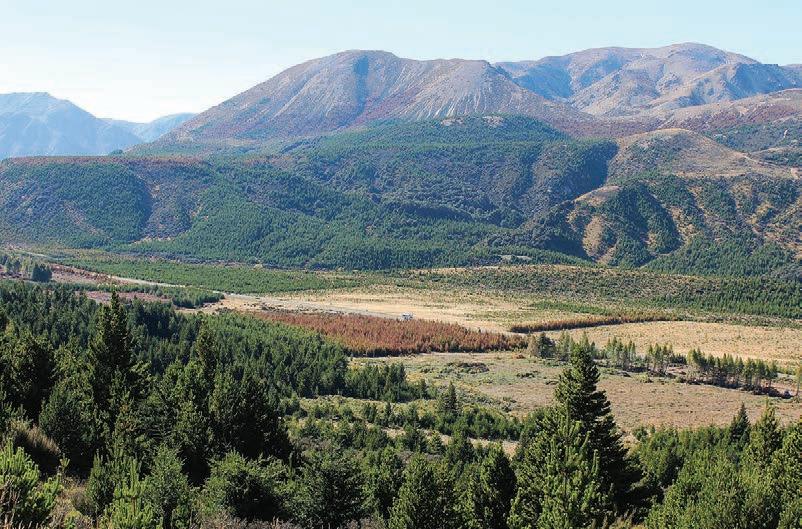
In the 2020 Budget, the government committed $100 million over four years to the National Wilding Conifer Control programme established in 2016 to ensure a collaborative, coordinated and effective approach to national wilding management. It is now threatened with a drastic cut, down to just $10m a year. The programme is a partnership
between central and local government agencies with the farming and forestry industries, landholders and community stakeholder groups.

Before the establishment of the national control programme, NZ’s most vulnerable landscapes and ecosystems were being infested by wilding conifers at a rate of about 90,000ha a year nationally.
Control costs were increasing exponentially and the infestations and rapid spread were, and still are in some cases, beyond individual landholders’ ability to maintain control.
Now in its eighth year, the control programme is under serious threat with planned funding cuts before the work is complete.
“It will be another major biosecurity disaster if NZ does not take the current national control programme through to a timely and effective completion,” Wilding Pine Network (WPN) chair Richard Bowman said.

“We were very fortunate with the $100m in the 2020 Budget but we are now looking at a 40% decrease in our funding at a point when we are starting to make real progress.
“Without funding we are not able to maintain or make gains.”
Bowman said the money spent so far had been remarkably effective but now “we need to protect the investment we have made and protect the gains long term”.
way to achieving its wilding-free landscapes goal by 2030.”
Bowman said the fact that the 2023-2024 budget goes down to a baseline of $10m a year means that a highly successful programme that has established wilding control across much of NZ will lose momentum.

“We have got the structures and resources in place, a lot of projects over the past two to three years are making real progress but without funding will go in reverse.
“We have got to the point of nearly getting to the top of the hill but we have run out of gas.”




In a letter to the Minister of Finance Grant Robertson the WPN highlights how the control programme will be forced to move from a proactive attacking mode into a defensive stance.

The reduction in funding means experienced field staff and highly efficient contracting companies now operating to an effective level will have to be laid off.
“NZ’s history is littered with biosecurity mistakes and lost opportunities that have cost the country dearly. Wilding pines do not have to be another one of these,” Bowman told Robertson in the letter.
If additional funding of $15m a year could be found for the next 10 years it is likely that the national wilding programme could be completed in an effective and orderly way, Bowman said.
Bowman said recent modelling has estimated that at least $400m will be needed to remove all known wilding conifer infestations if action is taken now and costs are not deferred into the future.
“Any delays to the control programme’s 2030 target will see costs increase.”
ANOTHER DISASTER: Wilding Pine Network chair Richard Bowman says it will be another major biosecurity disaster if NZ does not take the national control programme through to timely and e ective completion.

“Hundreds of thousands of hectares of extremely vulnerable high country in Otago, Canterbury and Marlborough have had scattered trees removed and these areas are now effectively protected from further spread and infill.
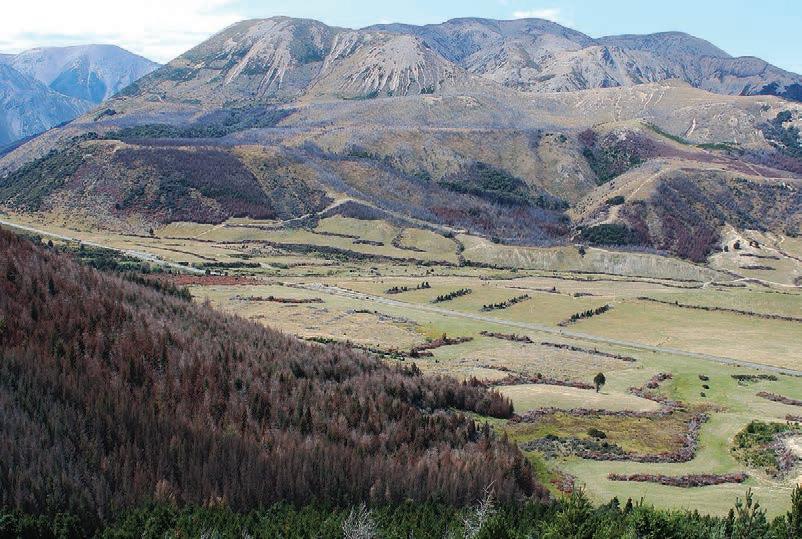
“With the momentum created over the past six years the national programme should be well on the



“Wilding conifers on the ground will not wait for funding to catch up and without adequate spending there will be genuine risk that the gains and funding [to date] will be wasted.
“If funding cannot be found then in a decade or more it could cost hundreds of millions of dollars to claw back the lost ground.”
According to a Ministry for Primary Industries 2018 costbenefit analysis (CBA), the intergenerational benefits of control are clear and greatly outweigh the costs.

The analysis demonstrates that to do nothing or to do little are not options.
“Not only will it fail to achieve the objective of sustainable
management it will result in substantial cost for the country,” the Sapere CBA report stated in summary.
Biosecurity Minister Damien O’Connor told delegates at the 2022 Wilding Pines conference it is unlikely there will be future funding at levels seen in recent years. He said he would campaign for more funding from the government “but it will take a collective effort to control these weeds”.
“You really want the minister of finance here, not me,” he said.
The WPN has not yet received any response to its letter to the finance minister, dated December 12 2022.
FROM stapling wounds on a pet chicken’s neck to treating farm dogs injured while bounding over slip-covered paddocks in search of missing livestock, it has been like old times for Sally Newall, Pātoka’s only resident veterinarian, since the arrival of Cyclone Gabrielle last month.
Newall hadn’t worked at a vet practice for five years but, with Pātoka isolated after the cyclone destroyed roads and bridges, her skills were called on to help in the aftermath.
“I’m the only vet that’s based
out here so I’m doing the smallanimal stuff, emergency work and putting animals down that need to be put down,” Newall said.
When Farmers Weekly called, she was on her way to yet another callout, this time to remove staples from the neck of Hershey, a pet chicken who was attacked by two dogs.

“I stapled it up last weekend. It’s a pet chicken that belongs to a teenager and it is her absolute pride and joy.
“It was really lovely that we managed to save it.”
Vets from around the region have been flown to Pātoka to tend to the larger animals on farms. But small animals and routine work, such as vaccinations, have
fallen to Newall. A sleep-out at her and husband Nathan’s bull beef farm has been converted into a temporary clinic.
“It’s been stressful for people. As well as not being able to get yourself to town, you can’t get your animals to town if there is a problem with them.
“Having a vet here relieves a bit of that stress. It’s nice that you can use your skills to help.”
Newall said injuries to working dogs have been among the most common complaints. The ground is wet and unstable, and dogs have been working hard to get stock back into paddocks.
“There were quite a few injuries – wounds to dress and staple up and lots of antibiotics.”
Getting medical supplies to the isolated area was initially a challenge, although largeanimal clinics in Hawke’s Bay had helped out, as did donations from Auckland vet clinics.

“I’ve been trying to get in contact with MPI to have a smooth run of supplies but that has been really difficult. Now, three weeks in, we’re starting to get a process in place but it was quite a headache to get those wheels to turn,” Newall said.
She has also been spreading the word through her popular Facebook page, Kiwi Country Kids. The page was set up in March 2020, during covid, as a way to share her family’s farming life through lockdown.
Its following encouraged Newall to continue the page “to educate people about farming, but also trying to counter some of the misinformation about farming as well”.
Since the cyclone, and with
THERE have been some tough times in Puketitiri recently, but Monique Murphy reckons adversity might just be the making of the isolated Hawke’s Bay community.
Murphy has been Puketitiri and nearby Pakaututu’s civil defence co-ordinator in the aftermath of Cyclone Gabrielle and, as a registered nurse, their sole medical practitioner throughout the ordeal.
“It sounds strange but it’s actually been an incredibly positive thing for our community, outside of the damage to the farms,” Murphy said.
“There are a lot of people that you don’t very often see. I’ve met four households that I would never have had anything to do with previously.
“Now we sit down, have a coffee or a drink at the end of the day and a debrief.
“Going forward, I would like to
think we would be closer together.”
The community, which serves about 120 people has, like nearby Pātoka and Rissington, been isolated for weeks after the cyclone cut vital road access to the region.
Farms have been extensively damaged by slips, and fencing, culverts and roads have been destroyed.
Electricity was cut for about a fortnight and locals have been relying on food, fuel and supply drops from aircraft or army Unimogs to survive.
But through all the adversity, Murphy said there has been a new sense of camaraderie among locals and the overwhelming support from throughout the country has enhanced that.
After the cyclone farmers took to the roads in their tractors and diggers to ensure slips were cleared and people had access to a community hub set up at the Puketitiri domain, a second home for many.
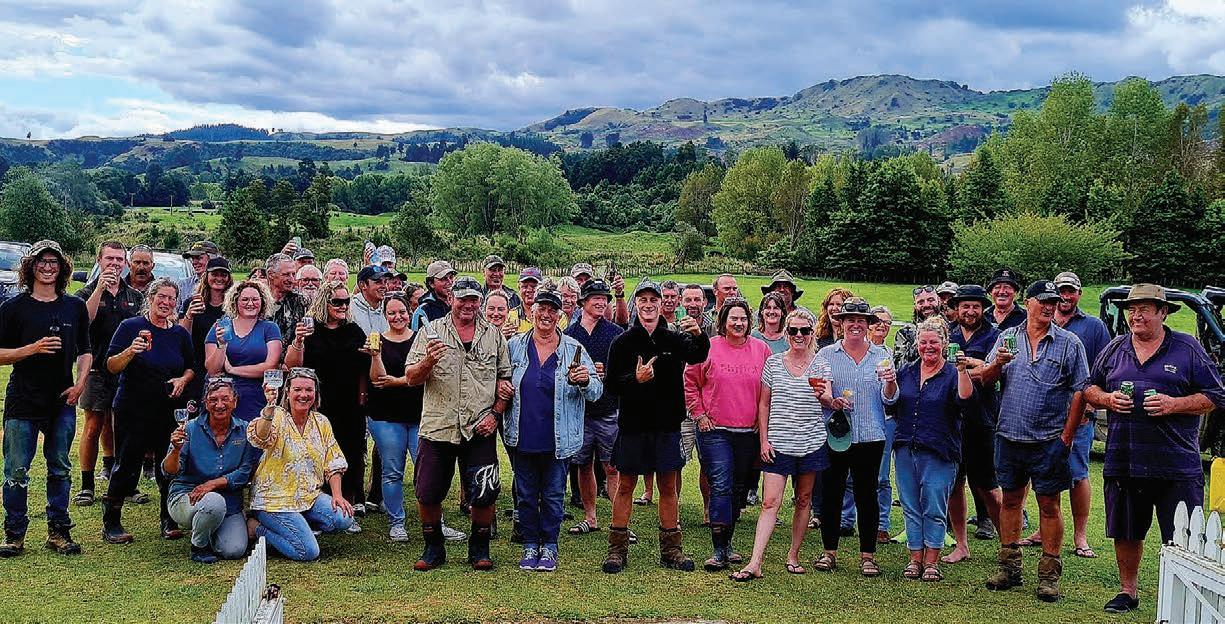
“I reckon it’s brought out the best in our community. That’s the
upside to farmers. They are so resilient and resourceful.
“And all the donations have been very humbling, We’ve had meat from Silver Fern Farms, home baking from Auckland, meals from Tikokino and food parcels from Taupō.
“I can honestly say I’m proud to be a New Zealander because the generosity and compassion that’s been shown from all over has been unbelievable.”
Murphy, whose husband Robbie Schaw manages the Presbyterian
Pātoka isolated and without electricity for two weeks, it became a useful tool for communicating with the outside world. Followers increased from 13,000 to almost 16,000.
“I put up a post saying we were short of animal feed. We got absolutely overwhelmed with donations.
“The page has gone from strength to strength and it’s great when it can help support a community.”
Newall said the main things locals now need are reliable road access and support with decision making.


A causeway has been installed
at Rissington but access is reliant on weather conditions being right. No date has been set for when a Bailey bridge will be installed, which is frustrating locals.
“The adrenaline is wearing off now. People are tired and thinking about what is going to happen over the next few months and they’re getting quite down about it. We need to get feed in and stock out.
“The biggest help with mental health would be for the big bodies in farming to come in with practical solutions in how to help. “Without a reliable way of getting to town, we are in this no man’s land.”
Support East Coast-owned Arohiwi Station, said her nursing skills have been well used in recent weeks dealing with minor injuries received by locals as they go about repairing their farms.
Te Whata Ora –Health New Zealand has granted standing orders, which enable her to administer or supply certain medication without a doctor being present.
“That’s been amazing for the community because of the limited access. Being able to receive basic
care without having to travel has been a bonus.”
Murphy said the focus is now on improving access to the area so farmers can move about more freely, but also make plans to repair farms and move stock from their properties.
A temporary causeway has been installed at Rissington but its use was dependent on river levels.
“Things are slowly starting to happen but it’s going to take a while,” she said.

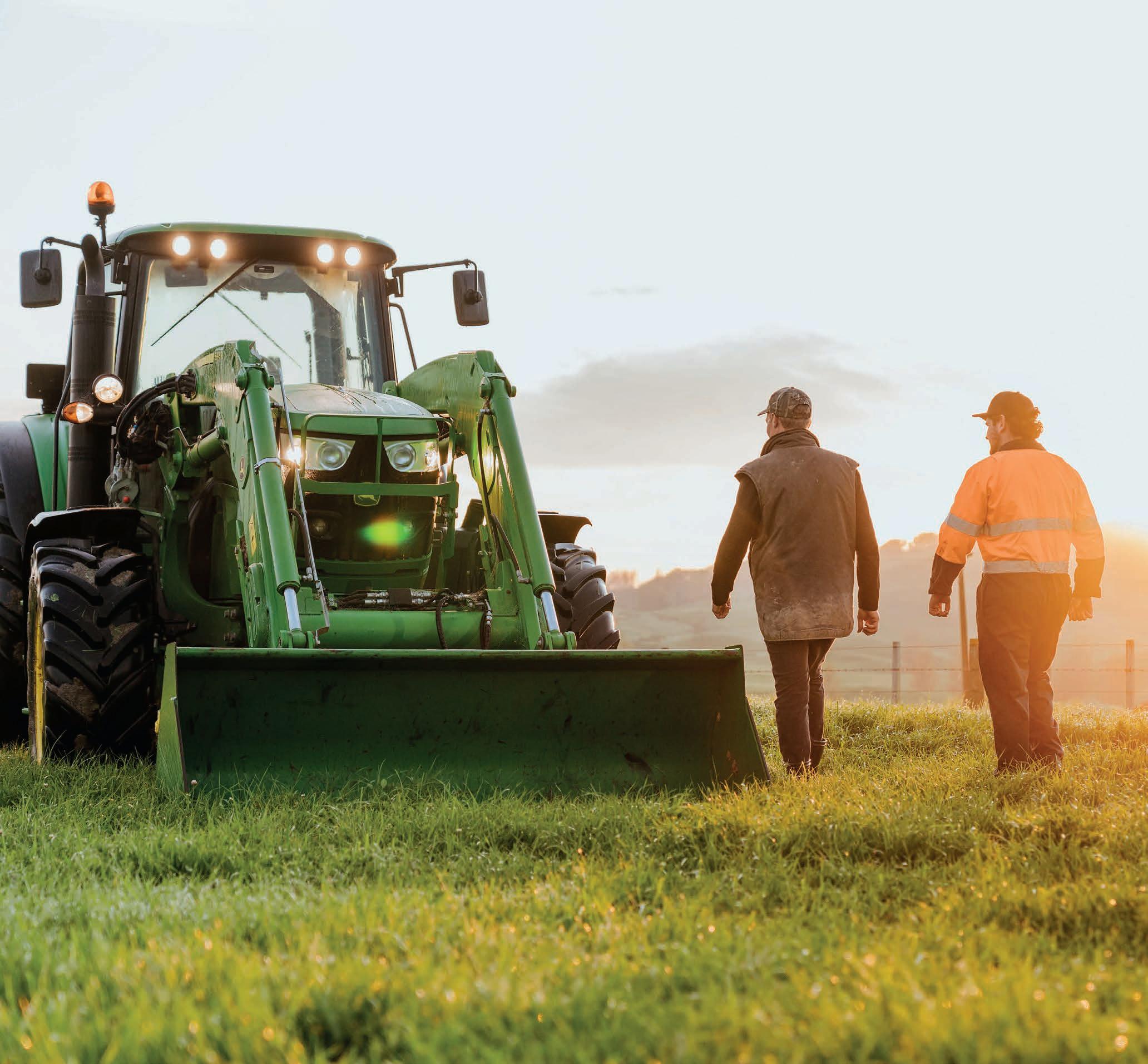


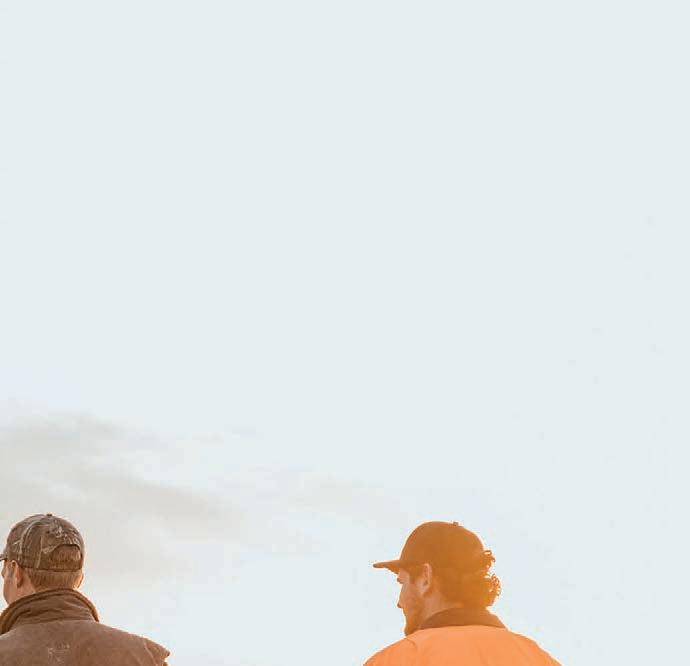
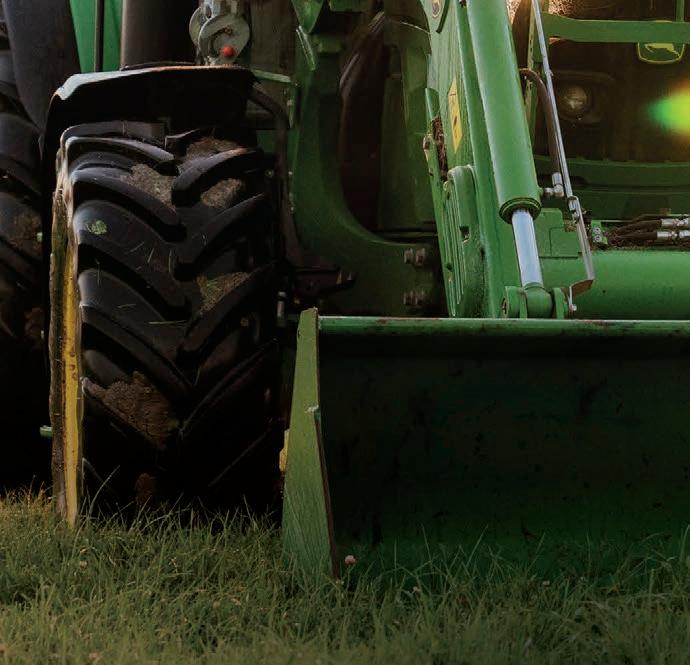



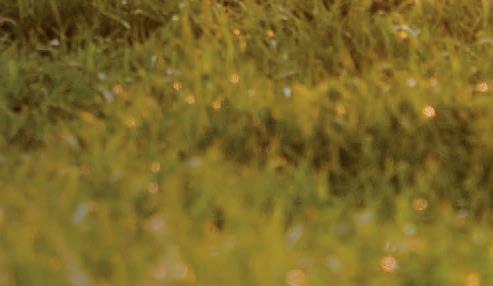



ATAIRĀWHITI roading project overseen by a community isolated by Cyclone Gabrielle could set a precedent for rural communities elsewhere wanting to re-connect with the rest of the country.
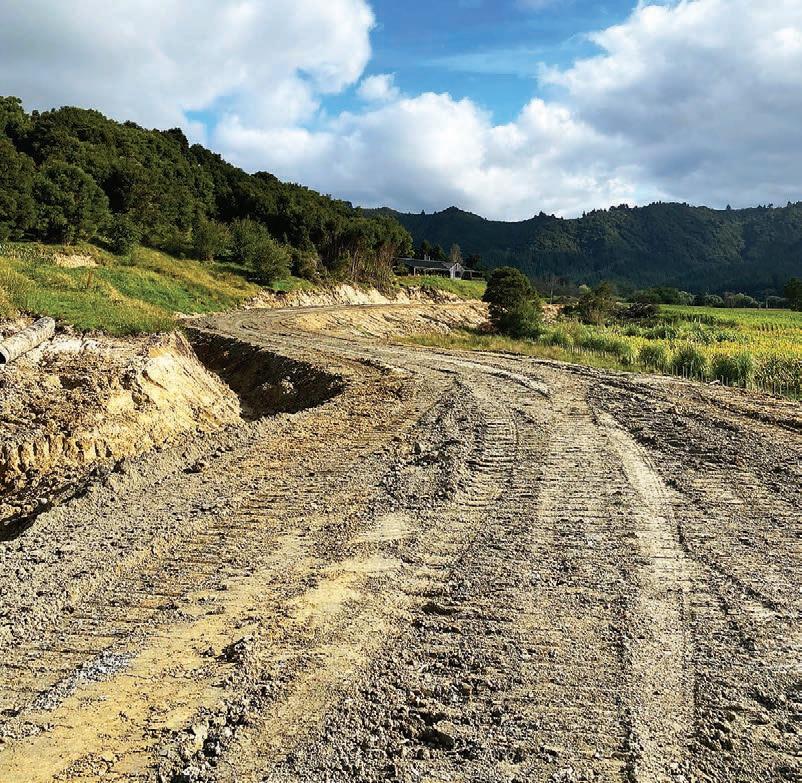
The cyclone left farmers, community and iwi in the Tokomaru Bay region isolated to the north and the south, thanks to the loss of a major bridge on the Hikuwai River towards Gisborne and a major slip to the north.
But an initiative between local forest road construction company Kuru Contracting and iwi landowners has heavy machinery
busily forming a bypass route in the Three Bridges district. The new road will leave state highway 35 at the destroyed Hikuwai No1 bridge, re-connecting with the No 3 bridge 4km north.
The road follows farm tracks and a paper road along spurs crossing land owned by Pourau Incorporation.
An independent engineer’s report on the road project concluded the diversion is a good option, recommending normal gravel road practices be used considering the fragility of the landscape after recent events.
The project has proven a good morale booster for the battered community, with the Tolaga Bay-based contracting business providing plenty of heavy equipment.
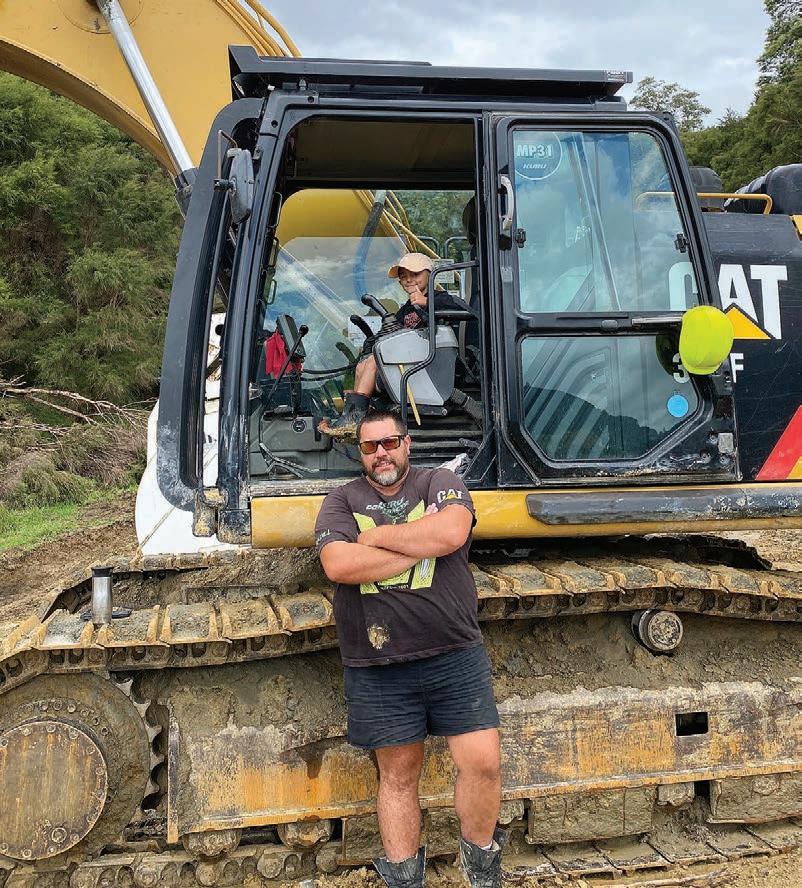
Val Milham, site manager for Kuru Contracting, said the wet weather that has continued postGabrielle has been a challenge, but he is confident the road will be completed by late March.
“Then we are straight onto the next job, there is no shortage of work up here at the moment.”
Kuru Contracting and Pourau Incorporation have just received written confirmation from Waka Kotahi that the roading authority will underwrite the project, subject to some conditions including access and safety considerations.
Pourau shareholder Kylee Potae said while the devil remains in the detail, the project could also provide a good exemplar of a cogovernance project.
“This is uncharted territory, but it’s a good challenge to have. My gut feeling is iwi will retain land ownership, but Waka Kotahi will have rights to manage the road on that land.”

She said maybe after recent events and so much road damage, agencies like Waka Kotahi may be compelled to take a wider lens on corridors now not always fit for purpose.
Federated Farmers transport spokesperson Mark Hooper said there is a high level of community support for the initiative, given that a proposed Bailey bridge project at the No 1 bridge will not be capable of handling heavy traffic.

“For many farmers in the district it is not so much about getting feed into their farms, it is about being able to get stock off. If your water reticulation and fences are gone, you have to get that stock off.”
Kuru Contracting is experienced in forest road construction, with strong family links to the district. Hooper said while the proposed
Kylee Potae Pourau shareholderBailey bridge would still be welcome, the new route will provide quicker access, and a viable alternative route should future weather events damage or destroy the bridges.
“The No1 bridge, it is a big bridge at 90m long and requires a special Bailey bridge to replace it, while there is thought the No 2 bridge may have also been compromised.”
As other rural communities, including Patoka and Kaiwaka in
Hawke’s Bay, continue to grapple with the prospect of lengthy isolation, Hooper said the Hikuwai project could also provide an incentive for rural communities to consider how they remain connected in future.
“There is a question here about responsibility and authority.
“It used to be local roads boards had the authority to do local repair jobs. We have got ourselves caught in this system where the process requires a work order application, a traffic plan, an engineers’ report, a contestable funding application.
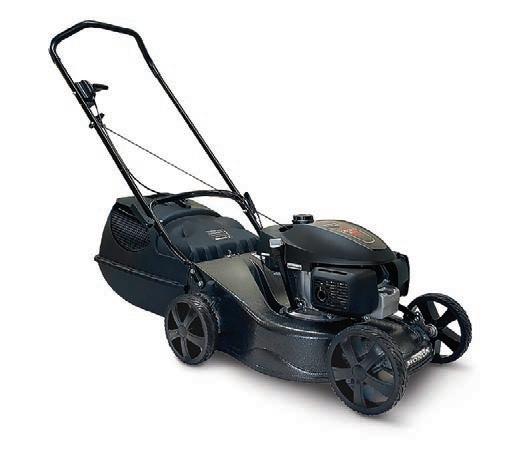
“Firms are contesting on lowest cost, often lacking experienced staff.













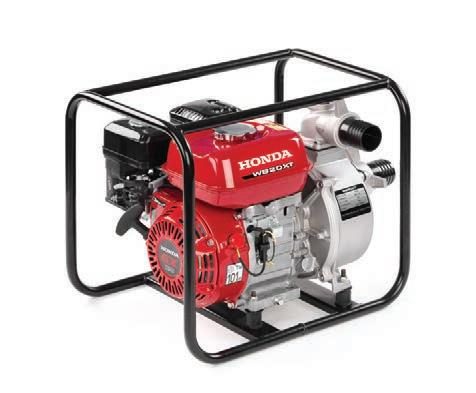

“An element of community ownership and responsibility is quite important. Small local operators used to do these jobs on local roads.”
He believes it could be time to re-assess the entire local roading approach in light of events like Gabrielle and Hale.

This is uncharted territory, but it’s a good challenge to have. My gut feeling is iwi will retain land ownership, but Waka Kotahi will have rights to manage the road on that land.














technology as it becomes available.
NEW Zealand farmers need accelerated progress on technology to help meet 2050 methane targets or face having “large reductions” of stock, says Parliamentary Commissioner for the Environment Simon Upton.


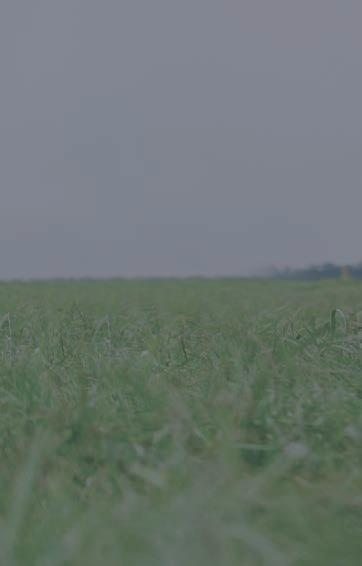
Speaking at the recent New Zealand Agricultural Climate Change Conference in Wellington, Upton outlined the challenges facing livestock farmers as they attempt to meet the legislated target to reduce biogenic methane emissions by 10% by 2030 and 24–47% by 2050, relative to the 2017 level.
Upton said promising new mitigation technology is in the pipeline – including methane and nitrification inhibitors, breeding low-emission sheep and cattle, low-emission feeds and feed additives, and “the Holy Grail, a methane vaccine”.

All are at different stages of development and each has its own challenges and barriers to overcome.
“But it is clear that without accelerated progress on some of these technical fixes, the only way we will meet our 2050 methane

target will be through very large reductions in stocking rates,”
Upton said.
“The work being undertaken by our science and research organisations on reducing agricultural emission is therefore a critical component of New Zealand’s climate change policy.”
Upton agreed with the government and Climate Change Commission’s move to introduce targets to reduce emissions.
“I would simply observe that the current target of 24-47% reduction

NOT CONVINCED: Simon Upton has ‘grave doubts’ about New Zealand’s reliance on forestry offsets as a way of meeting emission targets for fossil carbon dioxide.
by 2050 is so wide a range that the scale of transformation expected from the primary sector is very unclear.”
If the 2050 target is updated, he would encourage the government to choose a narrower range. A solid consensus is needed on ways to meet the targets. Reductions in emissions from livestock could be reached from two strategies, lower stocking rates and reducing emission per animal through changing management practices and using new


He said he has “grave doubts” about NZ’s reliance on forestry offsets as a way of meeting emission targets for fossil carbon dioxide.
“We should wean ourselves off this option.”
“On the other hand, I have suggested that using whatever forestry stock we generate to offset the warming caused by our agricultural emissions might be more justifiable.”
However, the number of trees needed to offset the warming from a given herd of animals is not small, and could only ever be a part of the solution.
Upton said international collaboration will also be vital in the race to meet targets.
“However we arrange things, we must avoid a convoluted labyrinth of governance arrangements crippled by risk aversion and the temptation to second-guess those most familiar with the field.”
Upton said high income international markets are taking greater interest in the emissions footprint of their food and drink. Being able to show that NZ products are associated with the lowest possible emissions will be essential if the country is to continue to be a preferred supplier.
He said the government’s
commitment to help fund emissions solutions presents a significant subsidy, but one he considers justified. If the research opens up new mitigation opportunities the next challenge will be to get them adopted.
The current target of 24-47% reduction by 2050 is so wide a range that the scale of transformation expected from the primary sector is very unclear.
Simon Upton Parliamentary Commissioner for the Environment“Putting a price on agricultural emissions should be designed to incentivise the uptake of less-emissions-intensive management practices. That’s how environmental taxes are supposed to work.”
When setting the level of any levy, regard has to be given to the availability of mitigation options. “There is little point in using economic tools to incentivise behaviour change if there are no ways to change behaviour. Equally, if new mitigation options arise, levies should rise to expedite their uptake.”
Optimising fertility and improving weight gains in their herd are the priorities for 50/50 sharemilkers Mel and Ben Lilley of Ashburton. MARKS-MIN ZMSC with B₁₂ delivers trace minerals and B₁₂ to support reproduction, growth and immunity in dairy cows and young livestock. To

“ The gains we’ve seen are better reproduction, better six week in-calf rate and less empties.” Mel Lilley, Mid Canterbury
being tailed under six months of age to have their tails no shorter than the distal end of the caudal fold.
annual requirement for southern farmers.
SOUTHLAND contractor

Lachie McCall is in no doubt about why so far this summer he has dipped five times the number of sheep for flystrike that he normally does.
It is due to the longer tail required to be left at tailing, McCall said.
McCall said normally he would have dipped 50,000 sheep by the end of February.
By that date this year he had dipped 260,000 due to the greater prevalence of flystrike hitting sheep of all ages, all wool length and on all parts of their bodies.
He said the longer minimum tail length introduced in 2021 is creating a major issue, allowing more faeces to accumulate – and that attracts flies.
In one mob he crutched 300 sheep struck around the tail. In a second mob of older sheep that had shorter tails, he treated two.
The aggressive Australian green blowfly arrived in Otago and Southland several weeks earlier than usual, compounding the problem.
Scott Chittock of Otago-based Chittock Dipping has also been busier than usual. He said flystrike has progressively worsened each year to the point where it is now as much an issue in the south as it is in the North Island.
Farmers need to be alert and proactive, he said.
Chittock agreed that the longer tail length is accentuating the problem, especially in lambs.
“It’s not a fly swat that works,” he said.
The regulations require sheep
It is recommended that the tail be long enough to cover the vulva in ewes and a similar length in rams.
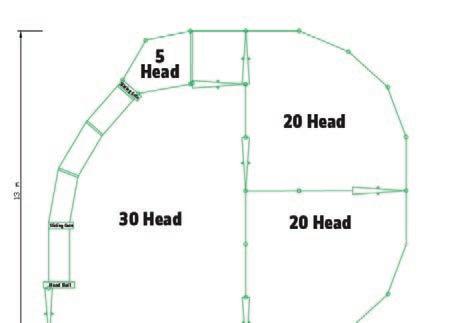
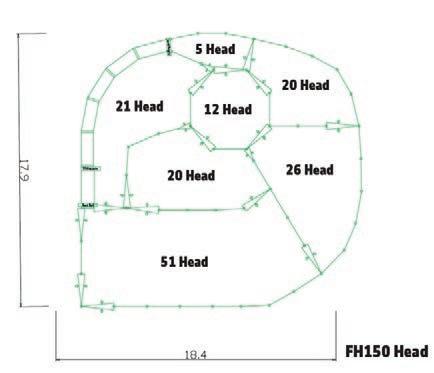
Donna Hamilton, a vet with Vet South in Gore, advises farmers to check their rams, which can end up with open wounds from fighting at this time of the year and become susceptible to strike.
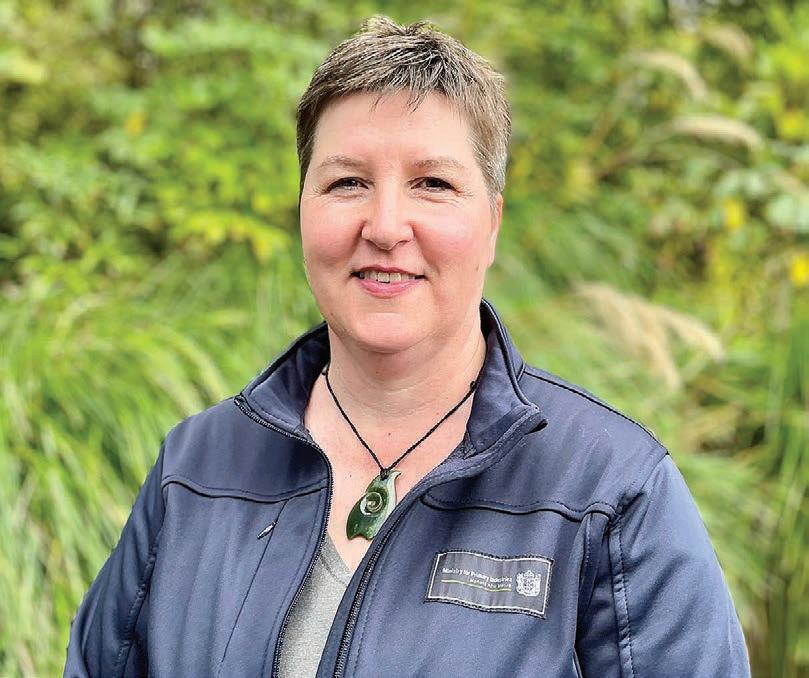
Ewes that have been struck over summer can struggle to get back in lamb, she said.
I’m hesitant to say there is a link.
Justin Muschamp, a vet with Vetco in Edendale, said from previously selling very little product to treat or prevent flystrike, in recent years they have been struggling to keep up.
A series of warm, humid summers could make this the new norm for southern farmers, he said.
Dean Rabbidge, chair of meat and wool with Southland Federated Farmers, said he has also heard anecdotally that the longer tail length is adding to the problems.
He shore all his sheep in early January as a preventative measure and said other farmers are doing the same.
His Otago counterpart, Logan Wallace, dipped his short-woolled sheep in early February, and said a series of hot southern summers could make flystrike prevention an
Wallace has adopted the longer tail length for several years and said he has not noticed any more dags.
Dr Carolyn Guy, the Ministry for Primary Industries’ director of animal health and welfare, said the aim of the regulations is to clarify who can carry out surgical procedures and how they should be done.
It has been recommended practice since 2005 and is comparable with requirements of some of New Zealand’s trading partners, she said.
Flystrike can result from factors in addition to tail length, such as climate, diet and nutrition, parasites influencing the consistency of dung, breed of sheep and length of wool.
“This summer has been particularly warm and wet in some areas of the country, which can increase the likelihood of flystrike,” Guy said.
Research has shown that flystrike risk is increased by having a tail either too long or too short, which is why the regulation settled on an intermediate length.

Will Halliday, Beef + Lamb NZ’s senior adviser on biosecurity and animal welfare, said ideal weather patterns mean flystrike is more widespread, earlier and harder hitting this summer.


He said hot, dry and humid weather has created greasy wool, an ideal environment for blowflies.
Halliday said he has not seen evidence longer tails add to flystrike, saying there is research that this actually reduces urine staining, which can attract blowflies.
“I’m hesitant to say there is a link.”

WET
Dr Carolyn Guy, the Ministry for Primary Industries’ director of animal health and welfare, says this summer has been particularly warm and wet in some areas of the country, ‘which can increase the likelihood of
days of moving instead of 60 days before doing so.
MEASURES are being introduced to help Hawkes Bay farmers battling the effects of Cyclone Gabrielle and needing to move cattle or deer from TB movement control areas.
Mark Neill, TBfree’s chief adviser for disease planning and integration, said given the pressure on farmers and animals and the loss of fences and handling facilities, they have tried to find ways to accommodate those needing to quit or move cattle and deer from movement control areas.

He said those within these areas needing to shift stock that cannot be tested before moving, can apply for a permit to test those animals for TB within 60
For those without a clear TB status, Neill said, TBfree is aware of the welfare concerns for both animals and farmers and while options are more limited for these farmers needing to quit stock, they will work through options on a caseby-case basis to mitigate risk.
He said there are options other than sending these animals to slaughter, such as quarantining and isolating stock on the receiving farm.
As of March 1 there are eight infected herds in Hawke’s Bay, three herds with one clear test, 34 herds cleared of infection and four herds being investigated. Neill urged those farmers needing advice or options to contact the TBfree support centre on 0800482463.
ARECENT successful trial of wood fuel to fire Huntly power station has spun the market on its axis, say biofuel boosters, providing a large industrial user capable of underpinning New Zealand’s emerging biofuel sector. With this could come a solution to the forest slash issue bedevilling the industry.
Genesis Energy has just completed a successful trial using 1000t of charcoal-like “torrefied” wood fuel pellets to fire its boilers at Huntly power station.

The power company sourced pelletised wood fuel from a Canadian supplier to replace traditional coal, crushing them and introducing the material to the boilers as it would for coal.
Genesis partnered with Fonterra to trial the charcoal-like wood pellets, with the two companies representing the largest processors in New Zealand seeking to move from coal-fired boiler use.
Genesis interim CEO Tracey Hickman said after the week-long trial that the fuel may not prove to be the silver bullet to replace coal, but the company is compelled to explore biomass options.
Brian Cox, executive officer of the Bioenergy Association of NZ, said the trial’s success, and any large-scale uptake of the pellets by the two companies, signals a move from a supply-based to a demand-driven market dynamic.

“Suddenly forest owners can see that demand could be steady, and large,” Cox said.
Estimates on potential demand from Genesis are that Huntly would require on average of 5 petajoules (PJ) of biomass energy a year. Available wood residue in NZ is estimated at 50-150PJ, with availability depending upon access and economics.
To source that energy from forests alone would require about 22,500ha to create 250,000t of black pellets.
Having a biofuel option for Huntly would retain an invaluable energy backstop that, although important for providing power over dry years, is now problematic when its coal-fired emissions are considered.
Having a sustainable biofuel option could push the station’s life out at least another decade, possibly two.
Meantime Fonterra is on a pathway to “de-coal” its boilers by 2037, with only six of its 29 plants remaining coal-fired by the
start of the next dairy season.
“They are having to move fast, and are doing one to two a year, and this is being met with a good response from the biofuel industry,” Cox said.
Estimates are that a wholesale move to wood fuel by Fonterra would require about 77,000ha of forest for sourcing low-grade logs as an energy source.
Cox’s own estimates are that a quarter of the low-grade logs currently exported would be enough to fuel Huntly.
“We do not have to grow a heap of new trees to do this. Diverting a log from low-grade export gives you better yield if it is used for
wood fuel, as you use it all, not just a set length of it. It’s 100% usable.”
He said there is no doubt this is already happening with lowgrade logs in the South Island, and he expects it to become far more common in coming years.
Forest Owners’ Association technical manager Glen Mackie told Farmers Weekly while the news at Huntly is encouraging, research on making such pellets in New Zealand remains relatively new.
“I am not sure we have a good handle yet on how far a torrefied wood pellet can be transported economically. There is a rail head at Wairoa, and Huntly is on the main trunk line.
“It could be the Industry Transformation Plan is the vehicle for getting a plant off the ground on the east coast.”
Eastland Wood Council CEO Philip Hope said members have for some time been investigating new initiatives to help solve both the slash issue and meet NZ’s biodiversity goals.
“A wood-pellet processing facility is one option some of our members have put forward, which may form part of the solution to the woody debris issue.
“However, there are some limitations including the amount of material that may be required, issues with transportation to market, and the cost to set it up.”
Scion researchers are also working on prototype wood pelletising technology that can be deployed in forests to convert the slash into useful wood fuel pellets.
A project in the central North Island is due to test the technology on site in coming months.
FONTERRA has welcomed the success of Genesis’s Huntly wood fuel trial, and what it may mean for the companies’ combined energy options.
This means they [Genesis] can extend Huntly’s life and we can use our existing boilers, which is of course a lot cheaper than replacing them.
Fraser Whineray Fonterra

Fraser Whineray, Fonterra’s chief operating officer, said the trial confirms the two companies could use essentially the same fuel source for different boiler types.
Fonterra already uses a type of wood pellet in some of its factory boilers, and plans to have all coalfired boilers gone by 2037.
“This means they [Genesis] can extend Huntly’s life and we can use our existing boilers, which is of course a lot cheaper than replacing them,” he said.
The results provide assurance to the upstream market that there is a definite application for the wood fuel.
Whineray also said having two large corporate users with very different seasonal demand profiles helps spread the risk for a company wanting to invest in the wood pellet technology.
He said Genesis’s efforts in trialling the pellets have been admirable, given that any issues around safety and potential damage to a major national asset are always a risk in such a trial.
He suspected the pellet technology would have the greatest application in Fonterra’s South Island plants, but an endto-end study would be needed to assess the logistics of supply, and where raw materials would be sourced.
Forestry companies have expressed an interest in a pellet plant in Te Tairāwhiti as means to deal with forest waste issues. Whineray said if there is to be
any transporting of fuel product, adding value to its low-value raw material would have to happen close to that waste product’s source.
By his estimates Fonterra would require access to about 77,000ha of low-grade logs and slash from a forest on rotation to replace the company’s entire coal needs.
Suggestions that the government could contribute to kick-start a plant could come into play once there has been a full analysis of the wood fuel’s economics, he said.
Suddenly forest owners can see that demand could be steady, and large.Brian Cox Bioenergy Association NZ BURNING: Fonterra COO Fraser Whineray says the wood pellet technology’s compatibility in boilers means Fonterra and Genesis can help underpin demand for the fuel.
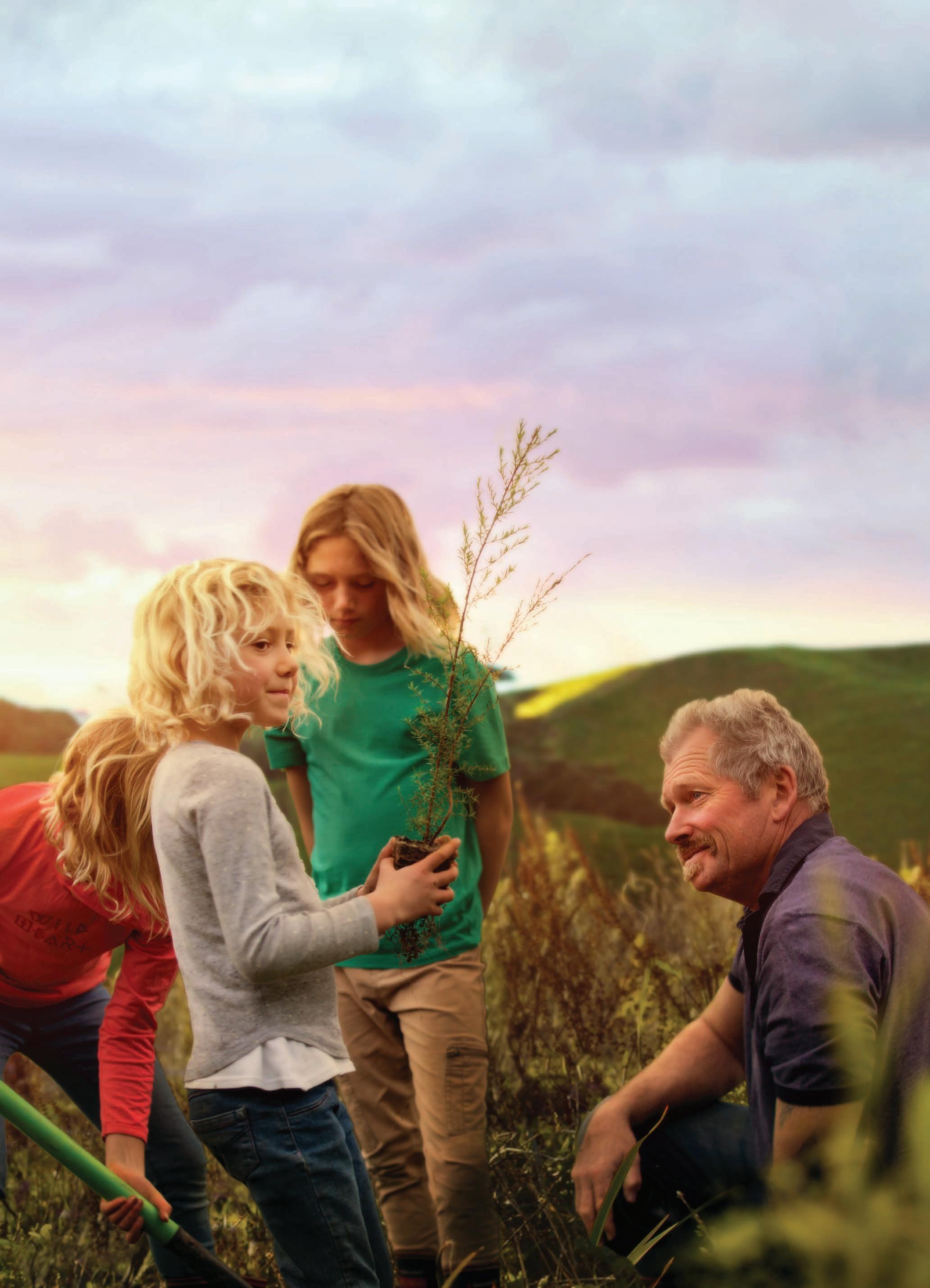



GROWING demand for strong wool use in domestic innovation is projected to grow annual domestic production of New Zealand wool products to 40,000 tonnes of clean wool by 2028.
Six months into an $11.4 million joint industry and government programme to lift strong wool out of the doldrums, industry organisation Wool Impact is forecasting a doubling in the domestic use of strong wool in the next two years.
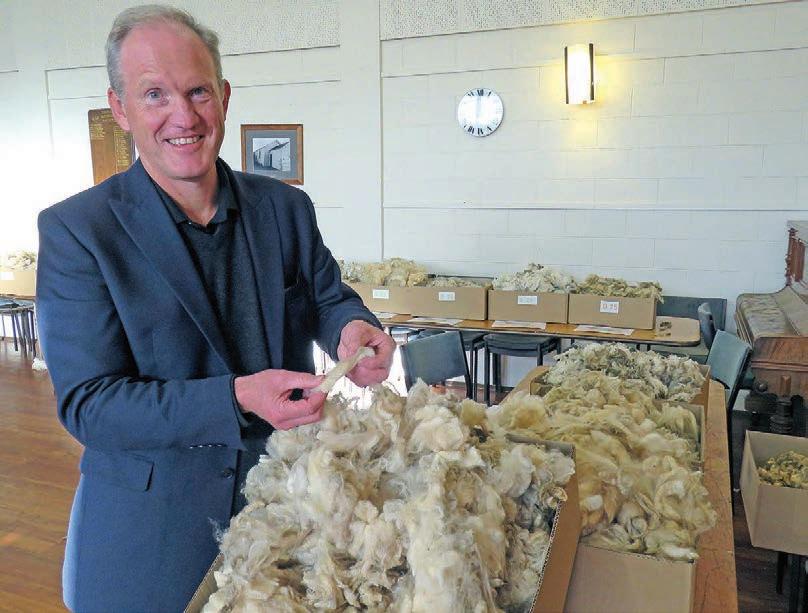
The projected growth stems from domestic innovation increasing demand in the usage of domestic wool across several market categories.
The information compiled by the industry body is based on data collected from domestic manufacturers during its first six months in operation, chief executive Andy Caughey said.
“We foresee a doubling in the domestic use of strong wool in the next two years, potentially moving

to an annual domestic production of NZ wool products using around 40,000t of clean wool by 2028.”

Caughey said most NZ wool is exported but returns to growers have reduced because of less international demand, compounded by the impact of covid.
However, he said Wool Impact is seeing the tide turn as local brands take matters into their own hands by manufacturing wool-based products domestically.
“The perception of wool is changing as brands see it as a natural, sustainable material that offers innovation potential.
“Proximity to the source means local brands are acutely aware that without sustainable farmgate prices the supply of quality wools will continue to decline resulting in a negative impact on the diversity of Aotearoa’s land use and the robustness of our rural communities.”
Wool Impact has been canvassing local brands and businesses as well as global markets to understand where new opportunities exist for increasing use of strong wool.

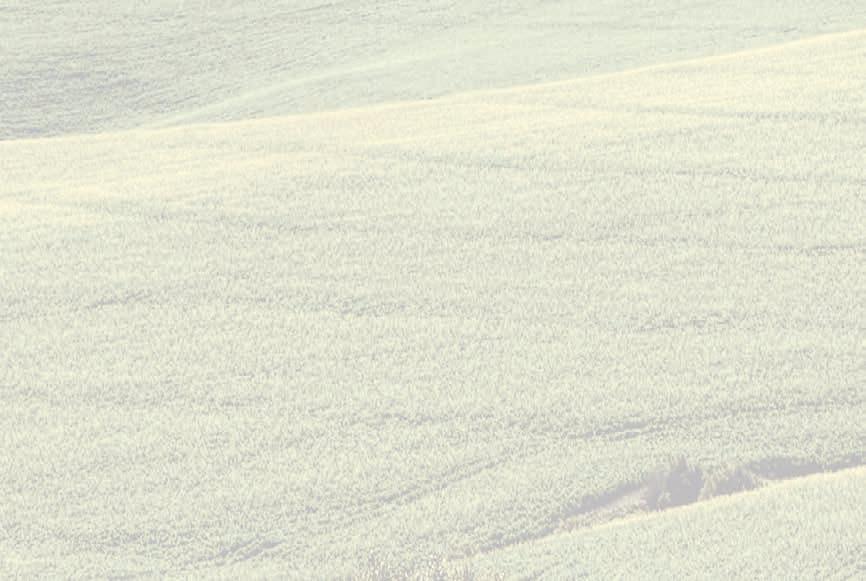
New Zealand strong wool is
typically used in carpets and rugs, with NZ’s carpet brands experiencing increased domestic demand – which they are well placed to meet with local manufacturing, Caughey said.
Wool Impact is also seeing growth coming through new and emerging market categories including insulation, acoustic tiles, furniture, flooring innovations and in the future from deconstructed fibres such as particles, powders and pigments.
“We’re seeing brands like Big Save, Honest Wolf, Wise Wool and FLOC using wool in innovative ways.
“If the predictions of brands actively advocating for wool in their product ranges are realised then we will see a significant impact on wool demand and price with the added benefit of reducing our reliance on some of our volatile export markets,” Caughey said.
Representing wool as a responsible and sustainable fibre for consumers is crucial to increasing the demand for strong wool.
Spreading the word about the high standards of environmental
It is brands and sustained partnerships that will improve
Andy Caughey Wool Impact

care and animal welfare among NZ farmers was made possible via the extension of the Farm Assurance Programme to include wool late last year.
Wool Impact has funded and supported the establishment of this assurance programme as a lever that will build brand trust
and value in NZ wool globally.
“We’re very focused on supporting brands especially as they expand into global markets,” Caughey said.
“It is brands, and sustained partnerships between them, their value chains and growers, that will improve wool prices.”

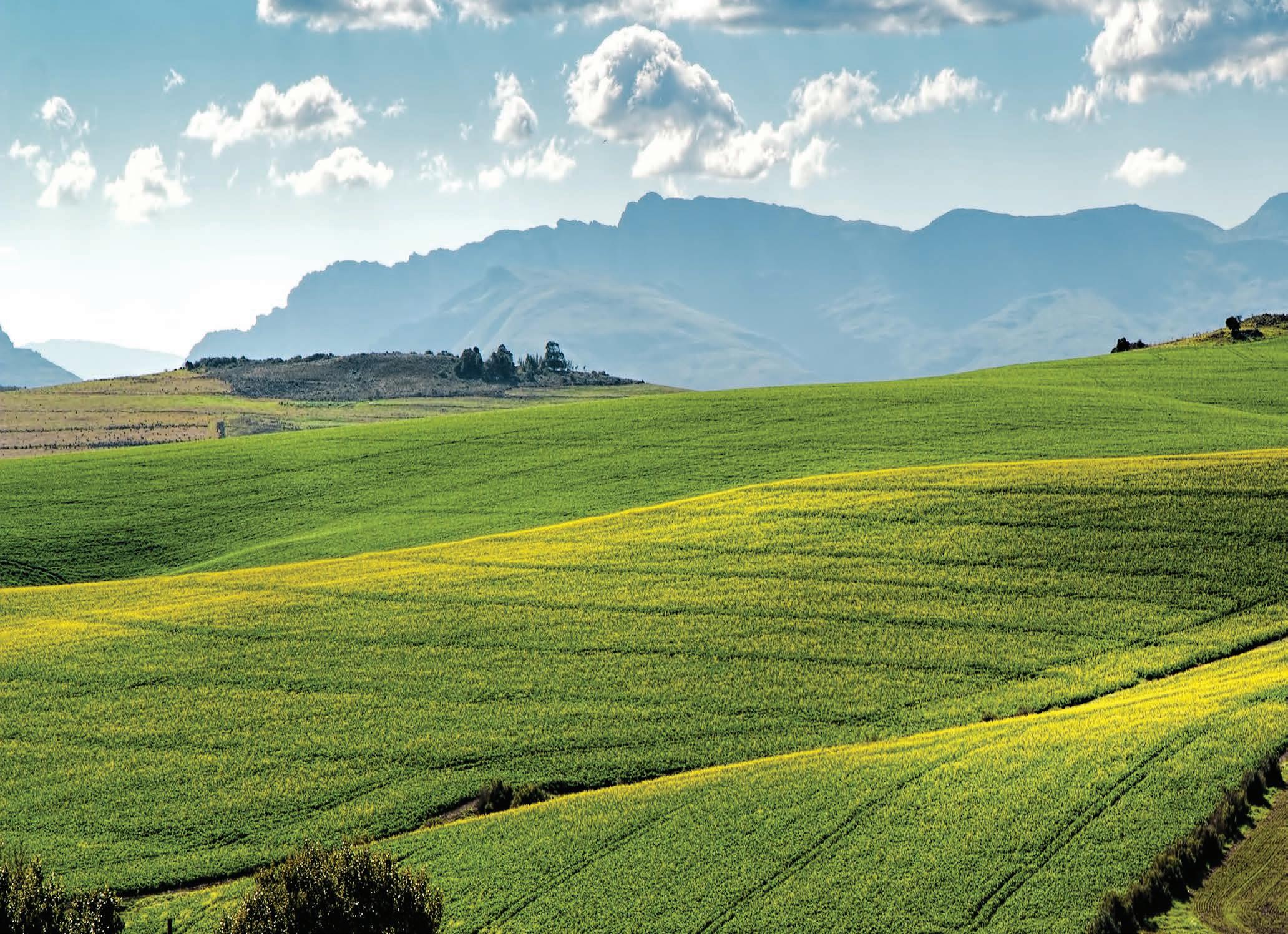
Wool Impact is a collaboration between the government and sheep sector partners under the Sustainable Food & Fibre Futures fund to grow revenues for wool.
The three-year programme has a $6.9m investment from sector partners and government investment of $4.5m.
Provincial New Zealand is in deep trouble. We have long lost any political influence. We are being destroyed by unnecessary costs, unreasonable regulations, frustrating red tape, new taxes and many of our own leaders are undermined by government imposed compromise.
A New Zealand Rural – Provincial Party, An idea whose time has come

Traditionally, National has been NZ’s provincial voice. Under MMP however, National has had to campaign for the urban ‘soft-centre’ vote in order to have any chance of getting into power. This is just the reality of politics under MMP and if National were to get really serious about the provincial vote it would risk alienating the much larger urban voting bloc. Yet there has never been a more critical moment in our history for provincial New Zealand to win an effective voice in Parliament.
Provincial NZ employs 12% of our workforce but produces 82% of our export income. We feed NZ and another 40 million people as well and we do it with the world greenest footprint!
Yet the provincial heartland of New Zealand has gone from being ‘taken for granted’ to being ignored and now ‘vilified’. The support the Groundswell advocacy movement has received has highlighted rural feelings in NZ. It is time to say ‘NO MORE’. It is time Provincial New Zealand found its voice again.
1. To achieve Parliamentary Political representation for Rural and Provincial NZ

2. To help change the government by providing additional MP’s to support a National/ Act coalition.
3. To support National/Act without taking seats off them!
1. HeartLandNZ will stand up against unworkable regulations
2. HeartLandNZ will stand up for healthy communities
3. HeartLandNZ will stand up for an open and transparent democracy
1. HeartLandNZ is asking you to strategically split your vote. HeartLandNZ is only seeking your electorate candidate vote, then if you were to give your party vote to National or Act their candidates can still be seated via the party list. (Currently 4 out of the top 5 ranked National Party shadow cabinet are list MPs).
2. When a HeartLandNZ candidate wins an electorate, parliament is forced to create an additional seat in the house (an ‘overhang seat’). If HeartlandNZ won say 6 seats, parliament would have 126 seats and the balance of power would have swung to the right.
3. Every electorate HeartLandNZ wins therefore increases National/Acts chances of governing!
With HeartLandNZ, Provincial New Zealand can get its own strong voice in Parliament. The economic damage done by the left can be rectified. Real change is needed. That happens in Parliament. The regions need a strong voice in a coalition that will deliver real results.
If you want real change become part of it. We are seeking to build this party throughout Rural and Provincial NZ. Join us now.



CARPET and rug manufacturer Bremworth has reported a revenue lift in its largest market as it progresses towards a five-year strategic transformation that will see it focused on New Zealand wool and natural fibres.
Latest unaudited financial results for the six months ending December 31 2022 show a lift in revenue and gross profit for the core carpet and rug business over the first half of the year.
The company has invested in developing its brand equity, positioning itself for future growth across Australasia and has recorded an 8% sales lift in the trans-Tasman market over the period.





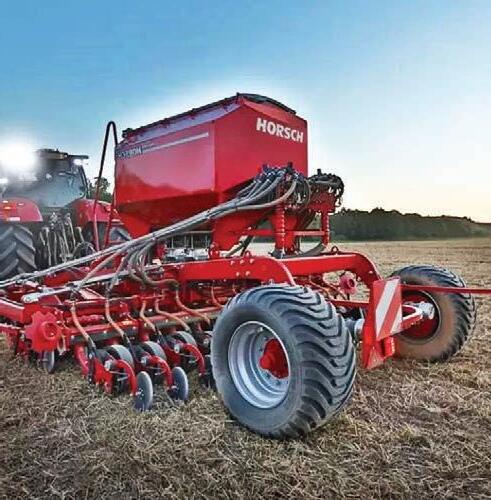

The revenue increase comes despite an earlier move away from low-margin, high-volume commercial business to focus on premium residential consumers.
Bremworth chief executive Greg Smith said the revenue improvement in Australia is a result of significant investments in marketing the brand, improving sustainability and investing in technology upgrades.
While the cost of investments
has been reflected in a $778,000 loss for the half year, Smith said the company’s annual revenue from its core carpet business continues to grow and he is confident the longer-term outlook remains positive.


“The feedback we are getting from our trade partners and market research into consumer perceptions is that wool carpet is increasing its share of the flooring market at the expense of synthetic alternatives.
also coinciding with improvements in our margins.”


The company increased its inventory of finished product by 6% to more than $29 million during the period.

Increased investment in stock on hand has helped create a stronger position ahead of an expected spike in demand from North Island homeowners as a result of Cyclone Gabrielle and will cushion some of the impact of the closure to the Napier Plant in the short term.

“While the full extent of the damage to our yarn processing facility in Napier is unknown at this stage, Bremworth has advanced arrangements with both domestic and international suppliers who are prepared to step in to meet our needs while we work through the impact to our factory.”
“While profitability for the half year is down on last year, there are obvious signs that the company is making significant headway in the key Australian market despite macro-economic challenges across the industry.

“The increased sales revenue is driven by the strong performance of our core carpet and rug range. Our expanded distribution and instore presence within Australia is
Other results from the period show a decline in revenue and gross profit from Elco Direct, the company’s wool-buying division as the geo-political impact of the war in Ukraine and China’s zero covid policy slows global demand.
“The Elco Direct business continues to grow its share of the direct wool buying sector and this provides the Bremworth carpet business with a significant competitive advantage in our core
raw material inputs,” Smith said.
“With factories in China now re-starting production, demand for NZ wool is seeing a slight recovery and we anticipate some improved operating conditions for this part of our business in the second half of 2023 as a result.”

% YEAR
Bremworth is also planning to introduce direct long-term contracts through its buying arm to support strong-wool farmers and ensure continuity of supply of good quality wool, with these plans scheduled for the fourth quarter.
We anticipate some improved operating conditions for this part of our business in the second half of 2023.
Greg Smith Bremworth
Abraham’s only previous Golden Shears Open final, when he cleared the 20 sheep in 15min 50.234sec in 2016.
CHAMPION shearer
Rowland Smith achieved the goal he’d set all season when he won an eighth Golden Shears Open shearing title in Masterton.
Capping three days of a feverpitched return of Golden Shears after two years of pandemic cancellations, and taking a break from driving his tractor in the Hawke’s Bay cyclone recovery, Smith won the right to represent New Zealand at the 2023 Golden Shears World Shearing and Woolhandling Championships in Scotland on June 22-25, where among the toughest opposition will be his brother, expatriate Kiwi Matt Smith, representing England.
Rowland Smith, who won the World title in 2014 in Ireland and 2017, claimed his eighth Golden Shears by more than three points from runner-up and Marlborough shearer Angus Moore, despite being only third off the board after a classic race for time honours on stand 1, 2, and 3.
Moore, in the Open final for the first time, but having earlier in the night won the multibreed PGG Wrightson Vetmed National Shearing Circuit final for a third time, bolted into the lead on the second sheep, and remained in front until the eighth when Masterton shearer Paerata Abraham hit the front and, shearing at a consistent pace of a little over 40 seconds a sheep, stayed there till the end, finishing in 15min 43.88sec..
It revived memories of
The fastest time final of all was when David Fagan shore 15min 27.4sec in 2003 with John Kirkpatrick second off the board in 15min 43.8sec, when they were ultimately winner and runner-up respectively.
Third place went to nearperennial beaten finalist and Invercargill shearer Nathan Stratford, despite being last to finish, in 16min 57.959sec.
Fourth was first-time finalist Hemi Braddick of Eketāhuna, Abraham was fifth and four-times winner Kirkpatrick was sixth.
Joel Henare, from Gisborne but living with his three children in Motueka, justified hot TAB favouritism to win a ninthconsecutive Golden Shears Open woolhandling title a wide margin from runner-up Keryn Herbert, of Te Kuiti.
Henare was unavailable for World championships selection, leaving what became one of the closet finals ever in a woolhandling final as four others fought out a team selection final.
The two positions were claimed by Candi Hiri of Gore and Ngaio Hanson of Eketāhuna, with less than a point covering the first three places, just cutting Foonie Waihape of Alexandra out of the trip to Edinburgh.
Hanson’s performance was one of three putting both Eketāhuna and her family on the map. She’s the sister of Open shearing finalist Hemi Braddick and Open woolhandling third-place-getter Ana Braddick.
Meanwhile, the New Zealand shearing team of southern trio Stratford, Stacy Te Huia and Leon Samuels staged an amazing comeback to win a trans-Tasman shearing test against Australian visitors Daniel McIntyre, Nathan Meaney and Sam Mackrill.
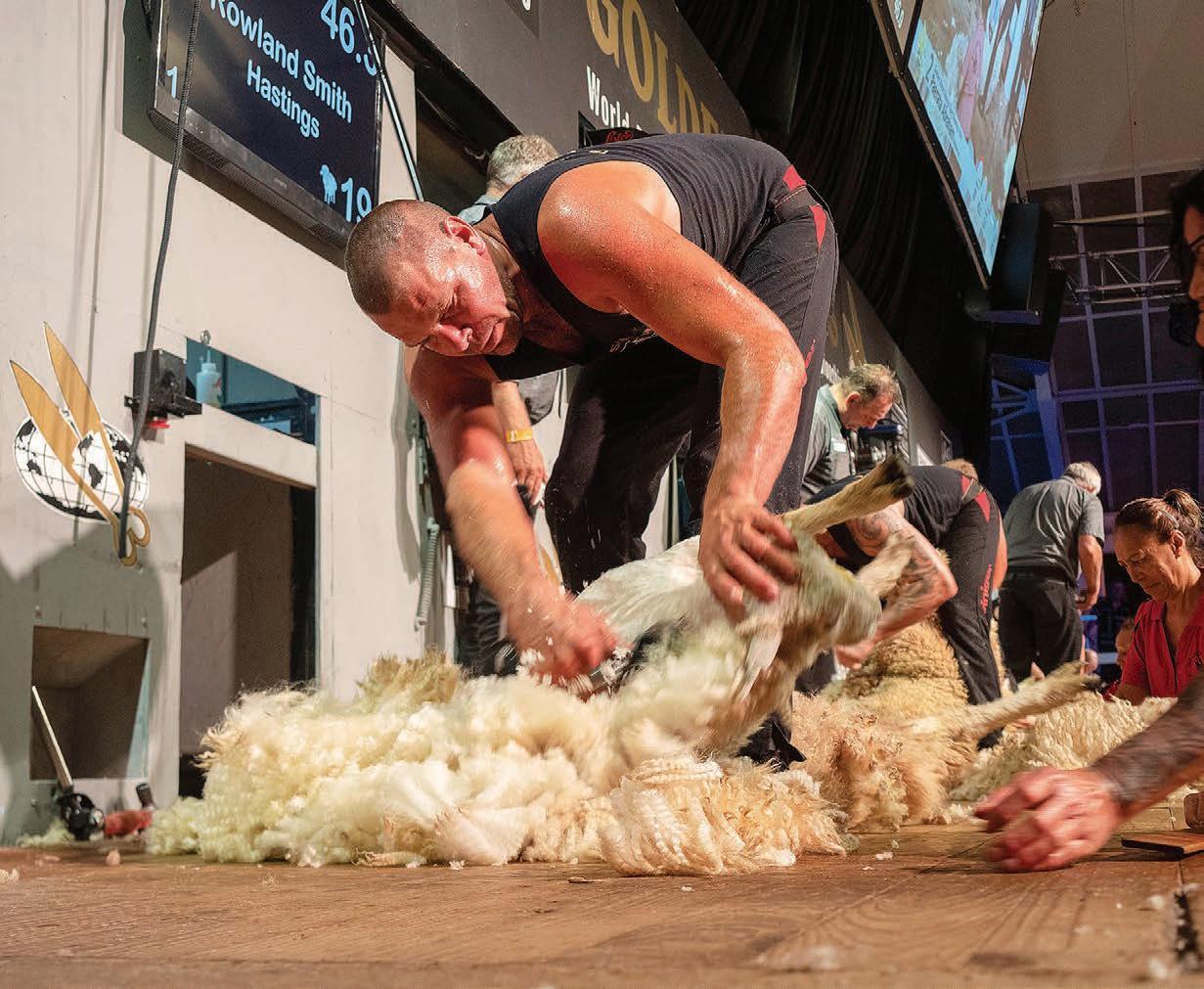
Smith won the right to represent New Zealand in Scotland, where among the toughest opposition will be his brother, expatriate Kiwi Matt Smith, representing England.
The black singlets had been given a sound beating in the season’s first test in Bendigo, Vic, in November, but sprung
the surprises by being in charge over the six merinos each that comprised the first half of the contest, followed by the New Zealand breed fullwools and second-shears.
The TAB had favoured the Australians, but it became payback also for the previous night’s surprise win over NZ in a woolhandling test.
Among lower grade triumphs, 21-year-old Abby Curnow of Bendigo, Vic, is the new Junior woolhandling champion, becoming the first Australian to win a Golden Shears woolhandling title in the 38 years since woolhandling was added to the Shears’ ribbon parade in 1985.
It also made it a double of the Junior titles for Australia, after 18-year-old Tyron Cochrane, of Goodooga, New South Wales, won
the Junior shearing title, the first Australian to win a NZ Golden Shears title since John Allan’s Intermediate victory at the Golden Shears’ inception in 1961.
The Senior woolhandling title was won by Rahera Kerr, of Hauturu, the Senior shearing final was won by Clay Harris, of Piopio, and the Intermediate shearing final was won by Will Sinclair, of Balclutha, both backed by recent winning form.
In the woolpressing, Masterton’s Goodger brothers again battled for the men’s singles title, with Jeremy scoring a 14th win, claiming the title back from brother Vinnie, winner four times in a row from 2017 to 2020.
The women’s title was won for the first time by Savannah King, of Eketāhuna, beating eight-times winner Fiona Healy in the final.
FMG MEMBERS
Like many Kiwi farmers and growers, FMG’s legacy goes back a long way. We’ve been around for over a century through rural New Zealand’s highs and lows, and we’re in it for the long-haul.
If you’re an FMG member then you have an opportunity to play a closer part in this legacy–and are entitled to stand for election to FMG’s Board of Directors*.
Our Directors play a critical role in supporting FMG’s continued growth, as well as its core purpose of helping to build strong and prosperous rural communities.
If you’re interested, read on and head to www.fmg.co.nz/ news to see if you meet the criteria needed.
CRITERIA
FMG’s Constitution and Director Member Election & Special Director Appointment Policy (the Policy) require that a third of all Member Directors retire by rotation at each year’s AGM. This year Tony Cleland and Murray Taggart are due to retire by rotation.
While Murray will be seeking re-election, Tony will be stepping down from the Board after 16 years of service to the Mutual. This means there are two Director positions, with one being contested by a current Director.
The FMG Board would like to acknowledge Tony’s significant contribution. Having Tony’s wealth of business knowledge and experience was invaluable in supporting FMG’s growth over the last 16 years and we wish him well.
*More detail can be found on www.fmg.co.nz/news or by contacting FMG’s General Counsel Lisa Murray lisa.murray@fmg.co.nz
We’re here for the good of the country.
MORE INFORMATION
If you would like to stand for FMG’s Board of Directors, please head to FMG’s website.
Here you’ll find all the information you need, including The Policy, which sets out the criteria for the evaluation of Member Director candidates, including current Directors. Applications to stand for election close on Wednesday, 26 April.
FMG’S ANNUAL GENERAL MEETING
FMG’s 2023 Annual General Meeting will be held on Friday, 25 August 2023 at the Harvest Hotel, Cromwell, Central Otago (6 Barry Avenue). FMG members will receive further details on this closer to the time, along with Member Election voting packs.
The amount of change facing farmers is unprecedented. A new age of farming is here. It’s the way New Zealand’s farming community bands together when the going gets tough that will never change.

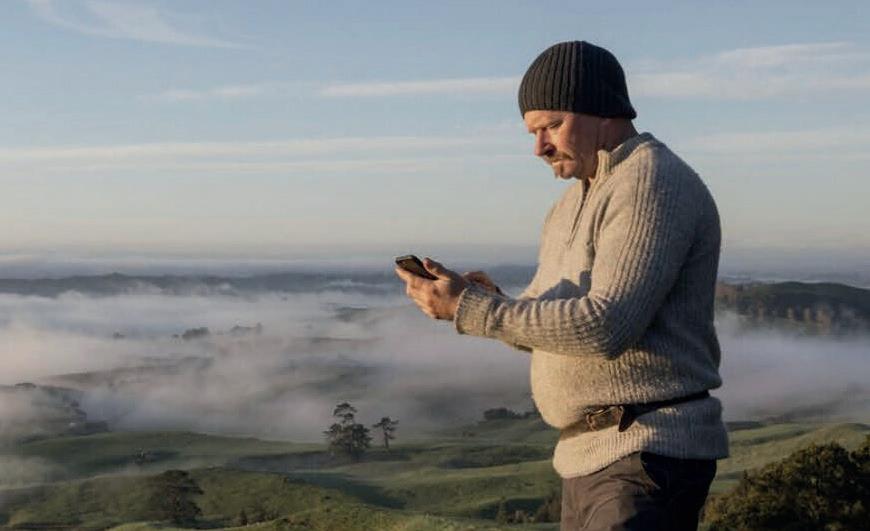
Recent events leave us in no doubt the climate is changing. Regardless of where you stand on the issue, the topic is not going away. Policy and regulation will continue to respond to the demands of our international markets to reduce the environmental impact of the food and fibre we produce. That’s just a fact.
All farmers are required to have a written plan to measure and manage their greenhouse gas emissions by 1 January 2025.This is where Farmax enters the conversation.
FARMAX is a farm modelling and decision support tool developed for pastoral farmers in New Zealand. The tool allows you to build a model of your own unique farm system and use it to record actual farm performance data, forecast future expectations and investigate unlimited scenarios for potential changes to your farm system. 0800




One of these scenarios can be for GHG emissions.
How would it feel if you could test different scenarios relating to your farm’s GHG emissions before making them? The answer we usually get is “a whole lot more ***ing comfortable”.
There are a wide range of opportunities to alter the GHG profile and production on farm and a range of areas that are available to be explored, in essence these are:
• Reducing the total dry matter consumed on farm
• Improving the efficiency of pasture and crop

production

• Matching feed demand with pasture growth and utilisation
• Improving the management of livestock effluent

• Capturing and storing carbon in vegetation

Not only can FARMAX calculate your number, but you can start to pull together a farm plan and identify potential opportunities within your farm business to reduce GHG emissions.





Every farm is different, biologically, climatically and socially, and the opportunities for your farm
business may be relatively simple changes to farm management practices or require more significant input. FARMAX can help you understand the status quo and model potential changes and impacts on the farm performance profitability and GHG profile.
Some farmers use FARMAX themselves but many choose to work with their farm consultant to unlock its power and tap in to their experience. From there, you decide on the best path forward for you and your farm business and document a plan to meet your goals and objectives.

20–24 March
Come along to one of our informal farmer meetings where we’ll celebrate you and all your hard work plus have a conversation about the Co-op’s performance and outlook.
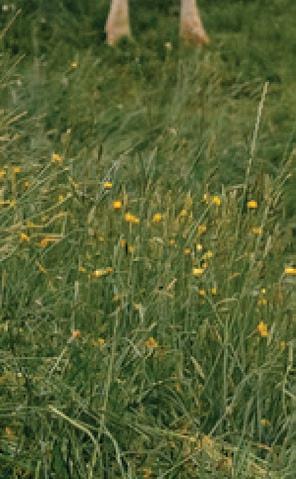

Your Directors and Management Team will be on the road from 20–24 March to meet with you and discuss our results and strategy, as well as key topics such as emissions and capital structure. And, of course, there’ll be light refreshments on offer, including delicious Kāpiti cheese made with your milk!
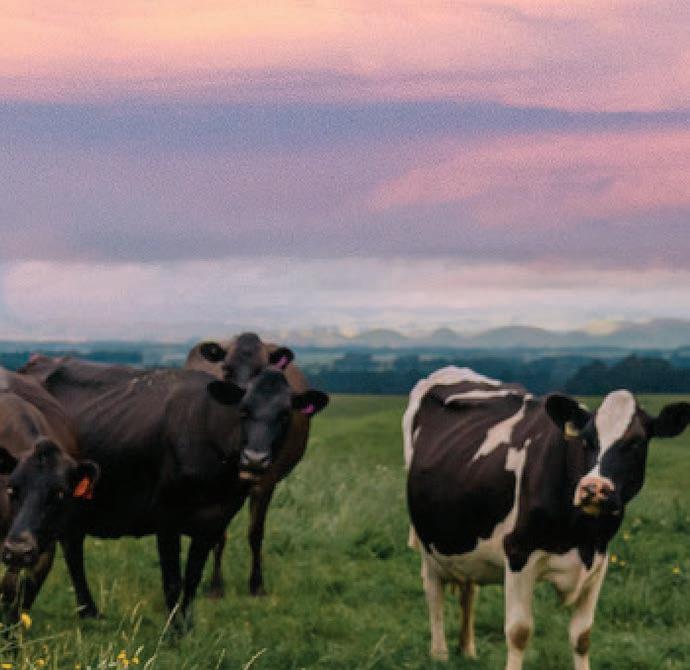
You can RSVP at nzfarmsource.co.nz/meeting-schedule

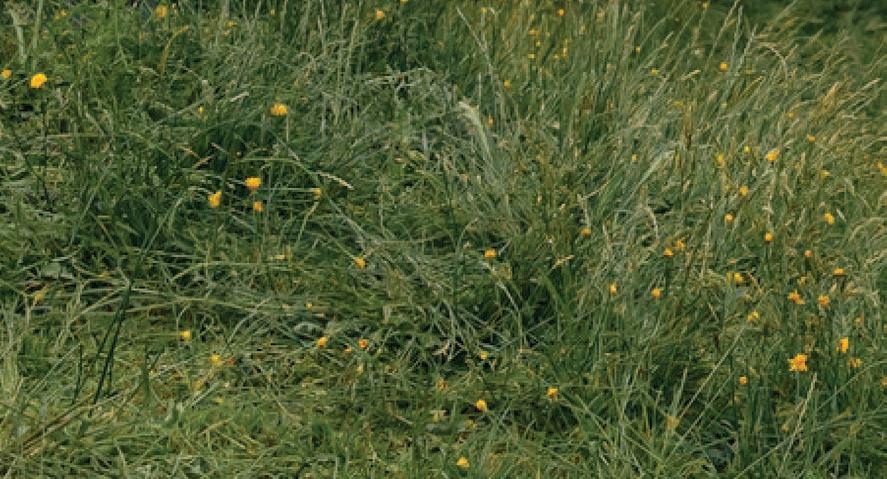
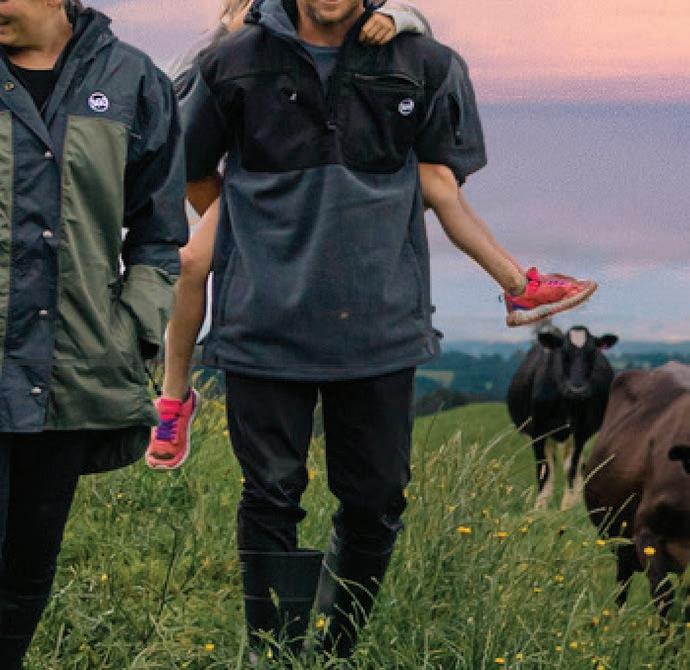

Systems in dairying will be evolutionary, not revolutionary, DairyNZ lead scientist Paul Edwards told farmers and rural professionals at the Northland Dairy Development Trust conference.
He said the industry now and in the future needs to be globally competitive, locally responsible and regionally resilient.
The dairy industry must operate within domestic constraints, often called the social licence to operate, and cope with regional and year-to-year variations.
Because about 95% of the country’s milk is exported, New Zealand must ensure that its products are more attractive than those of competitors.
The current Northland Agricultural Research Farm trial at Dargaville on alternative pastures and low emissions is a good example of the resilience effort, he said.
With regard to global competitiveness, NZ is already in a good position but DairyNZ is tasked with considering where the NZ industry might need to be in a decade.
It is assessing competitors, like the efficiency of United States mega-dairies, and milk alternatives to identify where it can be more competitive. The aim is not to replicate systems but to design NZ’s pasture-based farm systems to achieve better outcomes.
Looking into mega-dairies, DairyNZ researchers tested the idea against different scenarios:
• Business as we expect it to be, a continuation of existing trends.
• Consumers become highly attuned to product attributes, such as footprint or welfare.
• The world may become increasingly chaotic and insular.
• Governments may impose more regulations and there may be
more society-imposed standards, and
• Agriculture may take a significant leap in productivity.
“We then identify common themes across the scenarios to determine what is likely to be important for future dairy systems,” Edwards said.
Common themes were labour, farm costs, footprint, animal care and system transparency, which is about “demonstrating we are meeting consumer and regulatory expectations and providing product provenance”.
Labour is already topical because of limits on increasing the herd size and the difficulties of employing rural labour.
Edwards said milking is a big part of farm labour and that has shown some notable shifts in the use of once-a-day (OAD) and flexible milking strategies over the past decade, already well documented.
Twice-a-day milking for the whole season has fallen from 65% of farms to less than 40% now and 60% of farms are using either full-season once-a-day, partseason OAD or part-season flexible milking.
Edwards pointed out that Northland herds were only 27% full-season twice-a-day in 202122, along with 30% full-season OAD, compared with 9% in the country as a whole.
On farms where seasonal production is below 250kg/cow or 251-300kg, monitoring of production for four seasons before changing to OAD milking and for five seasons after changeover, shows little change in production or even a slight improvement.
Therefore, with the Northland provincial average of 320kg, the preference for once-a-day milking is logical.
“It may be that the time freed up is available to manage the farm better,” he said.
Milking frequency may help to reduce the labour requirement but on-farm demand during calving and mating still creates peaks for labour.
DairyNZ held a workshop of rural
On the plus side, halving the number of matings and calvings would reduce costs, though the farmlet pilot will help quantify how this compares to changes in production.
Paul Edwards DairyNZprofessionals and farmers late last year where it was identified that flattening labour demand through the year and within each day would be advantageous.
This could be achieved by, for example, looking at changes such as extended lactations and batch robotic milking.
Reduced calvings and matings from extended lactation certainly would save time, costs, burnout, fatigue and bobby calves. It may also enhance animal welfare with improved reproductive performance and longer lives.
A 24-month calving interval with half the herd calving every year fits best with the feed demand and reduces winter weather risks to cows.
“The modelling suggests it may
be more profitable for a Dargavilletype pasture curve,” Edwards said, but there are many assumptions and limited data.
Therefore, DairyNZ is setting up a farmlet-scale pilot at Scott Farm starting in the 2023-24 season to investigate what cows can produce in their second year of lactation and, among other things, the relationship between feed supply and demand.
Batch robotic milking means milking as a group (like conventional milking) rather than voluntary milking, with milkings distributed over a 24-hour period.
“Current robotic technology on the market cannot directly replace a milker, which means a robot would be needed at every milking point, for example a 50-bail rotary would have 50 robots.
“With the obvious capital expenditure required for this, a redesign of the system is required,” Edwards said.
One redesign example is combining robotic milking with virtual herding technology and dividing the herd into batches of 100 cows, drastically reducing the number of robots required.
Costs of production go hand in hand with labour requirements, and DairyNZ has used an inflation-
adjusted average milk price over the past decade of $6.80 to estimate where cost of production may need be in 2030.
This is calculated using the consumer price index to convert historic milk price values to what they would be in today’s terms, that is, to account for inflation. Assuming that farmers will need 30% gross margin, the required operating expenses would be $4.76, some 10% below the actual farm expenses figure in 2019-20 of $5.32.
“The technological gains ... would add extra costs and it is part of our thinking to evaluate those costs and benefits to see if they stay within the required farm working expenses and generate the required margin.
“On the plus side, halving the number of matings and calvings would reduce costs, though the farmlet pilot will help quantify how this compares to changes in production.”
Rich data capture required for the system transparency outcome should be complementary to automation and system simplification goals, he said.
“Integration of data sources can also offer management insights –take heat stress as an example.
“We can take a weather forecast and turn it into an indicator of heat stress, combine with grazing records and shelter knowledge, and present options for cow management.
“Then after the event we use data on what happened – the actual weather data plus animal behaviour captured on their smart halters to review and refine management.”
Edwards said his Future Farming Systems project was evolutionary, not revolutionary, and largely projected existing trends in dairy farming.

“It’s also important we reexamine old ideas with a new lens or purpose given operating contexts change.
“In summary, this is an opportunity to lead change and not be forced into it.”
Farm Source to apply for roles.”
Prior to the campaign launch, farmers are encouraged to get
their vacancies up on Farm Source. Any New Zealand dairy farmer can list their job vacancies for free at
nzfarmsource.co.nz/jobs.
DAIRYNZ is encouraging dairy farmers to get their job vacancy advertisements online before the launch of its 2023 GoDairy campaign in March.
“Now is the time when dairy farmers are preparing to get more staff on farm before calving, so we are encouraging farmers to get their job vacancies online as the sector gears up to recruit,” DairyNZ lead advisor for people Jane Muir said.
“Many farms continue to be short-staffed, so the upcoming GoDairy campaign will help connect committed Kiwis with available on-farm jobs, sending active job seekers to
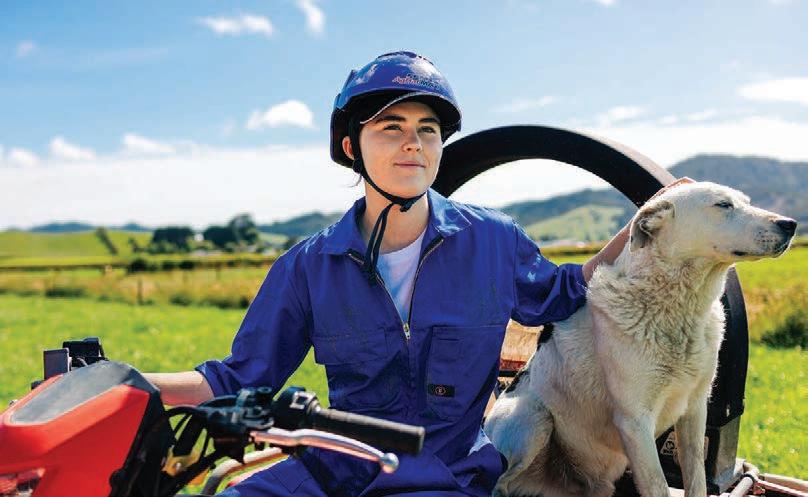
“Job advertisements are a great opportunity to highlight what makes your farm unique and a great place to work, and to give people a sense of your vision and values so they get a feel for what it might be like as part of your team,” Muir said.
The GoDairy campaign advertisements will also encourage people to consider a career change, by highlighting the lifestyle and job opportunities dairy has to offer.
“GoDairy is helping attract Kiwi workers to start a dairy career, to continue building a sustainable and thriving dairy sector, and ultimately help reduce the current workforce shortage,” Muir said.
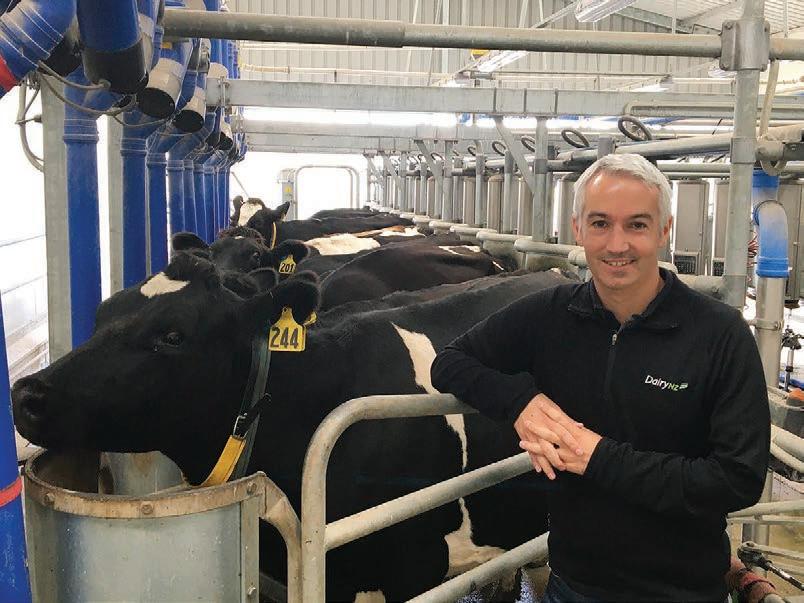
DairyNZ offers a range of
Job advertisements are a great opportunity to highlight what makes your farm unique and a great place to work, and to give people a sense of your vision and values so they get a feel for what it might be like as part of your team.
Jane Muir DairyNZtools and advice on recruitment, onboarding new employees and creating a great workplace to retain staff online at dairynz. co.nz/people.
farmstrong.co.nz
THIS year is going to be another bumpy one. On top of the latest adverse weather, growers of Green kiwifruit have been hit by poor returns due to export volume and quality issues from last year’s harvest.
New Zealand Kiwifruit Growers chair Mark Mayston says: “We understand how tough this will be for many growers after an already difficult year. As a grower, I’ve also had my share of highs and lows and completely understand how trying the industry can get. That’s why it’s important to take steps to maintain personal wellbeing, even when times get tough.”
Live Well, Grow Well tells the stories of experienced growers and industry figures who have navigated tough times before and share what they now do to manage workload and stress. It also contains expert advice on topics such as nutrition, sleep, strategies to manage pressure and the importance of rest and recovery time.
The book encourages growers to adopt the Five Ways to Wellbeing – connecting with mates, learning new things, keeping active, enjoying simple pleasures and helping friends and community. Research shows these habits are proven to have a cumulative, positive effect on people and increase their resilience.
One of the growers in the book, Katikati-based Sean Canarchan, has notched up more than 40 years’ experience. He says it’s a great industry, but there are always challenges.
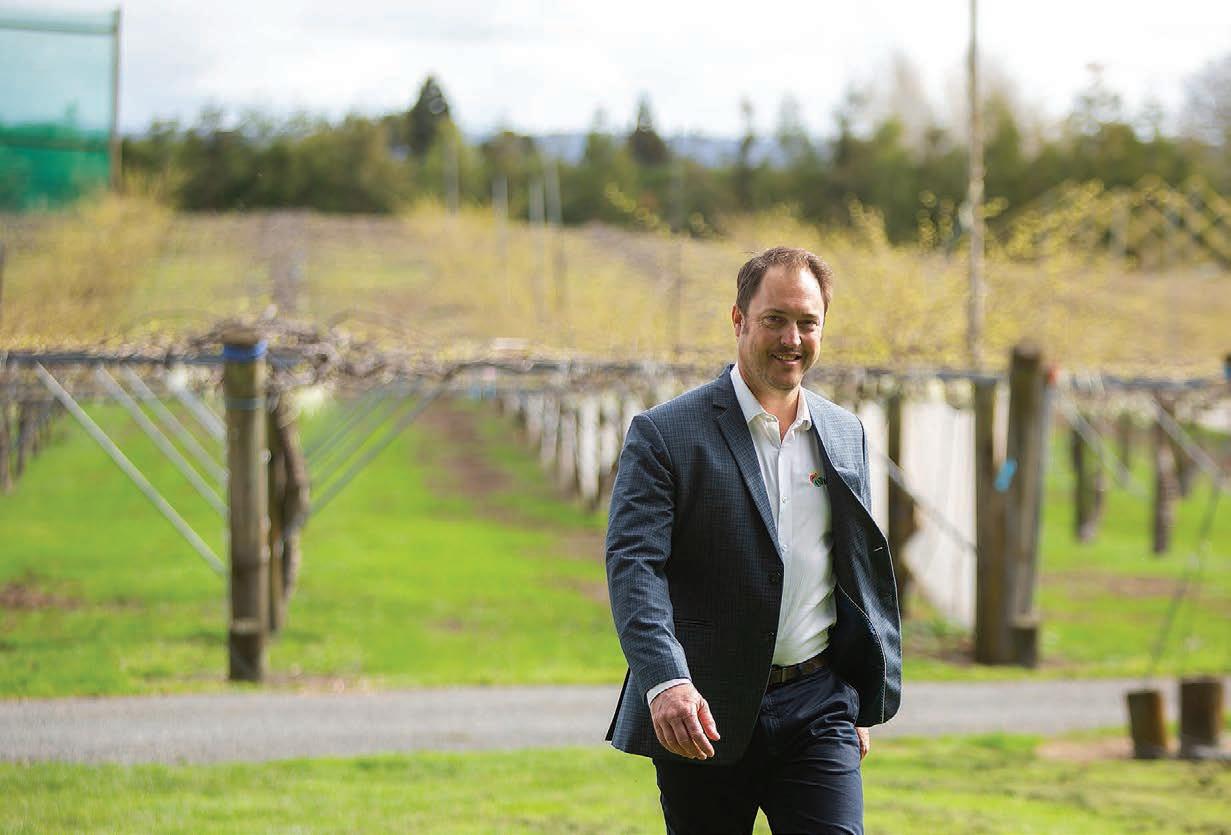
“When you think things are going swimmingly well, there’s always something around the corner to challenge you. And generally the things that challenge us in this industry are not of our own making. They are normally outside influences.”
He says adjusting your mindset can really help manage pressure.
“I always talk about two things: the controllables and the uncontrollables. All the things you can control, you need to have a plan in place to deal with them, but don’t sweat the things you can’t control.
“The classic example is when it rains and you can’t work and you think ‘I’m going to get further and further behind.’ Yes you are, but it doesn’t matter how much worrying you do, it won’t improve the situation. What you can do is discuss the work programme, prioritise what needs to be done and have a good plan in place so when the weather comes right, you have retained everybody and you can get on with it. That’s critical.”
Canarchan says part of lasting the distance in the industry is prioritising your wellbeing. His own stress-busters include
mountain biking, fishing and catching up with mates.
“If you can get exercise along with socialising happening on a regular basis, it just gives you that balance and a chance to recharge.
“I have a group of guys I get together with for a beer once a week and most of them don’t grow kiwifruit. It’s something different. It’s always at the end of the day and a good way to unwind. Socialising with good company is so critical. You want to surround yourself with positive people so you get good vibes off that.
“All in all, it’s been a really challenging 12 months. They say what doesn’t break you makes you stronger, but by jeez – we’re really pushing the boundaries at the moment with grower welfare. That’s why I like what Farmstrong is on about.”
Another industry stalwart, Marty Robinson, shares the lessons he learnt from a tough period of “burnout” some years back. Robinson currently manages 16ha of kiwifruit, is involved in developing the Baygold group and runs his own farm. He’s also involved in the not-for-profit Daily Cafe in Te Puke.
“I was a capable person who could turn his hand to most things, but what started out as an asset eventually became a burden. I was going at things hammer and tongs, doing six or seven things at once. I ended up burnt out in a major way.
“It was a hard lesson. I had to learn to say ‘no’, step back and pass things over to others. I was lucky I had great support from my wife, family and team.”
Not surprisingly, Robinson is a good source of advice for growers feeling stressed.
“Even when things happen that are outside your control, there are still things you can control to ease pressure. For instance, get away from your phone, just use it for a
set period every day. Turn off your notifications and get off social media.
“Prioritise your workload too, especially if you’re short of help. There’s no point stressing about orchard work you can’t realistically
get to. Write a list of what you can do and reschedule other things until after harvest. You’ll feel more in control.”
These days Robinson is proactive about managing the challenges of the industry.
“To a certain extent, we all have to grin and bear things, but if you’re really feeling under the pump, don’t be afraid to step out, leave the phone at home and do something different for a day.
“I love the industry, but I was the classic example of someone overdoing it. I learnt a hard lesson. Once you let yourself get too far down that hole, it’s a long way back. I had to prioritise what really matters in life – my health, my family and then my income. Once you’ve got things in balance, you’ll be all right no matter what’s happening in the industry.”
Farmstrong Ambassador and rugby great Sam Whitelock also features in the book. He comes from a farming background and studied horticulture at university.

“The kiwifruit industry is an exciting industry but I know from talking with growers that it has its fair share of pressures too. There are always the things that you can’t control, such as prices or the weather, which can make life stressful.
“But when you work on a farm or orchard, you have to prioritise your wellbeing and make it happen yourself. There are steps you can take to relieve stress and pressure if you’re feeling under the pump,” Whitelock says.
“Different things work for different people, so this book is a chance to check out what other growers are doing so you can ‘lock in’ what works for you.
“I’ve seen first-hand the positive impact that being Farmstrong has on people. Last year, 15,000 farmers increased their wellbeing thanks to Farmstrong. If you’re doing it tough, this is a very handy resource to add to your toolkit.”
Growers’ chair Mayston agrees. “This book couldn’t come at a better time. The great thing about it is that it doesn’t just acknowledge the pressures we deal with, it offers practical solutions. It shows there’s always a way through these challenges if we look after ourselves and each other.”
MORE:
Farmstrong is a nationwide, rural wellbeing programme that helps farmers and growers live well to farm well. To nd out what else could work for you and lock it in, visit farmstrong. co.nz. Live Well, Grow Well is being distributed free to growers at the Kiwifruit Growers’ harvest roadshows.

The kiwifruit industry has teamed up with Farmstrong on a new resource to help growers manage the challenges of the industry.LOCK IT IN: ‘Different things work for different people, so this book is a chance to check out what other growers are doing so you can “lock in” what works for you,’ Farmstrong Ambassador Sam Whitelock says. PRACTICAL: Live Well, Grow Well ‘couldn’t have come at a better time’, New Zealand Kiwifruit Growers chair Mark Mayston says. ‘It doesn’t just acknowledge the pressures we deal with, it offers practical solutions.’
I always talk about two things: the controllables and the uncontrollables. All the things you can control, you need to have a plan in place to deal with them, but don’t sweat the things you can’t control.
Sean Canarchan Katikati
If you need help, get in touch with Rural Support. We are here to walk alongside you.



As rural people ourselves, we know from experience that pressures can mount up. We’re here to support you and to help develop a plan. Our services are free and confidential.

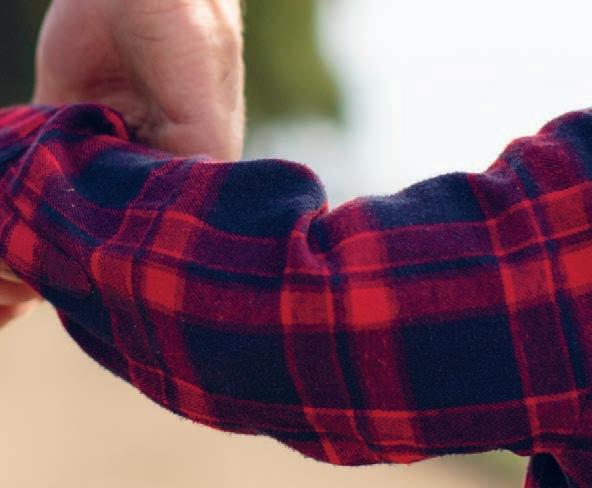

These can include:






• Getting in touch with local expertise in your community
• Connecting you with professionals from around the country
• Access to useful resources including step-by-step action plans and referrals to the national animal feed co-ordination service
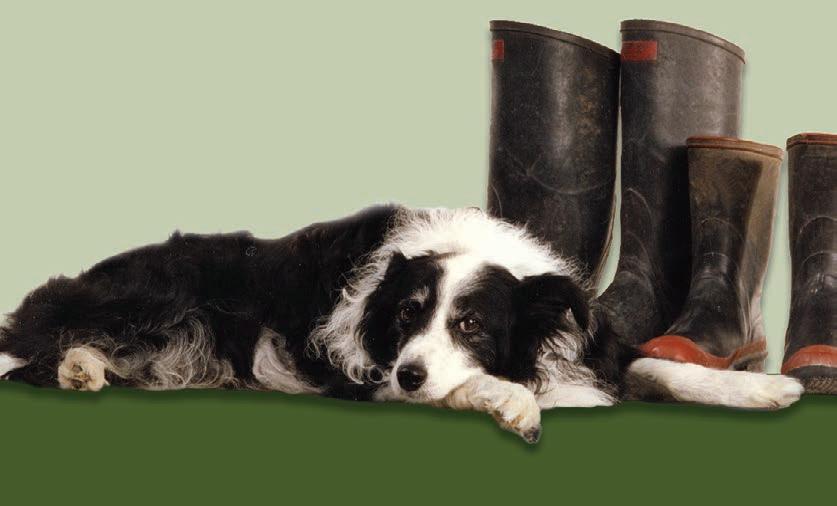

www.rural-support.org.nz

Need help? Call 0800 787 254 or scan this QR code to find your local branch.
Want to help? Scan this QR code to make a donation to the Rural Support Trust.


services to confirm the best use of resources.
DEER Industry New Zealand is calling on farmers to have their say on the future of the industry.
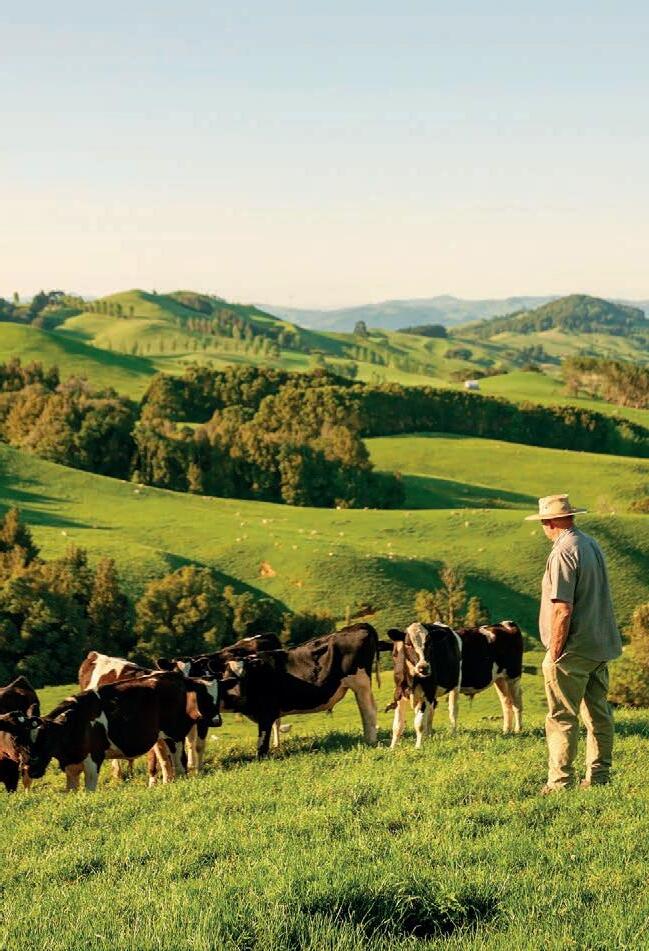
All parts of the deer industry are discussing a new DINZ strategy to guide the industry board’s work over the next five years.
Put together by the DINZ board, the new Thrive with Passion strategy is a high-level overview of the priority areas of focus for the industry.
DINZ chair Mandy Bell and chief executive Innes Moffat have been consulting with industry groups around the country.
But deer farmers, especially, are being urged to have their say, Moffat said.
The strategy prioritises five strategic initiatives, to:

• Increase venison returns by focusing on creating new demand in North America and adding value to co-products
• Increase demand for velvet by supporting healthy food marketing in Asia
• Ensure the best welfare for deer
• Support and connect a thriving deer industry community, and
• Invest in the best innovation and knowledge to support a profitable industry.
“DINZ also needs to continue to address the range of deerspecific issues facing producers by delivering a portfolio of industry services that underpin a thriving and growing deer industry,” Moffat said.

The executive is now working on the delivery of the priority projects, including sourcing third-party funding.
DINZ is also reviewing its
The operational plan will be delivered in April, including any changes to how DINZ collaborates with stakeholders.
An external manager has been engaged to help the team deliver what it needs to the board and to manage any change deemed necessary to ensure a fit-for-purpose DINZ.
Bell and Moffat met the NZ Deer Farmers Association (DFA) national executive late last year as part of the consultation process.
He said the biggest issue for deer farmers is simply whether the dollars they will be putting into the new strategy will return money to them.
“There is plenty of passion for deer farming, but there is also frustration, disappointment and disillusionment too about what has happened in the past,” Stevens said.
There is support from the government for some of the changes industry faces and Stevens urged farmers to provide feedback to DINZ on what they feel is important for the industry.
“It is still early days. I want to see things improve and that’s what the strategy’s about.
“Now is the time for deer farmers to have their say. We have got to get it right.”
Justin Stevens DFA chairDINZ staff and directors have since addressed the DFA’s Canterbury, West Coast and South Canterbury and North Otago branches and members of the Elk and Wapiti Society.
They have also held a series of kitchen-table sessions with about 60 deer farmers across the South Island to get feedback and will soon be talking directly with North Island farmers.
“Let us know what your priorities for the industry are over the medium and long term. Let us know what you think of the strategy – what we have got right, what needs more work,” Moffat said.
Meanwhile deer farmers are keen for DINZ to “get it right”.
DFA chair and Marlborough deer farmer Justin Stevens has met individually with farmers and canvassed opinion around DFA branch chairs.
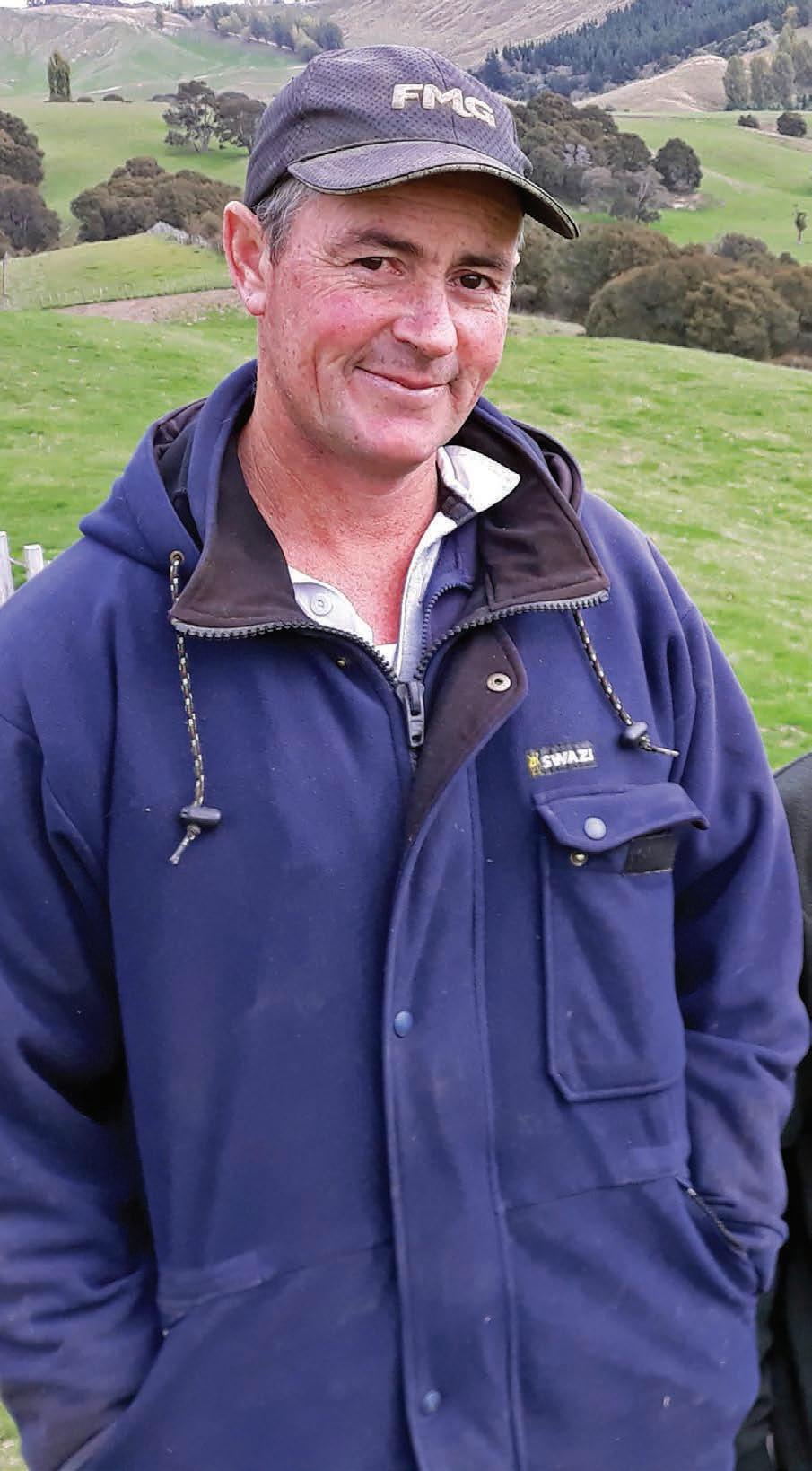
Hawke’s Bay DFA branch chair Evan Potter said the strategy touches on most areas that need to be addressed, but the “devil’s in the detail”.
“In general, there’s been a lot of improvement, especially with efforts to engage with the regions. It’s heading in the right direction.”
Potter supports the move for venison away from the European Union to the United States and the emerging market of China, as long as a balanced basket of markets is maintained.
He said farmers need to be assured of returns.
“While the strategy talks about lifting the venison schedule, in reality it’s where it’s going to hit.
“Venison’s made gains and is getting back to an acceptable level, but with compliance and bureaucracy, you need that $10 a kilogram or more.
“Farmers want to know if, and when, they’ll be getting the $10/kg. They need to stay in business.”
Beef + Lamb New Zealand and 50 Shades of Green are running a campaign raising awareness about the crippling Government policies threatening the future of sheep and beef farms across the country.
There is plenty of passion for deer farming, but there is also frustration, disappointment and disillusionment.DETAIL: Hawke’s Bay DFA branch chair, Evan Potter said the strategy touches on most areas that need to be addressed, but the ‘devil’s in the detail’.
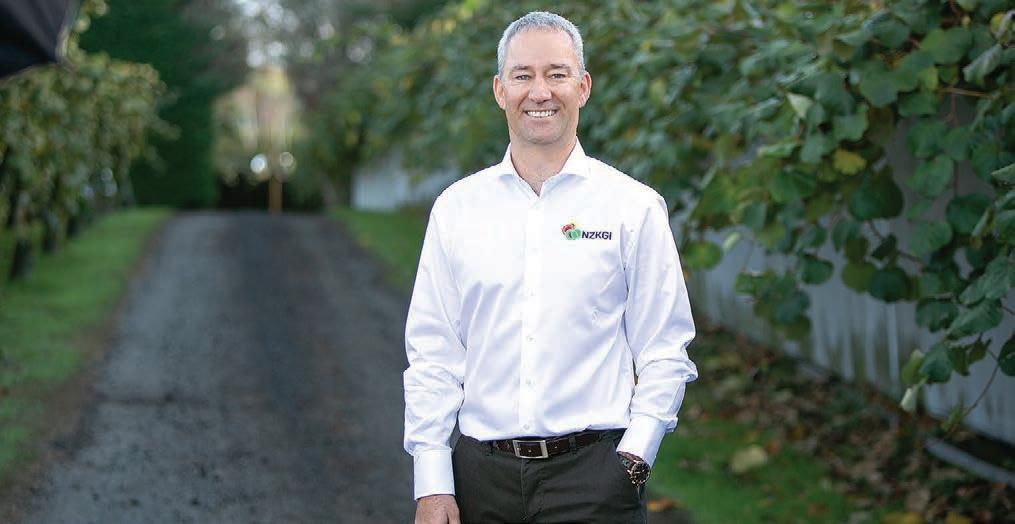
 Richard Rennie NEWS Horticulture
Richard Rennie NEWS Horticulture
KIWIFRUIT growers are being urged to vote on the future of their grower body as the sector faces its six-yearly referendum on keeping New Zealand Kiwifruit Growers Incorporated.
NZKGI chief executive Colin Bond said the sector is facing some tough challenges over coming months, with Cyclone Gabrielle impacts still being assessed, assorted other weather damage across the country, quality issues and labour shortages all coming into play.

Zespri has been grappling with quality issues from last year’s crop and has launched a wholesale review of its quality processes, from orchard to export, and Bond said growers are largely happy with how that process is playing out.
However, the more recent announcement that the single desk seller had underestimated the level of crop writedown due to quality issues on its last two shipments of the season drew some pointed criticism from the grower group.
a controversial treatment that is currently being reviewed through the Environmental Protection Authority.
In the previous referendum, 49% of growers voted.
That compares to a 57% turnout for DairyNZ levy payers in 2020, and 35% for Beef + Lamb in 2021.
NZKGI is proposing to keep the 1.1c a tray levy charge unchanged, with the option to increase it to 1.5c a tray if required in the future. Voting closes on March 24.
that was what that letter was about.
In an open letter to the Zespri board NZKGI chair Mark Mayston challenged Zespri’s supply chain transparency, grower communications and forecasting ability. He said that general grower confidence in the single desk seller is being dented and said growers have “deep concern” about the additional write-down of 58c per tray for Green fruit that left growers without a February progress payment.
It was a departure from the organisation’s usual softly-softly approach when dealing with industry issues, and Bond said such comments were not made lightly.
“As an advocacy organisation it is important growers know we hear their sentiment and that was what that letter was about. There was a problem with the forecast that had a real impact upon growers.”



But he said it is unusual for Zespri to make such slips, and noted Zespri’s executives had owned the mistake publicly.
After this season’s weather impacts and last year’s quality challenges, Bond said the sector is in for some tough months ahead, coming after nearly a decade of good, solid returns and strong growth post-Psa.
“This has just been a reminder of the risk horticulture does face, and that it is not always all plain sailing.”
Other key issues NZKGI intends to advocate strongly on include the continuation of the use of Hi-Cane budding spray,


An aerial spread of superphosphate is the proven way to keep your farm’s engine running season after season. Here’s a few reasons why right now is a super time for superphosphate:
1 Feed. Those beasts won’t feed themselves through winter and spring, so make sure you’ve got all the pasture they need. 2 Protecting your investments. Healthy pastures mean less stress about future unknowns and more options for your business. 3 Supply. Because it’s recognised as a great solution for most Kiwi farms, you’ll want to lock in your supply sooner rather than later. Book your superphosphate aerial spreading today on 0800 100 123
ravensdown.co.nz
As an advocacy organisation it is important growers know we hear their sentiment and
Colin Bond NZKGIVOTED: NZ Kiwifruit Growers Incorporated CEO Colin Bond says the grower body has several key areas to address in the coming year on behalf of its levy-paying members.
THE story about Pātoka getting the power back on with a generator highlights an issue about our future which is not being spoken about in New Zealand.
We are already experiencing catastrophic weather disasters due to our use of, and dependence on, fossil fuels including oil, petrol, diesel, gas and coal.
As a result of the most recent event, many of our roads, farms, bridges, houses, businesses, animals, horticulture and land have been destroyed.
However, no one is talking about changing the way we do things and it seems everyone wants to carry on using the vast amounts of fossil fuel that keep our businesses and society functioning despite the obvious fact that it will result in more and more serious destruction of our infrastructure, which will ultimately become un-fixable due to running out of money.
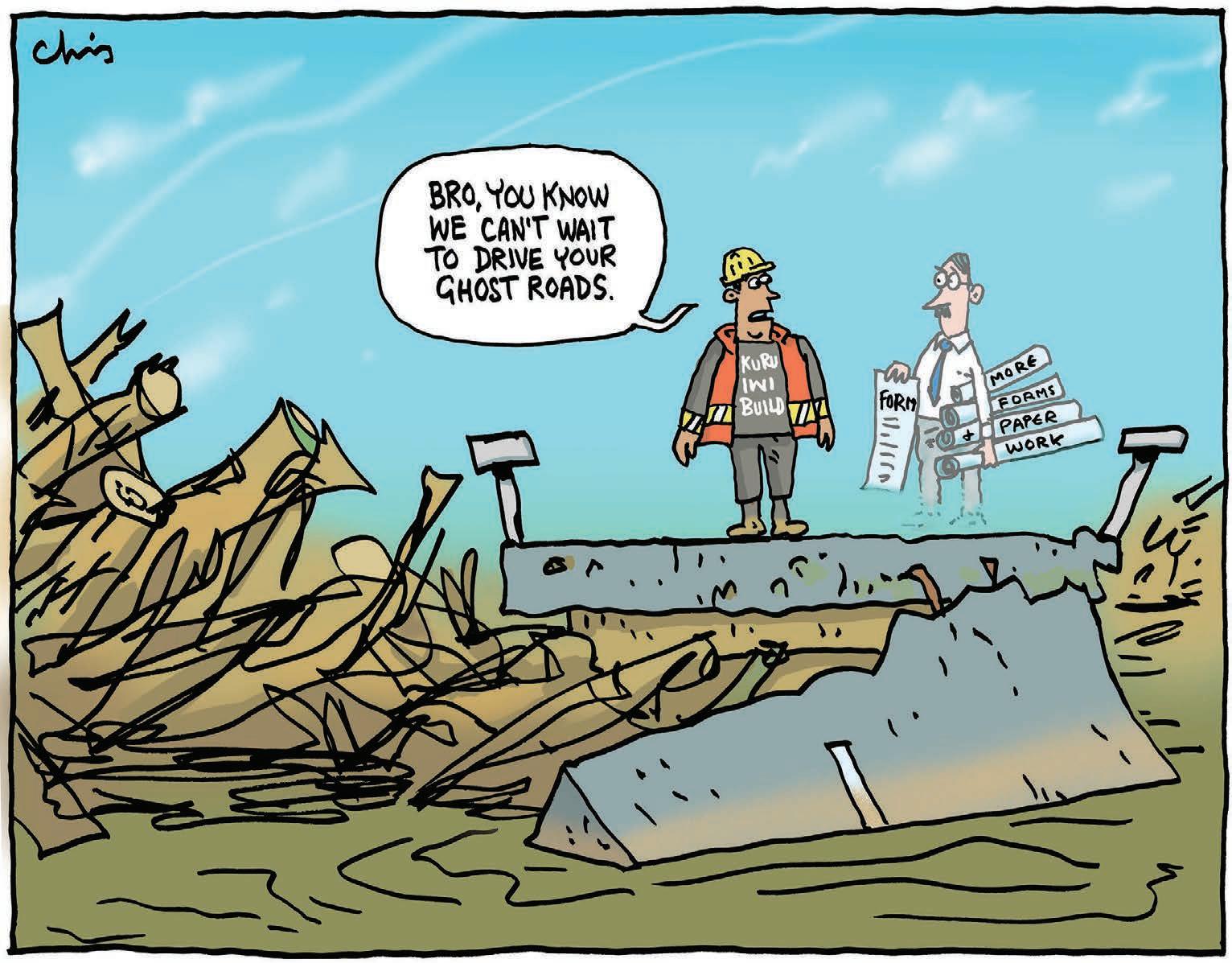
Pātoka needs up to 3000 litres of diesel a day to run the lives of 300 people.
That is creating 6.5t of carbon dioxide a DAY in that small town.
Can we afford to keep living the way we do? It seems not.
NEW Zealand’s reliance on forestry offsets to meet emissions targets can only ever be part of the solution, Parliamentary Commissioner for the Environment Simon Upton says. He told the recent Agricultural Climate
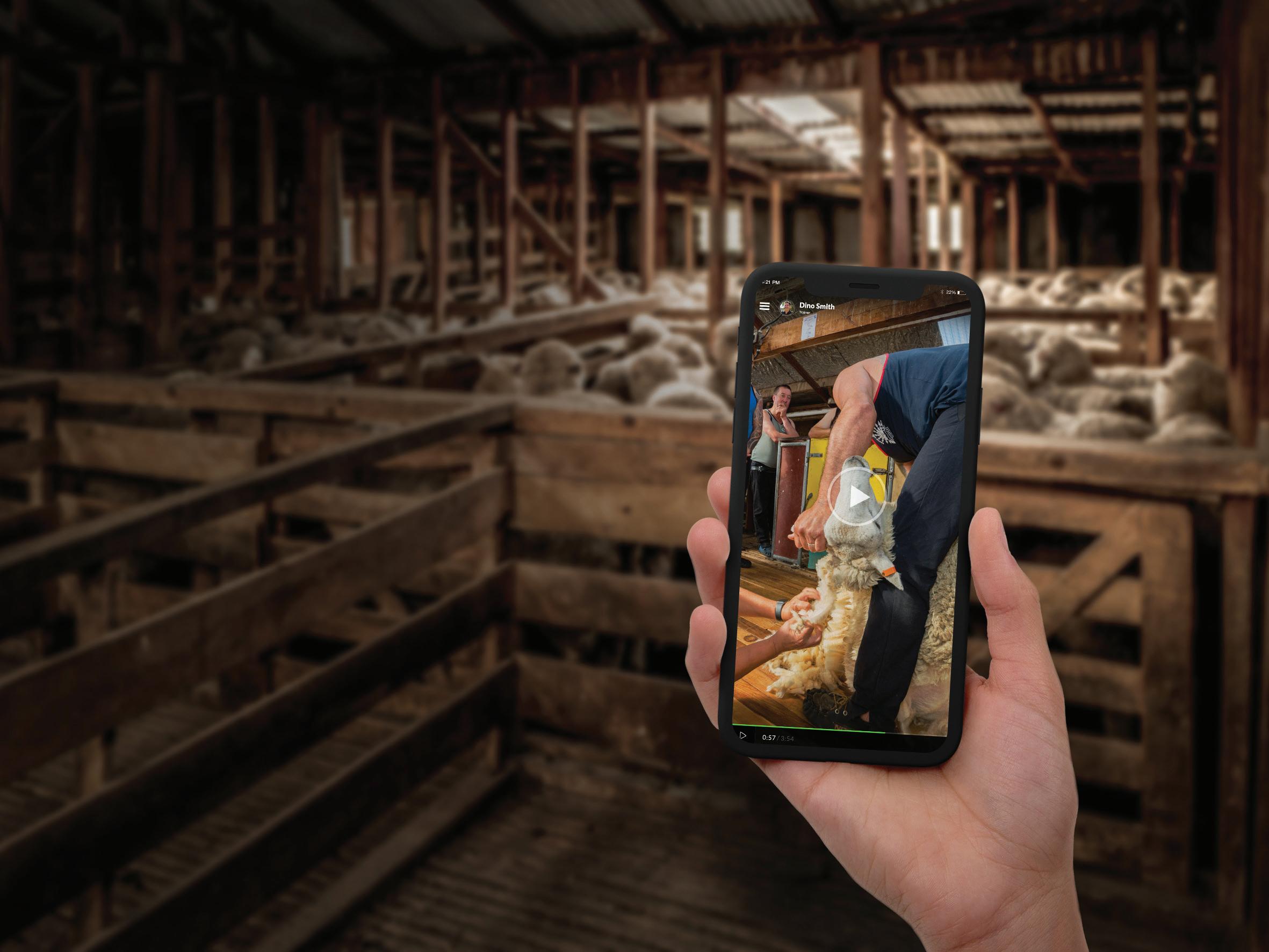
plans in place to reduce their emissions profiles by as much as 50% over the coming decades.
The European Union also has bold plans and has already begun implementing carbon border taxes for some products.

The list doesn’t include food products yet, but there are strong signals that may change in future.
business-as-usual attitude will shave an eye-watering US$16 trillion ($26 trillion) off the Asia-Pacific region’s GDP by 2070. A strong climate response, on the other hand, would boost the region’s GDP by 7.5%, the report’s authors say. That strong response needs to be funded and the government has certainly upped investment in the past year or so, with some of our big companies and co-operatives adding to the pot.
We are like an addict who is able to see the destruction their habit causes, but is still desperately looking for the next dose or hit.
Where are the brilliant minds we need to guide us into an environmentally safe economy?

The way we are going has no future other than destruction and that destruction is happening way sooner and more intensely than anyone, including scientists and weather experts, predicted.
We can only expect an accelerating race to the end if we carry on as we are now.
And thinking forestry is the answer is simply ridiculous given the recent events.
The only answer is listening to the environment and acting accordingly.
The first warnings of the dangers of fossil fuels were in the 1890s.
Adjunct senior fellow Te Kura
Ngahere – New Zealand School of Forestry, University of Canterbury
THE severe impacts of Cyclone Gabrielle on the North Island, and the five severe weather events experienced by the Thames-Coromandel region in just the first two months of 2023, are merely the latest examples of more frequent erosion-triggering rainfall events over the past decade.
Inevitably with the heavy rain, soil, rocks and woody material (also known as “slash”) from landslides have flowed down onto valleys and flood plains, damaging the environment and risking human safety.
Clear-fell harvesting of pine forests on steep erosion-prone land has been identified as a key source of this phenomenon.
So we need to ask why we harvest pine forests on such fragile land, and what needs to change to prevent erosion debris and slash being washed from harvested land.
Ironically, most of these pine forests were planted as a solution to soil erosion that had resulted from the clearing of native forests to create hill country pastoral farms.
The clearing of native forests happened in the 19th and early 20th centuries, but the consequences – erosion, flooding and floodplains covered in silt and rocks – only became apparent decades later.
Research has shown that pastoral farming on our most erosion-susceptible soils is not sustainable. The productivity of the land is being degraded by loss of soil and large areas have been buried with sediment eroded from hill country farms upstream.
So the need to reforest large areas of erosion-prone farmland is
Continued from previous page
John Hill
Urenui
I FOUND the opinion piece by Phil Journeaux, “Using forestry to offset carbon emissions” (March 6), very interesting and agree with most of his thinking, especially his last
scientifically well accepted.
But why did we choose radiata pine for our reforestation efforts instead of other tree species?
Even today, it is hard to find affordable and feasible alternatives to radiata pine. Affordable is the key word here. We are not a rich country and our liking for “No.8 wire” solutions makes a virtue out of necessity – we don’t have the money to pay for anything fancier.
Radiata pine is a cheap and easy tree to establish and it grows fast and reliably. Planting native or other exotic trees, such as redwoods, is possible, but it costs more and needs more skill and care to grow a good crop.
The problem with radiata pine is that if it is grown as a commercial crop, it is clear-fell harvested after about 28 years.
The clear-felled land is just as erosion-prone as it was before the trees were planted – with the added threat of large amounts of logging slash now mixed in with the erosion debris.
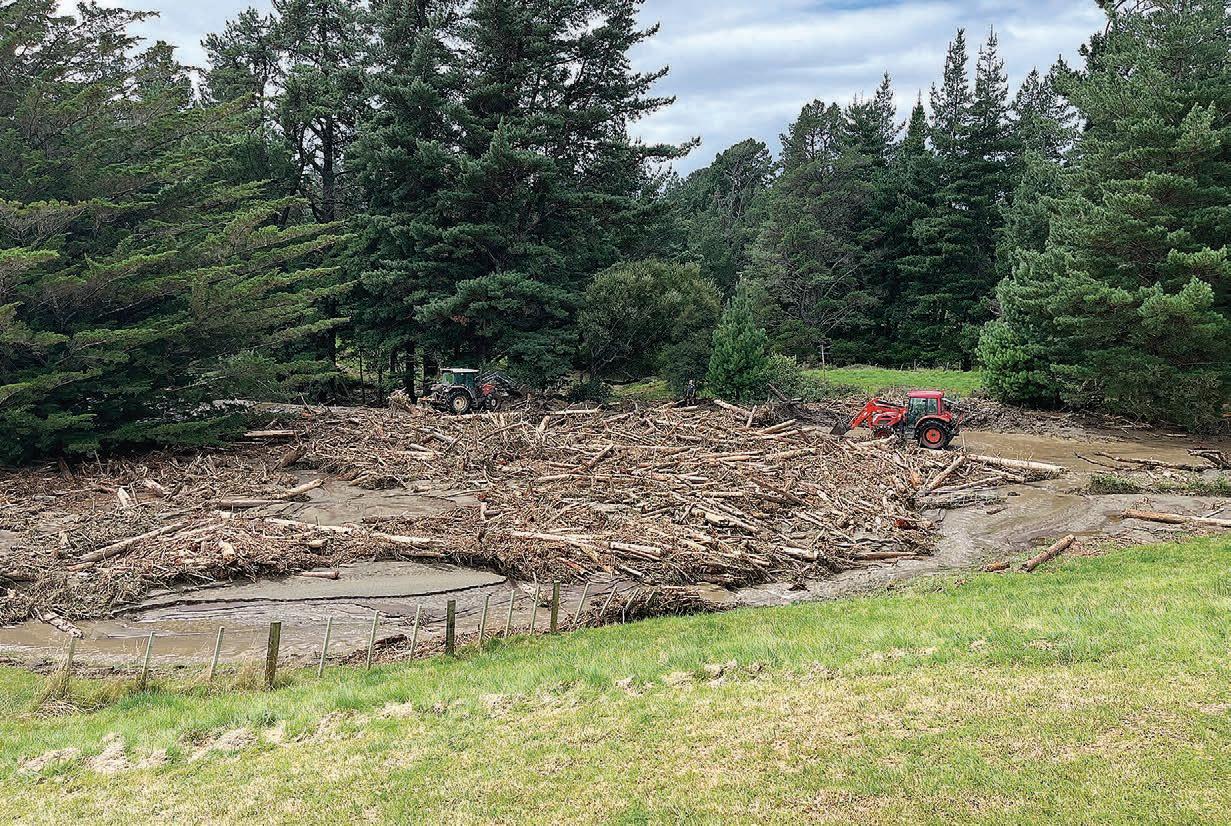
It can take six years or more after harvesting before the replanted pine trees cover the ground and once again provide protection to the soil.
If we take a long-term perspective, research shows that even a radiata pine forest that is clear-felled once every 28 years will still significantly reduce erosion, compared with a pastoral farm on erosion-prone hill country.
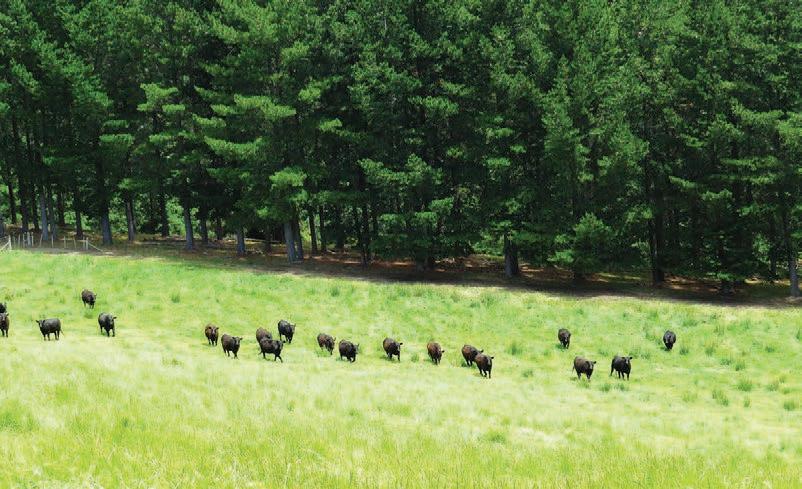
This is because the erosion from the clear-felled forest is outweighed by the reduced erosion once the replanted trees cover the land.
However, this is not much comfort to communities in the path of the flood-borne soil and logs from that clear-felled forest. It’s difficult to take a long-term perspective when your backyards and beaches are covered with tonnes of wood and soil.
sentence, “... the mantra should be ‘trees on farms’, not ‘farms into trees’.”
Firstly, though, I would like to counter the criticism that sheep and beef farmers are not doing their bit in cutting back on greenhouse gas emissions.
Over the past 40 years sheep numbers have dropped from 70 million to around 25 million, with run cattle numbers remaining about static or slightly increasing.
Most of the area where sheep numbers have dropped is now in dairying, especially Canterbury and Southland.
Wool is now a byproduct on
Aotearoa New Zealand has achieved control of erosion with a No.8 wire solution – encouraging private investors to grow commercial pine forests on erosion-prone land. The problem with No.8 wire solutions is that after a while the wire fails, and you have to find a permanent fix.
Whatever benefits radiata pine forests bring, we need to transition forest management away from “business as usual” clear-felling on erosion-prone hill country.
This transition is possible, but one important problem is not often discussed. The pine forests are privately owned by a range of people including iwi, partnerships made up of mum-and-dad investors and large international forestry companies.
All these people have created or acquired these forests as an investment.
A typical pine forest investment makes a good financial return, but this assumes normal efficient forestry, including clear-felling large areas with highly-productive mechanised logging gangs.
It has become clear that we
many sheep and beef farms and that is not likely to improve in the short term.
When we were farming in eastern Taranaki, wool was 40% of our income.
Now, instead of beef and wool it should be beef and Emissions Trading Scheme, with even 5% of many farms planted in trees to take advantage of this situation.
Planting 5% of sheep and beef farms in trees will not affect production but it may stop the wholesale planting of whole farms in trees.
This decision is up to present sheep and beef farmers to make or not.
need to manage forests differently from this large-scale “efficient” model to reduce the risk of erosion and slash from erosionprone forests. Changing how we manage these forests will inevitably reduce the economic return, and forest investors will absorb this reduction.
If we go back to when the pine forests being harvested today were planted, the forests had a social value – not just in reducing erosion but in providing employment in rural areas where few jobs were available.
This social value was recognised by government funding, initially through tree planting by a government department, the New Zealand Forest Service.
With the rise of free market economics in the 1980s, such direct government investment was considered inefficient and wasteful. The Forest Service was disbanded in 1987 and its forests were sold to forestry companies. However, the government continued to promote tree planting on erosion-prone land with subsidies to private investors.
As these forests grew, they came to be considered purely as business investments and were bought and sold on that basis. When the time came to harvest the trees, the expectation was that these could be clear-fell harvested in the same conventional way as commercial forests growing on
land with no erosion risk. As erosion started occurring on the harvested sites, it became clear why these trees were originally planted as a social investment to protect the land and communities from soil erosion.
Aotearoa New Zealand has achieved control of erosion with a No.8 wire solution –encouraging private investors to grow commercial pine forests on erosion-prone land. The problem with No.8 wire solutions is that after a while the wire fails, and you have to find a permanent fix. Conventional commercial pine forestry was a good temporary solution, but now we need to find a more sustainable way to grow forests on our most erosion-prone lands – and it won’t be as cheap.
• This article was first published in The Conversation.
Got a view on some
farmers.weekly@agrihq.co.nz
Phone 06 323 1519
major infrastructural challenges. Those challenges are going to increase.
The information we’re receiving on the effects of climate change are, at best, confusing. On the east coast we’re told we’re going to get drier. The reality is that the opposite has occurred.
That’s important as farmers developed dams to help mitigate drought when flooding and slips have been the order of the day. That’s compounded by the fact there is plenty of grass available but at current prices there are few animals around that can be profitably raised.
threatened areas will be fraught but needs to occur and occur quickly if people are going to have any degree of certainty.
There are Australian examples of entire communities being moved within a year and we can do the same.
WE KEEP getting mixed messages about the viability of some of our farming areas after they’d been ravaged by Cyclone Gabrielle. We’re also getting a tonne of conflicting stories about what the climate will be like over the next 20 or 30 years.
Being an optimist, I believe farming in New Zealand has a great future. It may not be farming the same products in the same areas that we have in the past. We’ll have to change – but we’ve changed continually since the 1800s and done so successfully.

I know NZ has two main islands, we’re long and skinny and have a sparse population by international standards, all of which creates
I believe our weather forecasting is not good enough and needs to be fixed. The predictions locally about Cyclone Gabrielle weren’t accurate, which was unhelpful. Medium to long-term predictions also haven’t been accurate and need to change.
I also have issues with the proposed rebuild.
As evidenced internationally, there are some areas that shouldn’t be built on or even farmed. Deciding on the
The information we’re receiving on the effects of climate change are, at best, confusing. On the east coast we’re told we’re going to get drier. The reality is that the opposite has occurred.
Forestry and its byproduct slash have been in the news and I discussed this briefly last week. The reality is that when pine trees grown for carbon can be infinitely more profitable than sheep, beef and in some instances even dairy, people are going to plant trees. Successive governments have huffed and puffed on the issue but currently it’s getting worse, not better. I’ve been aware of many sheep and beef farms that have been converted to pines but in the last short while I’ve been made aware of Taranaki dairy farms going the same way and that is a tragedy for all of New Zealand.
In addition, many of the trees that have been planted won’t be harvested so it won’t be slash that’s a problem in the future but entire trees.
I want to know what the political parties are going to do about the entire forestry / carbon farming issue, because doing nothing isn’t an option.
That’s for the future. The immediate issue is, where possible, to get the show back on the road and that’s where I strongly support the Feds initiative of the Farmy Army. So far they have over 500 volunteers and that is growing. Five hundred farmers can get
through a lot of work, so that initiative is positive.
Locally we have the programme How We Roll in the Rapa, which was conceived by local farmer Mike Butterick. He’s been canvassing for fencing material to help local farms that have had fences washed out – and there are plenty. Mike reports that the reaction has been “fantastic” by both local farmers and industry. The rebuild will take decades, not years and it won’t be easy.
The reaction to the crisis by many has been to say we need to slow climate change, which,

again, I discussed briefly last week. Since then we’ve had students marching demanding action whatever that action may be. NZ could remove all cars and cows tomorrow and it would make no discernible difference to world GHG emissions. In fact removing cows would increase them as overseas farmers aren’t as efficient as we are.
We’ve had some stupid comments, including from Climate Change Minister James Shaw, who apparently told the NZ Agricultural Climate Change Conference recently that “profitability shouldn’t be a driver of NZ farms”. My advice to him would be to stay in the shallow end.
In addition we’ve had many pledges to get to carbon zero but I’m unaware of any credible plan to get there.
I’m also aware of United States research that showed “removing animals from US agriculture would reduce agriculture GHG emissions but would also create a food supply incapable of supporting the US population’s nutritional requirements”.
Is that what we want in NZ?
The government has some major decisions to make and quickly. I strongly believe we need a far better weather forecasting system for both the long and short term. We need to decide what communities and areas need to be changed or relocated and the planting of exotic trees needs more than an inquiry, it needs decisions.
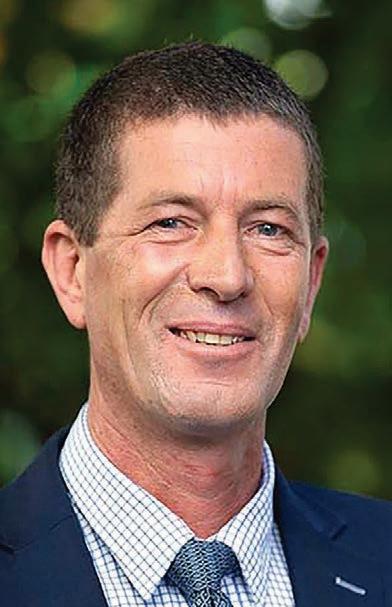
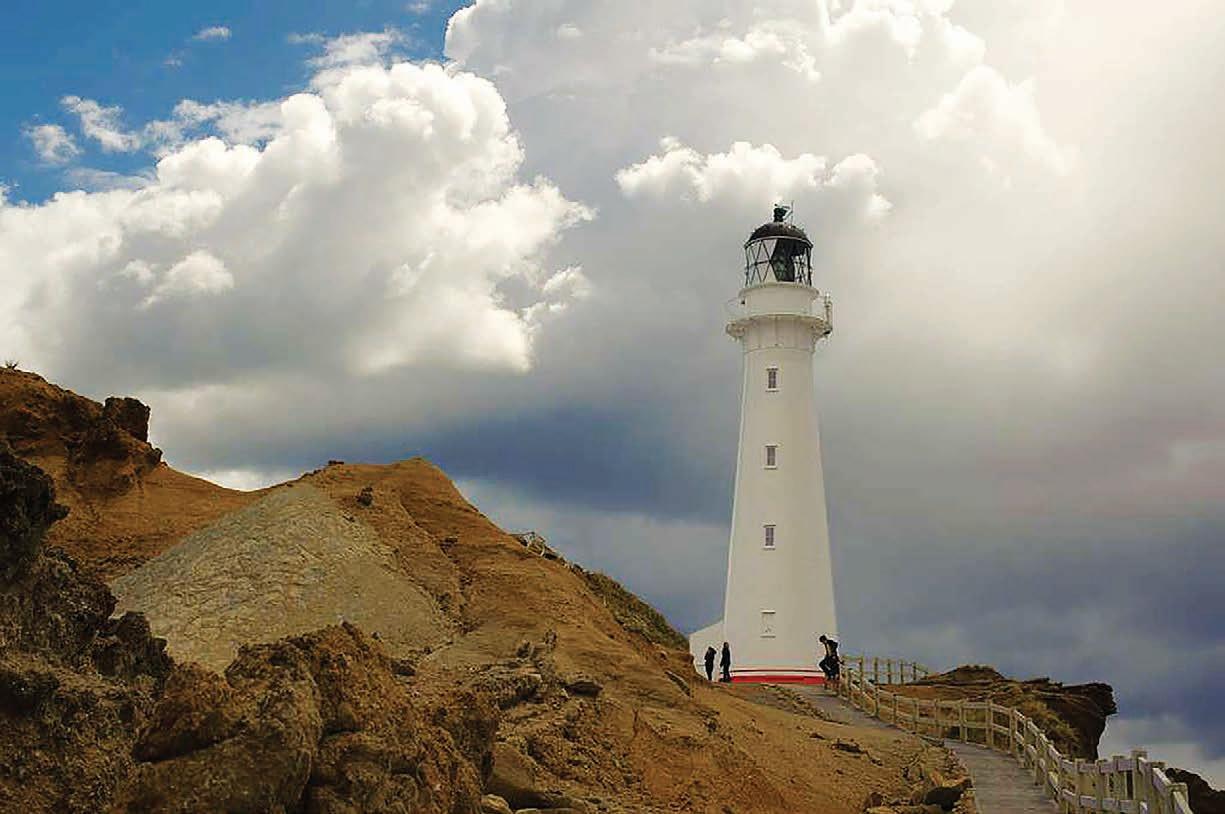
There was a lot of other damage to the township and surrounding farmland from the slips and flooding.
Near Riversdale the next day we saw the damage they were still addressing from Cyclone Hale, so don’t forget about the pockets of destruction that are also in Tararua and Wairarapa.
With time to spare before the wedding, we climbed up to the Castlepoint lighthouse and then on towards the higher point.
There was a judo group doing its thing so we watched for a while until they filed back past us, and we went out to gaze in awe at that spectacular view.
damage – and into our view at that moment.
I yelled out, asking if he was in trouble, and he eventually heard me and started crying for help.
I got the Americans to ring 111 and, thinking who was in my phone, rang the bride’s father, Gary Hope, who is a Gisborne farmer
and I knew would be somewhere down in the settlement.
I pleaded to him to get a boat into the water.
He rang his soon-to-be son-inlaw George, who in turn rang his father, Scotty Whitehead, a local farmer who just happened to be standing next to Anders Crofoot
from Castlepoint Station, who knew exactly who to ring with a boat.
Meanwhile, after giving the 111 lady the details and asking for a helicopter, I regained the lost ability to sprint down the steps to
Continued next page
IHAVE a tale of serendipity and just plain old-fashioned luck. Serendipity is the occurrence and development of events by chance in a beneficial way.
And this story also shows rural folk are great to have around in a crisis.
Last week Jane and I travelled to Castlepoint for the wedding of our good friend’s daughter.
On the way we were saddened to see the damage Cyclone Gabrielle had wrought on Tīnui and surrounds. The iconic Tīnui pub had seen water over the bar and the publican has shut up shop and put the for-sale sign up.
Serendipity comes from being in the right place at the right time, and that delay turned out to be critical.
Jane headed down the steps to the rocks and I characteristically stayed to chat to an American couple who had just arrived.
Then 80m below us we saw what looked like a diver in a wetsuit come into view, swimming backstroke, trying to get to the rocks below us.
Later it turned out to be a young lad wearing black pants and a puffer jacket who had fallen off the rocks on the seaward side and, fortunately for him, the southerly had swept him around the rocky point – where he had taken some
this was one of several throughout the north designed to get affected farmers together and to put them in contact with support providers and agencies at a very difficult time. Members of the collaboration group include the Rural Support Trust, Federated Farmers, Beef + Lamb New Zealand, DairyNZ, Fonterra, FMG, Ballance, the Ministry for Primary Industries, the police and others. Meat companies AFFCO, Silver Fern Farms and Greenlea are providing meat for the get-togethers.
THE horrific damage caused in different North Island regions by the cyclones and heavy rain events since the beginning of the year has led people to focus mostly on West Auckland, Northland and more recently Hawke’s Bay and Tairāwhiti. But it has been less appreciated just how badly North Auckland has been hit by massive slips, road closures and damage to properties between Tauhoa and Puhoi covering the area between SH16 in the west and SH1 in the east. The area has seen more than a metre of rain over the first two months of this year.
Many of the farms have suffered hundreds of thousands of dollars’ damage, requiring several years of remediation work. The January rain event that produced 350 ml of rain followed a path from Tauhoa, over Kaipara Hills, across the Hoteo River and beyond to the back of Warkworth and south to Puhoi, before continuing down the coast, inflicting massive damage on Auckland’s west coast beach settlements and flooding the airport.
On Monday February 27 more than 100 farmers, lifestyle block owners and supporters attended a community BBQ, organised by a rural collaboration group, in support of flood-ravaged farmers at Kaipara Flats Sports Club. Co-ordinator Mike Borrie from Fonterra in Whangārei told me
Continued from previous page
the beach and found a local who turned out to be John Griffith, a local stock agent, and asked him also to get a boat into the water. He ended up backing the boat that turned up into the sea, allowing Brian Monahan and Richard Hewitt to power out to the kid.
By this time I’d run back up to the lookout to shout reassurance to the boy and talk to the emergency operator.
Later I was surprised to look at my call history to see I’d run down and around the beach, and run back up, in 10 minutes.
At the function I spoke to several of the affected farmers who described the impact on their properties from the volume of rain in the January event, further exacerbated by the high winds of Cyclone Gabrielle and a further torrential downpour an hour before the BBQ. AFFCO buyer and farmer Brett Innes showed me a video of the slips, flattened fencing and destroyed culverts on the family farm run by his brother Scott and continuing onto his own farm next door. Further down the hills, Tony Rodgers’ stockyards suffered huge slumps of more than a metre, and part of his woolshed was taken out.
Steven Dill said his access road was blocked, power was still out and he couldn’t even start to get his head round the damage or assess just how many hundreds of thousands of dollars it would take to repair.
Neighbour Peter Anich is one of the few to have insured his fences, but access points, crossings and culverts are all blocked, while he had started to repair one of the culverts only for a downpour to undo his work; riparian planting and wetlands have all been destroyed. He is only able to take a short-term approach at present, until the weather improves and he can reach currently inaccessible parts of his farm.
Closer to Warkworth Peter Scott farms 80ha where he finishes bulls and lambs. He reckons he got away quite lightly as he lost no stock, having sent everything he could to the works three days earlier, but all his fences were destroyed
Adrenaline is a powerful drug. Meanwhile Gary had got a surfer into the sea, but finally the boat was launched and rescued the bynow almost lifeless youth. It seemed to have taken hours, but I later realised they were back on the beach with the boy within
Then 80m below us we saw what looked like a diver in a wetsuit come into view, swimming backstroke, trying to get to the rocks below us.
The near and far north have been inexcusably let down by the shortsighted politics of envy, which have condemned Northland to being effectively cut off from the rest of the country as a consequence of successive weather events.
by huge amounts of forestry slash from Moir Hill swept down the Kourawhero stream, which he described as a torrent more like the Waikato River. He reckons this year is the worst he has seen in 50 years of farming, although he is optimistic a bit of good weather will still see the grass grow before winter.
Nearer town between Kaipara Flats Road and Woodcocks Road, Hereford breeders and sheep farmers Dean and Marjorie Blythen have lost eight hay paddocks

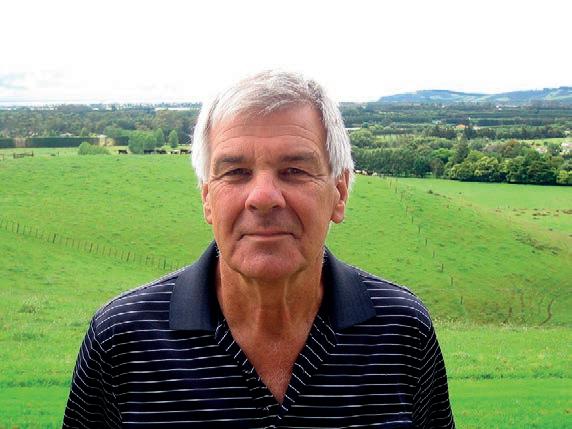
25 minutes of my first call.
I ran back down and Gary’s brother Nigel, who by great fortune happens to be a Gisborne paramedic, had taken control of the situation.
I lifted the young man out of the boat and into a heated car. He was very white and extremely cold and later we heard was only minutes from death from hypothermia.
Nigel knew to dry him and warm him slowly in a small room with a heat pump going.
I would have put him in a warm bath or shower to heat him up quickly and possibly killed him, Nigel told me later.
where the grass has died from the constant flooding from five heavy rain events already this year, although they still have two paddocks left which they hope will dry out so they can make a small amount of winter feed. They also lost 40 sheep during the worst of the flooding, while access to parts of their property is restricted and the sheer amount of tree branches and silt makes it hard to get round all the broken fencing.
Local contractors Rhodes for Roads were well represented at the community BBQ and have been doing lots of digger work to help farmers repair culverts and dig their way out of properties where roads are blocked.
They have also been working hard to clear the connecting roads between SH16 and SH1, which at times have been a lifeline for drivers affected by the frequent road closures on the main highway north.
Generators have been in short supply, but are an essential piece
Thirty minutes later a Wellington helicopter and ambulance turned up.
It would have been too late for a rescue, but the ambulance took him into Masterton to be checked over and he was back with his family later that night.
I’m a terrific panicker in a crisis, I already knew that, but panic was useful for my role that morning.
All the others were sensible and unflappable rural folk who played their part in saving this young man’s life.
The next day I spent some time with the young man and his family.
He knew how close he’d come to
of equipment for properties suffering up to several weeks without power.
These past few weeks have served to emphasise the critical importance of finishing the Puhoito-Warkworth stretch of motorway, now well over a year late, as well as the downright stupidity of this government’s failure to plan for the extension of the motorway to Wellsford and eventually to Whangārei. The near and far north have been inexcusably let down by the shortsighted politics of envy, which have condemned Northland to being effectively cut off from the rest of the country as a consequence of successive weather events.
There won’t be many voters north of the Auckland Harbour Bridge who can even begin to understand the government’s fixation with light rail to the airport and cycleways, which seem to take precedence over oldfashioned essential infrastructure like roads and rail.
death and was incredibly grateful to all the folk involved.
He’d tried to get that puffer jacket off but hadn’t been able to. For much of the time it looked like it had actually acted as a flotation device with the air trapped around the feathers, but towards the end became a liability as were the shoes he had on the whole time.
But his disliked swimming lessons had taught him to get on his back and remain afloat and not overly panic, so he had done a lot to save his own life.
Along with a great deal of serendipity and luck.
Tim Mackle has been DairyNZ chief executive since 2007. He talks to Gerald Piddock about his time fronting the organisation after announcing he will step down in June.
FOR 15 years, Tim Mackle has been the public face of DairyNZ.
As its first chief executive, he has fronted the industry-good organisation as the dairy sector has grown into the economic powerhouse it is today.
But with growth have come massive challenges – payout volatility, M bovis, central and local government environmental regulations, animal welfare claims around bobby calves and most recently issues related to covid-19.
Mackle shrugs them off as “part and parcel of the job”, pointing out that his role was always underpinned by a great team behind the scenes supporting him and ensuring that progress was made in tackling these challenges at a farm level.
As CEO, being the public face of the organisation when confronted by issues came naturally.
“I’ve always been happy to do it because I believe in dairy and I believe that farmers want to make progress and are making progress,” Mackle says.
Tackling the challenges kept him motivated.
“I’ve stayed so long for a bunch of reasons, but it’s mainly about people. The great people at DairyNZ come to work every day to help farmers and indirectly help the country. They are motivated by that purpose and I am too.
“I haven’t had a day where I haven’t wanted to get out of bed for this job. I reflect on that and think I’m lucky.
“I feel incredibly privileged to have a great team of people. I
might have a big title but I don’t have all of the big ideas.
“We deal with so many different issues at DairyNZ that you couldn’t even attempt to have all of the ideas and it’s really critical that you have a great team of people across the board who can think really deeply and get on and deliver stuff.”
He credits DairyNZ’s first chair, John Luxton, with insisting the organisation get more involved in policy engagement. Luxton saw what was coming as more policy work at local and central government level was formulated and the sector had to be at the table when those policies were formulated.
Mackle’s challenge was working out what that looked like and complementing the existing advocacy work of groups such as Federated Farmers rather than duplicating it.
That came in the form of scientific, evidence-based policies, using the scientists and economists on staff.
“We built that and that’s something that changed with the advent of DairyNZ,” Mackle says.
The industry’s growth has been one of the sector’s focal points over the past 15 years. The challenge now is working out how it can resolve the issues this expansion has caused.
“We have always had the philosophy that we need to be there to help solve these problems but in the smartest way.”
That means identifying the problem, being clear at a community, catchment or national level about what they are trying
to solve and then working out a solution.
His advice for the new CEO is to remember that the job is all about the people – our farmers, the staff, board and wider industry partners – and being able to navigate those different interactions.
“But most critically, establishing that relationship with farmers, really understanding farmers and having that strong empathy for the issues that they deal with.”
I haven’t had a day where I haven’t wanted to get out of bed for this job. I feel incredibly privileged to have a great team of people. I might have a big title but I don’t have all of the big ideas.
Tim Mackle DairyNZWearing those different hats was a challenging part of the job, Mackle says.
“Always be guided by the principles of why you’re there and why you’re doing what you’re doing and have those values there so even when you’re not with farmers, it’s always at the front of your mind that this is why you’re there to help them.”
Mackle’s great-greatgrandmother farmed dairy cows at
Kaikōura and it is in his blood, he says.
“I do get their challenges and frustrations and I really value that. I like working with farmers and that means the good times and the times when you get a bit of a kicking.
“Their expectations, quite rightly, are always high.”
Mackle says he regrets not being able to spend more time with farmers, but the demands of the CEO’s role meant it often took him away from those interactions.
“We have two big challenges, one is to deliver as much value for our farmers as we possibly can. The second challenge is to help farmers understand where that value is: A, because they deserve it, and B, because it helps with our relationship with them to engage more and get more done together.”
DairyNZ also must build a better understanding with farmers as to the value their levy money creates.
That challenge around engagement also in part contributes to the repeatedly poor turnouts for director elections.
“Everything contributes and we have to take that on the chin, that we have to keep working on that better.
“It’s not the farmers’ responsibility to know more about DairyNZ. It’s our challenge.”
Mackle says he is optimistic about the dairy industry’s future but it will take an industry-
FORMER Rural Leaders chief executive Chris Parsons has a new role as chief commercial officer at rural land syndicator MyFarm.
Parsons will make the move to MyFarm in May, taking on responsibility for leading the investments team formerly led by Con Williams, along with the operations side of the business.
Prior to joining Rural Leaders NZ in 2020, Parsons was a decorated officer in the New Zealand Army.
His record of leadership in the New Zealand Defence Force traverses tough special forces missions, for which he was decorated three times, and leading multiple organisational transformations. He established NZ’s first Special Operations headquarters in the country and he was the inaugural commander of the 1st (NZ) Brigade, a multifunctional team of 3300.
As the brigade commander and then the deputy chief of army, Parsons championed the army’s transformation from analogue to digital communications.
Most recently, as part of a small virtual team of volunteers
he helped to successfully evacuate 563 Afghan people to NZ in the aftermath of the Taliban takeover in Afghanistan.
As CEO of Rural Leaders NZ since 2020, Parsons is widely acknowledged as having rejuvenated and re-imagined the Rural Leadership Programme and Nuffield scholarships.
During his tenure the profile and scope of both the Kellogg and Nuffield scholarship programmes increased markedly, with all Kellogg recipients now also being able to complete a post-grad certificate in commerce from Lincoln University.
Parsons is co-owner of a hill country sheep and beef farming operation with his brother James.
MyFarm chief executive Andrew Watters said with MyFarm’s portfolio growth in the past six years to over $600 million of primary sector assets under management, the business is more focused than ever on service delivery and operational efficiency.


“Chris’s ability to develop high-performing teams, his focus on operational excellence and his strategic foresight will be hugely valuable to MyFarm and its investors,” Watters said.
wide effort for it to work. It is already occurring with the dairy companies getting far more involved in helping farmers make changes to meet customer demands.
It will also require greater collaboration with the sheep and beef sector, which makes sense given how many issues affect both industries, he says.
“It’s going to take collective team effort.”
But whatever those challenges are, they must always be grounded in whatever challenges farmers are facing, he says.
Mackle says the decision to resign came after ongoing conversations with DairyNZ’s board as well as his family.
“Me leaving now, it hasn’t been a spur-of-the-moment thing. It’s something I’ve talked about for quite a few years particularly with [DairyNZ chair] Jim [van der Poel].”
Nor was it an easy decision.
“I care deeply and passionately not only about the organisation but also about the people who we’re serving, which are the farmers. That’s what makes it difficult and it’s not an easy thing to walk away from.”
Nor does he have anything concrete lined up, although he says he is committed to staying in the primary sector.
“For me, the next chapter has got to have real strong purpose.”










As landowners and farmers survey hectares of silt deposits in Gabrielle’s wake, an AgResearch innovation may yet play a part in helping remediate it to a more valuable, fertile soil. AgResearch senior scientist Seth Laurenson spoke to Richard Rennie about a smart engineered solution to repair compacted soil.
THE concept of inoculating damaged or compacted soils to kickstart their biological processes is not a new one. Reinserting specific soil microbes, or inoculating them with bacterial communities, has proven to have varied success. That success often depends on the level of soil degradation and denseness and often sees microbe populations surge but later decline, depending upon their ability to establish.
“Basically if you can get air into the soil, you will have biological growth, and inoculants can sometimes die off quite quickly if the conditions do not line up early on in establishment,” AgResearch senior scientist Seth Laurenson says.
“staired” interior that can hold water well, with maximum surface area, and enable good air circulation, all contained within the tiny rhiome structure, shaped to also be easily pushed into the soil medium.
Called a rhiome (home for rhizobia), the trial habitat also contains a yeast extract and sugar food to ensure bacteria have a good energy source to fuel their rapid multiplication.
“In developing it as a proof of concept we ended up using polylactic acid as a key compound to try and make it more biodegradable, which it is to a point, but future work would look at something that is wholly biodegradable in the soil over time,” Laurenson said.
The team used a compacted heavy soil akin to what you might find in a dairy milking platform that has been stocked over a dry winter period. The researchers inserted the inoculated rhiomes populated with the common pastoral micro-organism rhizobium.
Seth Laurenson AgResearch

“The AgResearch work was based on the theory that if you can provide some sort of refugia for soil microbes you are introducing so they can build up their numbers, then expand beyond that refugia, you could enjoy some success.”
The AgResearch team took a cross-discipline approach to addressing the challenge, combining the skills of an engineer, biologists and a soil scientist to create a 3D printed habitat for the valuable microbes. The pointed, divot-shaped structure houses interior accommodation that amounts to a five-star suite for microbes. It offers them a carefully designed
They found the use of the rhiome significantly increased the survivability of the microbes in the compacted soil, to a level similar to what rhizomes in noncompacted soil experienced, and was particularly effective when the rhiome was manufactured from a yeast and sugar material.
“We were quite taken with just how effective it has proven to be, and where the application could be in the future,” he said. This could include the likes of regenerative agricultural application, where farmers may be seeking a “no till” approach, but still need some means of keeping soils’ microbial action high, despite not aerating it with tillage.
Laurenson said the rhiome’s design has proven to be a good cross-discipline exercise and
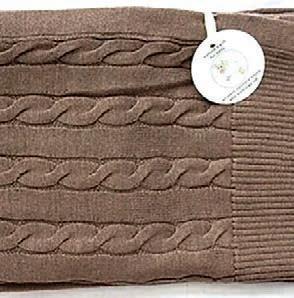




one that has created a prototype product that positions the project well for its next stage of field trials.
“We have things to determine, like just how many rhiomes you would need to insert per hectare, is it 500 or 50,000, for example, and the logistics of how you would inoculate them, either by hand or by a drill, for example.”
While it will require some trials to confirm, Laurenson said using the rhiomes to remediate dense silt deposits like those deposited after Cyclone Gabrielle could prove a valuable and practical trial for the technology.
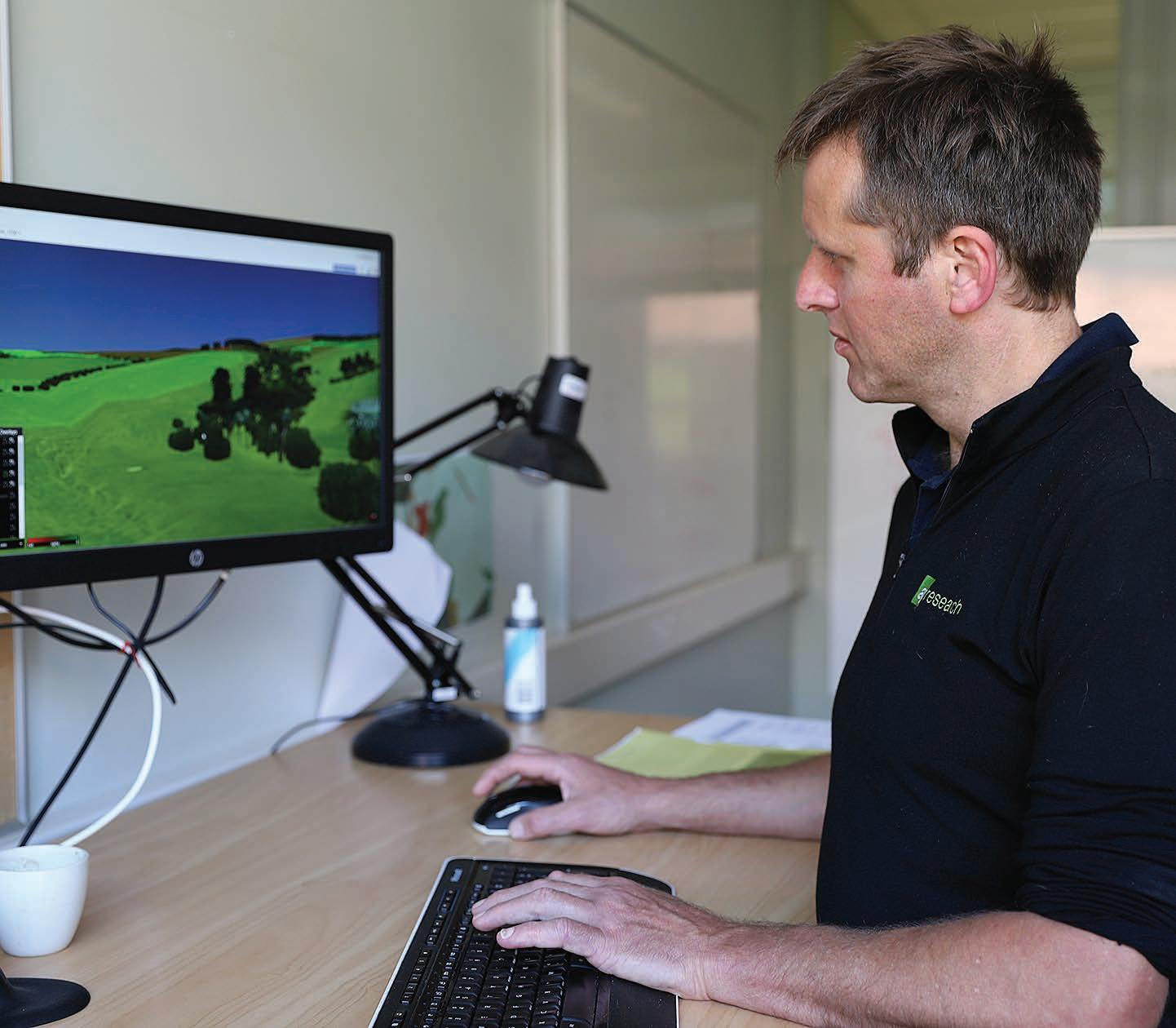
He said it is well positioned for a commercial partner to work alongside, scaling up the trials and also producing at such a scale that a wholly biodegradable rhiome could be produced in volume.
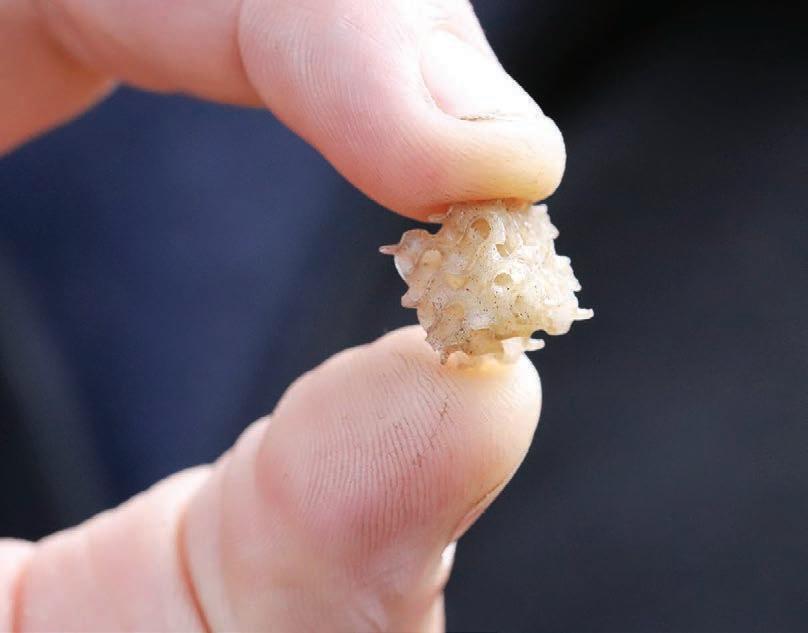
We were quite taken with just how effective it has proven to be, and where the application could be in the future.MULTI-DISCIPLINARY: AgResearch’s acting science impact leader Seth Laurenson. LIFESTYLE BLOCK: The AgResearch-developed rhiome, or home for rhizobia, offers microbes a safe refuge to multiply from and ultimately re-colonise damaged or contaminated soil environments.
FARMING bodies in the United Kingdom have welcomed the new Windsor Framework, hailing the post-Brexit trade deal as a “positive” step for agriculture in Northern Ireland, despite an impasse over livestock rules.
Ulster Farmers’ Union (UFU) thanked both the UK and the EU for their “substantial efforts” to find a joint solution, while Farmers For Action described it as “a huge step forward for Northern Ireland (NI) and those who trade with us”. The deal, which was sealed last week by British Prime Minister Rishi Sunak and European Commission President Ursula von der Leyen, has reversed many of the previous protocol details removing the Irish sea border and the need for copious amounts of checks that had been placed on agrifoods, plants and seeds moving between NI and the rest of the UK. Now, goods coming from Great
Britain to NI will flow through two lanes: those destined for NI will travel through a new green lane, with a separate red lane for goods possibly moving on to the EU.
Companies will be able to register for a “trusted trader” scheme within the green lane and will have an “unprecedented reduction” of paperwork.
“We will end the situation where food made to UK rules could not be sent to or sold in NI,” Sunak said.
“This means if food is available on supermarket shelves in GB it will be available on supermarket shelves in NI.”
The seed potato trade from Great Britain to NI was specifically referenced by Sunak, with exports to go into the green lane.
Patrick Hughes, agri exports manager at the Scottish Agricultural Organisation Society, said: “The devil will be in the detail, but it looks like seed potato exports will be allowed into NI
This means if food is available on supermarket shelves in Great Britain it will be available on supermarket shelves in Northern Ireland.
Rishi Sunak British Prime Ministerthrough the green lane.
“This is good news because it is a 2000t market. It does not give us access to EU markets, including the Republic of Ireland, but it is
BRITAIN’s meat and dairy sectors have been delivered another blow as two major institutions announced their intention to move to plant-based alternatives.
The University of Cambridge Student Union, in a campaign backed by Animal Rebellion, voted conclusively to enter talks with the university body catering service, as 70% of members backed a motion to remove all animal products from its cafes and canteens.

Meanwhile, Swedish furniture giant Ikea, which has 22 stores across the United Kingdom, published its Sustainability Report last week which stated: “We continue to explore where and how we can remove or replace dairy in our range (without compromising on taste) to further reduce the climate impact of our food ingredients.”
The decision by Cambridge’s students must now go before the wider university and will not apply to the institutions’ 31 individual colleges. It follows similar moves by Stirling University and the University of Kent.
However, unlike other bodies, Cambridge manages its own farm estate, which comprises a dairy unit of 220 cows producing approximately 2 million litres of milk annually, around 200 heifers and a sheep flock of 270 North Country Mule ewes, with 450 lambs finished for market.
SIGH AT THE TIMES: Cheshire-based organic dairy farmer Katy Lowe says she is extremely disappointed that Cambridge University is entering into talks with its catering service after 70% of student union members backed a motion to remove all animal products from its cafes and canteens.
Cheshire-based organic dairy farmer Katy Lowe said she is “extremely disappointed at the short-sightedness of the decisions”.
“It is a great shame that somewhere like Cambridge University is not focusing on the science, and is instead accepting small snippets of so-called fact from vegan extremists.
“I am very disappointed at the short-sightedness of the decisions.
“When it comes to Ikea, it is hypocritical of a company that has made a fortune out of
cheap, throwaway furniture to talk about sustainability when it contributes to such huge amounts of environmental waste.”
Lowe said the problem is down to a lack of education regarding the sustainability of food and farming.
“So much of the information circulating relates to intensive farming in the US, and we do not do enough to encourage shoppers to buy local produce in supermarkets or to visit farm shops,” she said.
Farmers Guardian
an encouraging step in the right direction.”
He said they now need to know if the new framework will be in place in time for this season. However, the news there will be no change regarding livestock or veterinary medicines has been met with frustration.
Neil Shand, chief executive of the National Beef Association, said he is “disappointed” the matter has not been addressed, while UFU president David Brown said it is critical that a “technical solution” to the issue is found.
A UK government spokesperson said: “Live animals moving onto
the island of Ireland have always been checked due to the risk of disease.
Therefore, under the Windsor Agreement, livestock will move via the red lane to reflect the fact that for decades the island of Ireland has been treated as a single epidemiological unit.
“Technical easements have already been put in place to help with the movement of livestock between NI and GB, and we are working closely with the sector to ensure NI farmers have the widest possible choice of places to market their livestock in GB.”
Farmers Guardian
BRITAIN’s Secretary for Environment, Food & Rural Affairs, Therese Coffey, has suggested producer organisations “should really take the lead” in promoting UK produce to global markets.
Speaking after her speech to delegates at a recent National Farmers’ Union conference, Coffey addressed the fact that UK livestock farmers are growing ever more concerned about trade deals, after Farming Minister Mark Spencer announced Mexican beef will soon be seen in UK supermarkets.
Coffey said her department is working hard to open up new markets for UK farmers.
“I have been very clear on standards and I continue to be clear, and that was the message I gave when I went to the US. We still need to work through a lot of these things with potential partners.
“But I do not want people to be worried. I want to make sure we have a good market in this country and that we can sell British meat.
“Frankly, I want people to enjoy British meat. I do not want people’s idea of meat to be something smothered in sauce on a pizza – I want it to be succulent steak, luscious lamb, prime pork.”
Although Coffey admitted that “perhaps” more could be done by the British government to promote the industry, she said: “To some extent, the producer organisations are going to have to lead on this.”
Red Tractor chief executive Jim Moseley said: “As with most in the meat industry, we would like to see greater support from the government, particularly as some of our biggest international competitors receive significant support from their governments.
“The Environment, Food & Rural Affairs Committee’s 2019 Brand Britain report highlighted the need for increased government support for export, and that more should be done to increase overseas consumer exposure to British food and drink, but recognised that the key export body, [the Agriculture and Horticulture Development Board], often had to split its funds between domestic and export support.

“The report also suggested that the government should look at the use of assurance schemes to promote UK exports in specific markets where the standards set UK produce apart from the competition and meet the needs of consumers in those markets.”
Farmers Guardian
Ohakune 89 Mangawhero River Road
An attractive Ohakune farm offering dairy, market gardening, finishing or lifestyle options in the stunning Ruapehu countryside. Featuring predominately flat Ohakune silt loam, located midway between Ohakune and Raetihi, this is a rare opportunity to secure these quality soils with a superb water supply including two centre pivot irrigators. Currently milking 400 cows producing up to 150,000 kgMS and running all replacement stock on a low-cost system. The farm water is sourced from the Taonui Stream which runs through the property. The offering includes five separate titles and is well serviced with a 40 aside herringbone shed with ACRs and multiple large implement sheds. The main home, set in attractive grounds, offers four bedrooms, two lounges and two bathrooms, with a tidy three-bedroom cottage for farm staff or holiday accommodation. bayleys.co.nz/2900572
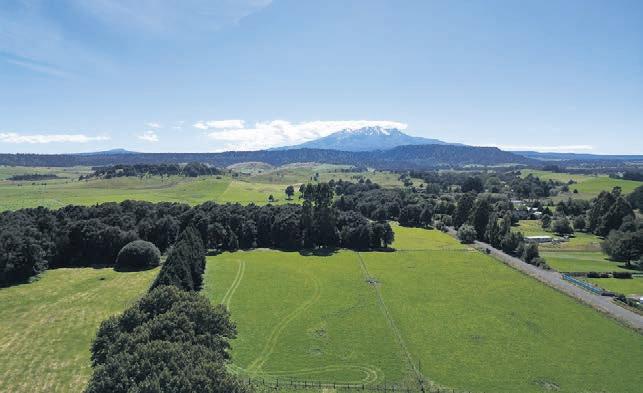
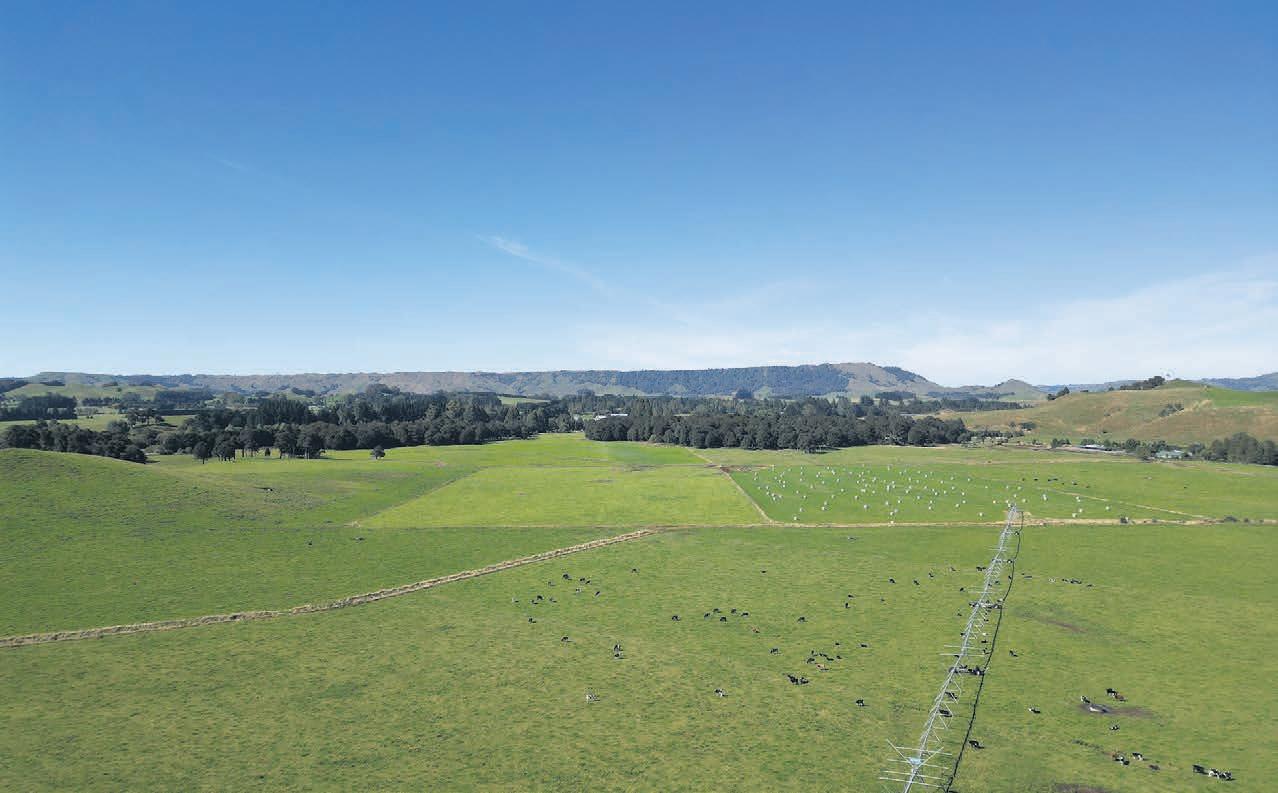
Whataroa 1925 Whataroa Highway
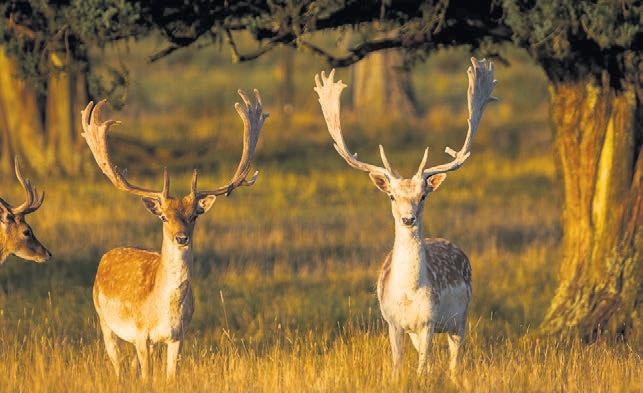
Te Taho Deer Park is situated on the alpine side of Whataroa Highway between the township of Whataroa and Hari Hari Village on the West Coast of the South Island. The property is extremely versatile with alternative options. Very well set up as a bed and breakfast operation alongside, a whitetail trophy hunting park and a wellregarded velvet-producing company. The private hunting lodge offers open-plan living and is situated in a parklike setting with well-established gardens and lawns, perfect for hosting friends and clients. The property occupies 129 hectares on two titles with approx. 100 hectares developed as a velvet production deer unit. Around 28 hectares is a licensed safari park, hosting one of the very few high-fenced populations of white-tailed deer in New Zealand. Come and enjoy the hunting, fishing, jet boating and white baiting in the area! bayleys.co.nz/5520674
215.3048ha
Auction (unless sold prior) 2pm, Fri 21 Apr 2023
Waimarino Golf Club, 33 Golf Course Road, Ohakune
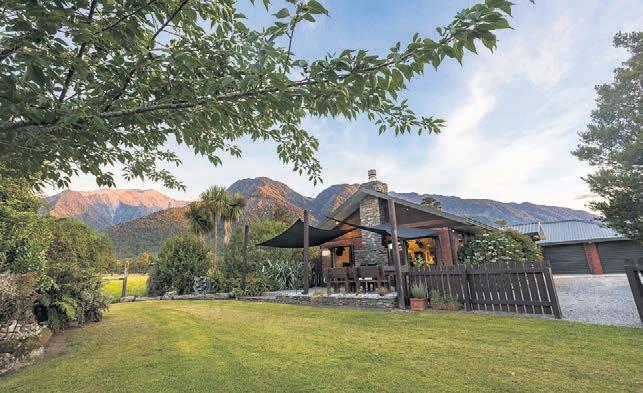
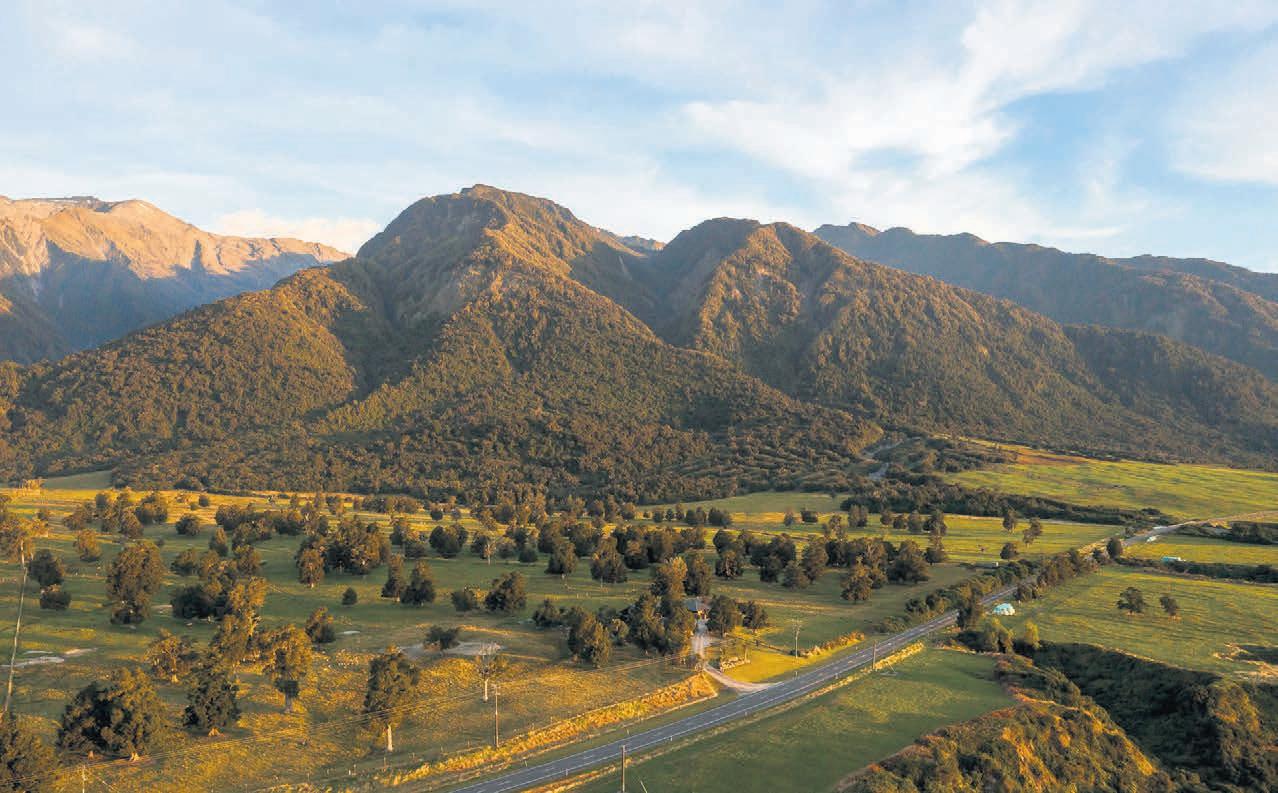

View by appointment
Pete Stratton 027 484 7078 peter.stratton@bayleys.co.nz BARTLEY
129.8523ha
Deadline Sale (unless sold prior)
12pm, Fri 14 Apr 2023
3 Deans Avenue, Chch
View by appointment
Ben Turner 027 530 1400 ben.turner@bayleys.co.nz
Craig Blackburn 027 489 7225
craig.blackburn@bayleys.co.nz
bayleys.co.nz

This picturesque 256.08 hectare (more or less) dairy farm is in 8 titles, has been solidly farmed for the past 50 years, and is a great opportunity to be purchased as an inter-generational family farm or investor. The farm has produced a three-year average 146,168kgMS from 500 cows, with the best production achieved in the 2022 season being 157,239kgMS. The contour is flat to gentle rolling with a well formed central race system, providing easy access to the 100 paddocks. Pasture is a mixture of predominantly rye/clover with kikuyu. Farm infrastructure includes a very tidy 30 ASHB cowshed, four bay implement shed, calf rearing sheds, haybarns and solid cattle yards. bayleys.co.nz/1060333
Look no further than this stunning kiwifruit orchard, boasting 1.34can/ha Hayward and 0.66can/ha Gold, plus a solid plaster circa 1940s timeless retro style home.
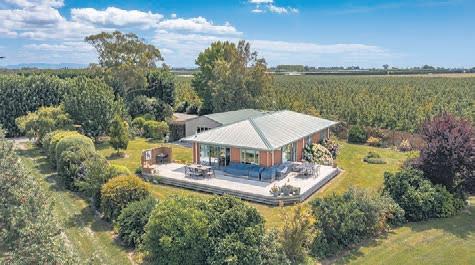
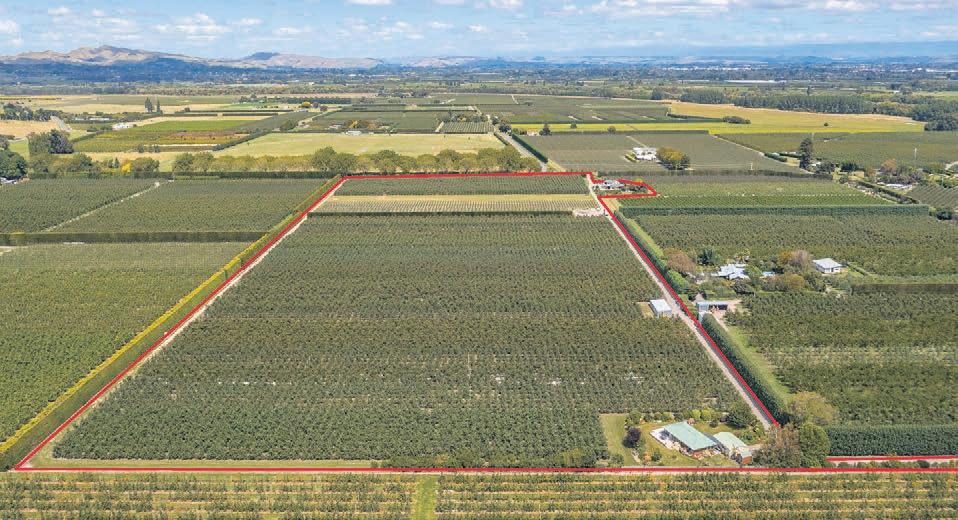
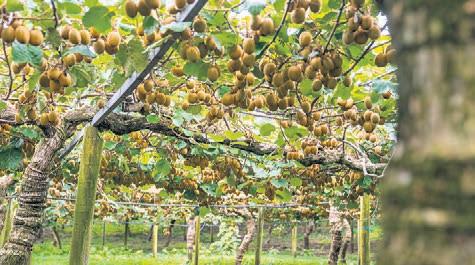
Located in a prime growing region, the orchard is meticulously maintained to ensure the highest quality and yield of delicious kiwifruit. With a focus on sustainable farming practices, you can feel good about investing in kiwifruit.
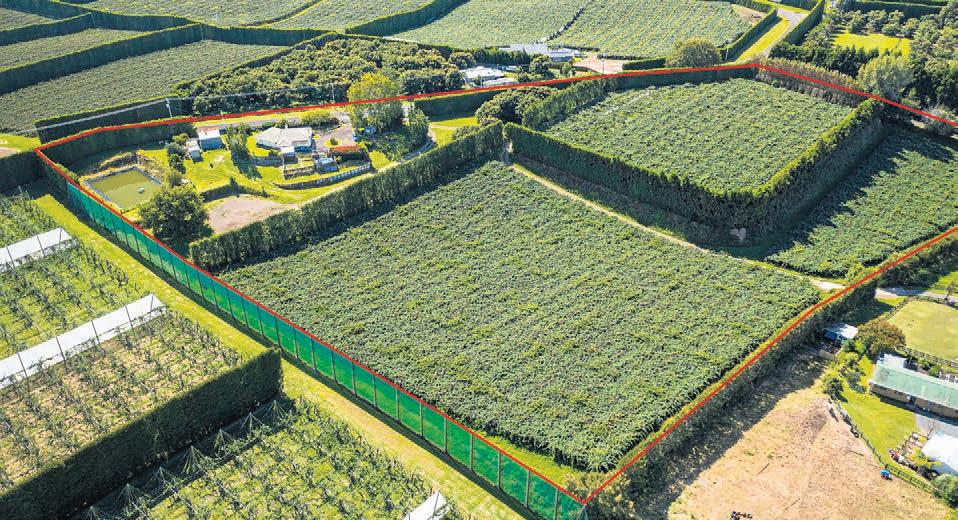
Kiwifruit is a popular and in demand fruit, known for its unique flavour and high nutritional content. With a growing global market, investing in a Kiwifruit orchard is a smart move for anyone looking for a stable and profitable business opportunity. bayleys.co.nz/2503097
256.08ha
Auction (unless sold prior) 12pm, Wed 5 Apr 2023
84 Walton Street, Whangarei
View by appointment
Catherine Stewart 027 356 5031 catherine.stewart@bayleys.co.nz
MACKYS REAL ESTATE LTD, BAYLEYS, LICENSED UNDER THE REA ACT 2008
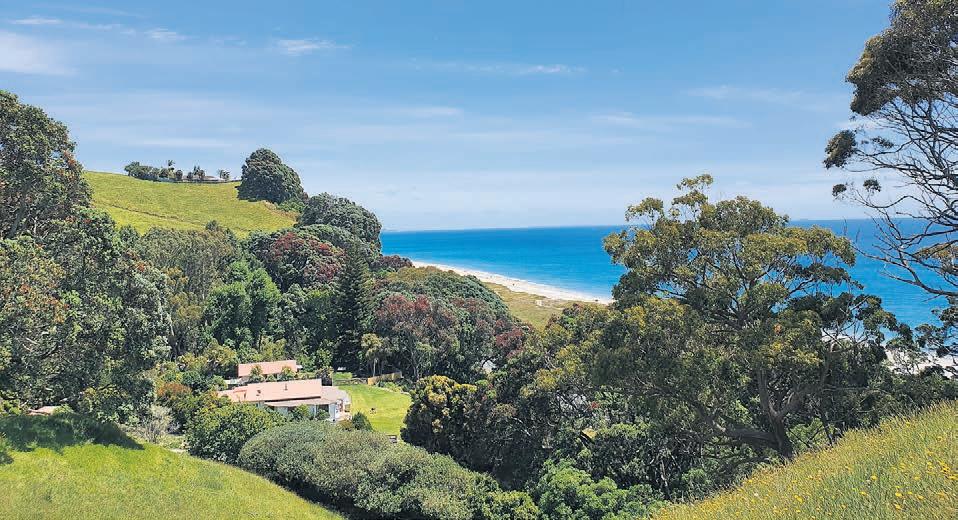
A stunning location, with views that ought to be seen to be believed. Here you will find yourself in awe of the breath-taking panoramic ocean views that are presented to you from your premium placement. With an impressive landholding of 14.330ha (more or less), you will discover not one but two dwellings on an elevated platform. This property is special; it offers an array of options and will appeal to many. With development and subdivision potential, rest assured that the current owners have invested both time and money into a scheme plan that is available upon request. bayleys.co.nz/2503062
14.333ha
Auction (unless sold prior) 1pm, Wed 29 Mar 2023
247 Cameron Road, Tauranga
View by appointment
Steve Low 027 285 7313 steve.low@bayleys.co.nz
SUCCESS REALTY LIMITED, BAYLEYS, LICENSED UNDER THE REA ACT 2008
3.384ha
Asking Price $2,480,700 + GST (if any)
View by appointment Snow Williams 027 275 5500 snow.williams@bayleys.co.nz
Alex Johnston 027 208 8830 alex.johnston@bayleys.co.nz
SUCCESS REALTY LIMITED, BAYLEYS, LICENSED UNDER THE REA ACT 2008
Boundary lines are indicative only


Located in the beautiful coastal community of Haumoana, only 13 kilometres from Havelock North and Hastings is this turnkey 12.81 hectare apple orchard with two low maintenance dwellings. The quality 10.5 hectare planted apple orchard includes modern varieties of NZ Queen, Galaxy, Royal Gala, Aztec Fuji, Jazz and young plantings of Dazzle. Orchard infrastructure includes a four bay lockup shed, good water consent and supporting irrigation system. Given the location, two private homes, shedding, soils, climate and water consents, this turnkey operation is a must view.
Plant and machinery available at valuation. bayleys.co.nz/2853223
12.81ha 7 4
Auction 12pm, Thu 6 Apr 2023 17 Napier Road, Havelock North
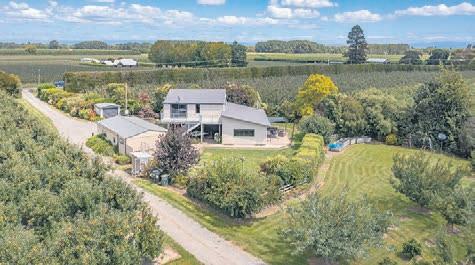

View 1-1.45pm Sun 19 Mar & Sun 26 Mar or by appointment
Tony Rasmussen 027 429 2253 tony.rasmussen@bayleys.co.nz
EASTERN REALTY LTD, BAYLEYS, LICENSED UNDER THE REA ACT 2008
Brand new A-Grade industrial investment
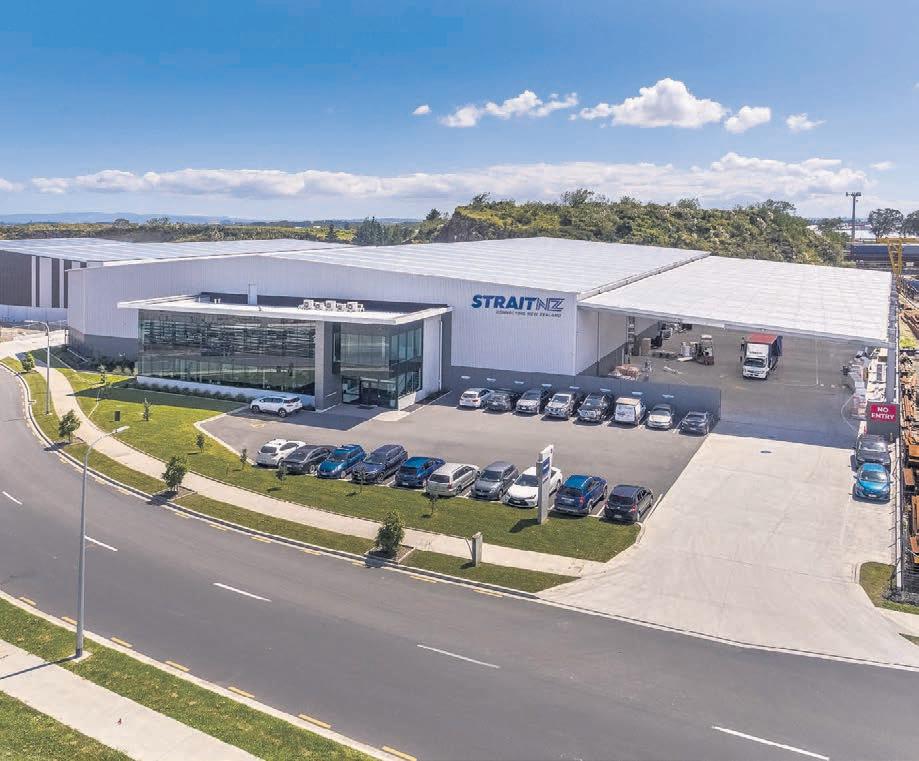
New long-term lease with fixed rental growth and a bank guarantee
• Floor area 6,500sqm (more or less)
• Land area 13,492sqm (more or less)
This substantial freehold landholding is strategically located in the newly established Basalt Business Park, this impeccable industrial investment property provides an extremely efficient layout, with two-level offices, dual-sided access via multiple roller doors, full drive-around capability and a large canopy. bayleys.co.nz/1904384
Located on the Upper Stuart Road, Eltham is this absolutely superb 160 hectare (subject to final survey) dairy farm. This farm is one of the best to come to the market in recent times in this location. Not only does it offer excellent scale, this farm is superbly cared for and is in an amazing condition.

Infrastructure includes a 50 bale Turnstyle cowshed, in good condition, modern housing being a 4 bedroom brick home with ensuite and sweeping views of the farm, a second home with single man’s quarters, designated calf rearing facilities, and large implement and storage sheds.
Lime stone metaled tracks give fantastic access to the entire farm, and with the cowshed being centrally located, the walking times are relatively short. Fencing is in good order and pastures are strong. The effluent system is consented to 2041.
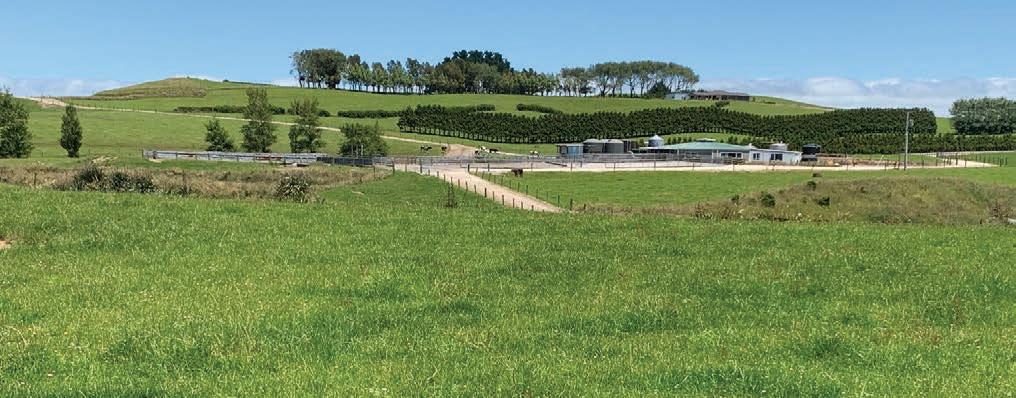
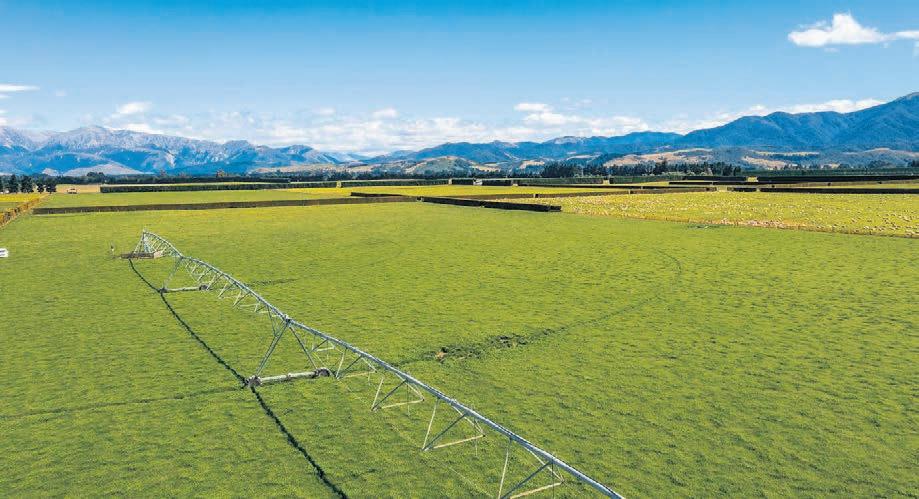
This property must been seen to be appreciated. For more information or to view, please contact Brent Dodunski on 027 498 4346, Daniel Butler on 027 328 8537 or Peter McDonald on 027 443 4506.
Tender (unless sold prior)
Closing 4pm, Thu 6 Apr 2023
2 Harris Road, East Tamaki
View by appointment
Nick Bayley 021 174 2440 nick.bayley@bayleys.co.nz
Scott Campbell 021 414 107 scott.campbell@bayleys.co.nz
Sunil Bhana 021 938 660 sunil.bhana@bayleys.co.nz
BAYLEYS REAL ESTATE LTD, MANUKAU, LICENSED UNDER THE REA ACT 2008
This is a rare opportunity to own a high-quality fattening dairy support farm spanning 369.4743 hectares. With excellent fencing and infrastructure, as well as great shelter, this property ensures maximum productivity year-round. Located in a productive area with good rainfall, it is ideal for sheep breeding or lamb finishing and the excellent quality of the pasture ensures clear results when it comes to fattening cattle. Furthermore, there is a 8-hectare feedlot for up to 2,000 cattle. This property comes with a large homestead located in an attractive, mature setting, complete with a swimming pool. Whether you are an established farmer looking to expand your operations or someone new to the industry, this property provides an excellent opportunity to invest. bayleys.co.nz/5520565
369.4734ha
Deadline Sale (unless sold prior)
12pm, Thu 23 Mar 2023
3 Deans Avenue, Chch
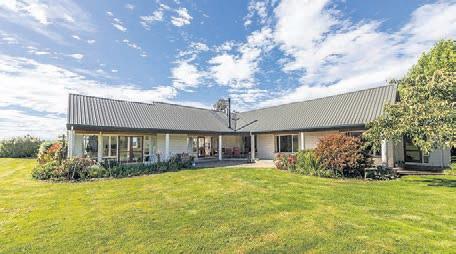
Phone for viewing times
Ben Turner 027 530 1400 ben.turner@bayleys.co.nz
Peter Foley 021 754 737 peter.foley@bayleys.co.nz








WHALAN AND PARTNERS LTD, BAYLEYS, LICENSED UNDER THE REA ACT 2008
DEADLINE SALE
780 Wani Rd, Paeroa
152 ha (more or less) dairy farm with five titles in Awaiti, Netherton. Currently milking 450 cows on once a day which has been a lifestyle choice. This all flat contour is well drained and has both county water and a bore to supply water for the stock and the 36 ASHB. Looking for storage, this has plenty in the way of multiple buildings around the dairy shed area so your implements and calves are well taken care of. The main home is a great family home with a swimming pool and a large carport to accommodate at least four vehicles.The property also has another cottage for any farm labour needed on site. A great size property with many options being available with the multiple titles.

152 ha
Deadline Sale
Closes Thurs 23rd March, 3pm (unless sold prior)
View Thurs 16th March
11am - 12pm
Agent Jack Van Lierop 027 445 5099
LJ Hooker Matamata
07 888 5677
Link Realty Ltd.
Licensed Agent REAA 2008
The catch of a lifetime!
This 79.9 ha dairy farm offers a unique opportunity to own a piece of New Zealand's rural paradise. Protected from summer dry, the farm is well equipped to support a thriving dairy operation boasting 30 ha of irrigation and a 4.5 ha irrigation dam.

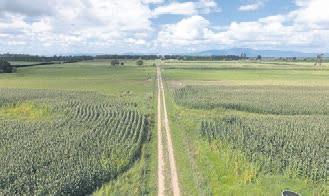
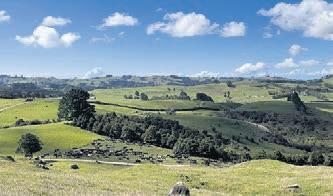
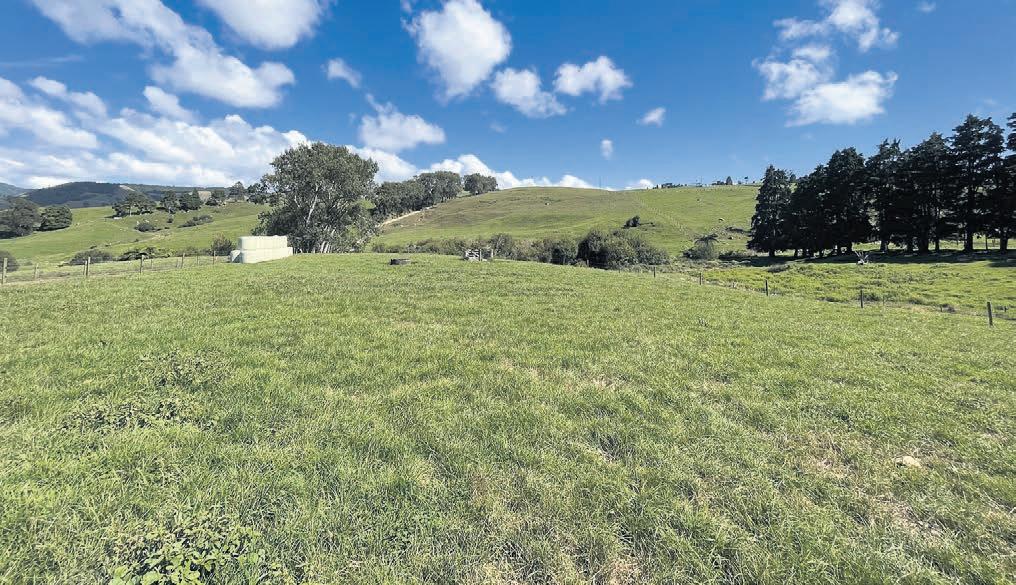
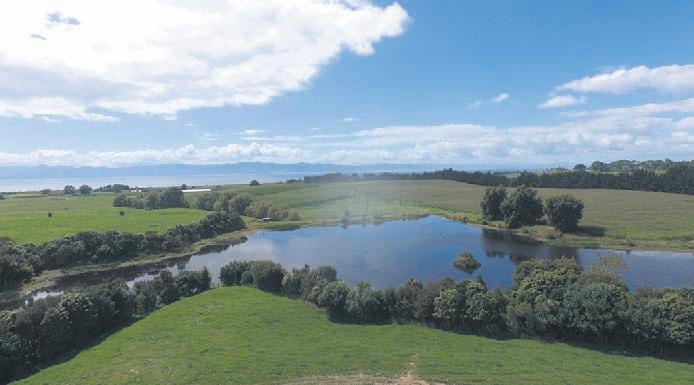

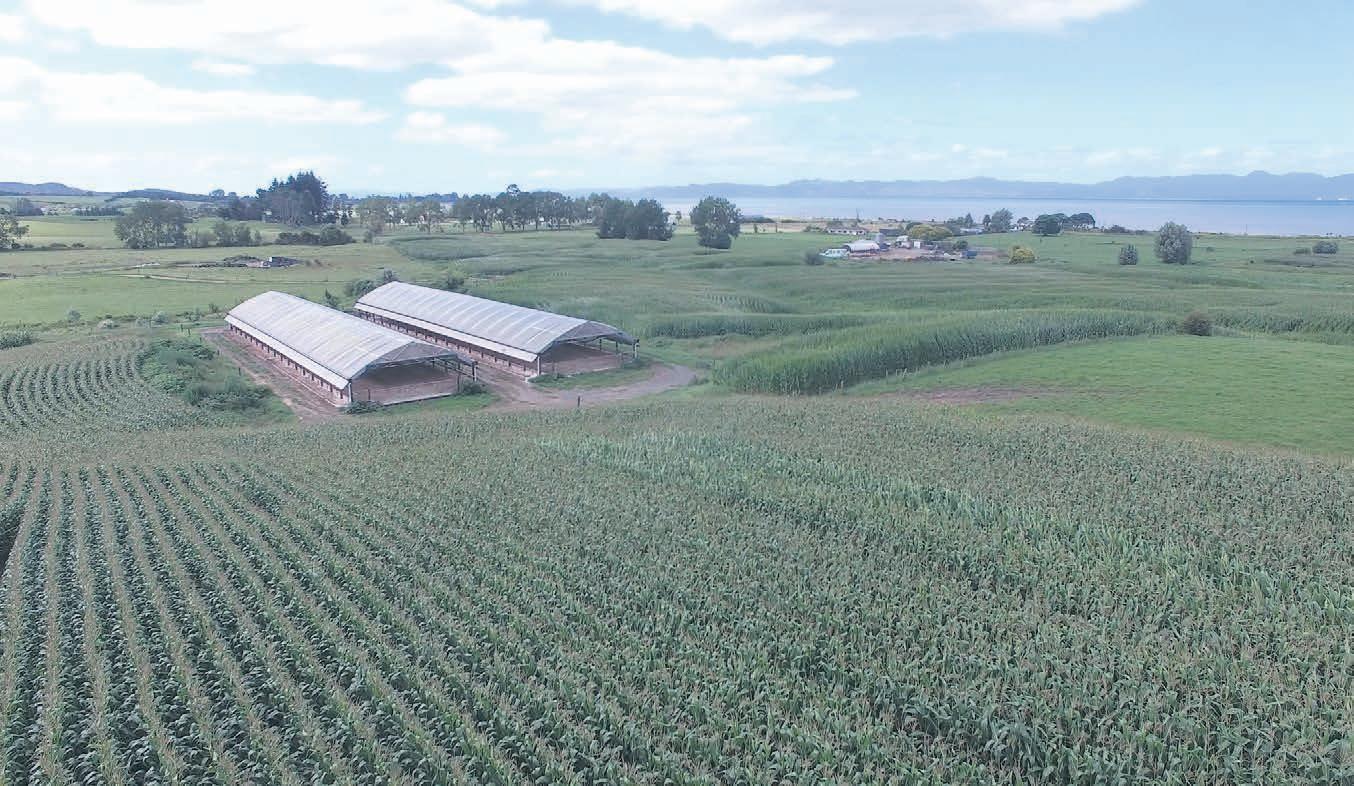
Producing 115,000 kgMS per year and boasting 2 large herd homes, this farm is a highly productive and profitable investment.
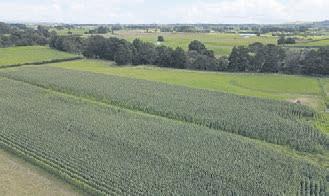
The cowshed is a 26 ASHB and the farm is currently run as a winter milking operation with an autumn calving herd meaning that February can be spent fishing for snapper and enjoying the long summer days. In addition to the dairy facilities, the property also has 3 titles and offers the potential for future development with much of the farm enjoying stunning views of the Hauraki Gulf. The well built 4 bedroom brick and tile home with an internal double garage provides a comfortable and spacious living space for the owner, or manager of the farm.
Eager for action!
77 ha (more or less) dairy unit located minutes from the Waihi township. The farm milking 170 cows has a four year average production of 74,428 kgMS with approx. 198 T of feed dispensed through the in shed feeding system and 170 silage bales made on farm. Contour of the property varies from gentle rolling to rolling with some steeper sidling of which 2.6 ha has been retired and planted in native bush. The farm is presented in good heart with excellent pasture growth rates which is driven by the reliable rainfall and a solid fertiliser application program. This is a great little farm with a good location and presents a real value proposition.
Auction 1.00pm, Wed 29th Mar, 2023, (unless sold prior), Property Brokers, 78 Studholme Street, Morrinsville View Wed 15 Mar 11.00 - 12.00pm Wed 22 Mar 11.00 - 12.00pm Web pb.co.nz/MAR116964
Ian Morgan M 027 492 5878
Chelly Aitchison M 022 697 8779
Auction 12.00pm, Tue 21st Mar, 2023, (unless sold prior), Hautapu Sports Club, 211 Victoria Street, Cambridge View Wed 15 Mar 11.00 - 1.00pm
Web pb.co.nz/CBR113633
David McGuire
M 027 472 2572 E david.mcguire@pb.co.nz






Jeremy Waters
M 021 607 281 E jeremy.waters@pb.co.nz
Auction
A unique opportunity to own 44 ha of prime real estate in the heart of Tatua Dairy country, 13 km to Tatua dairy factory. This property features 2 titles and a charming 2 bedroom log cabin style house.
Centrally raced, this is property makes a great support block for your existing dairy operation, with the perfect conditions for growing maize, or having control over grazing your own young stock.
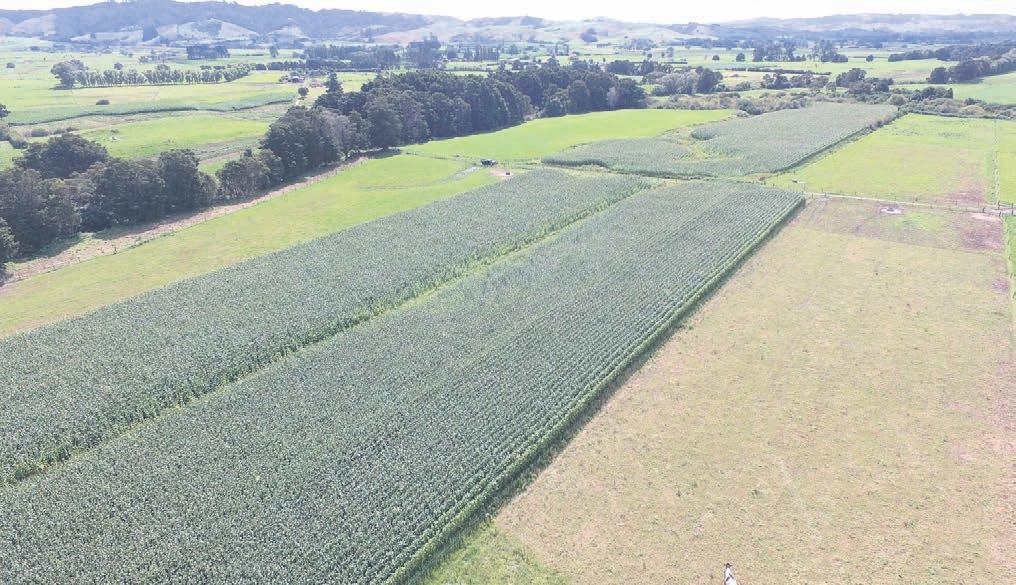
A disused cowshed provides additional storage options.
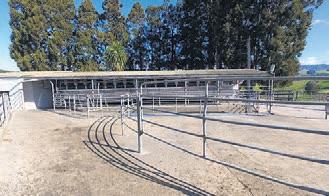
Don't miss out on this rare chance to own an attractive piece of rural paradise in a highly sought-after location. Contact us today for more information!
Auction 12.00pm, Tue 21st Mar, 2023, (unless sold prior), Hautapu Sports Club, 211 Victoria Street, Cambridge View Tue 14 Mar 12.00 - 1.00pm Web pb.co.nz/CBR113634

David McGuire M 027 472 2572
Jeremy Waters M 021 607 281
Waihi 729 Waihi Whangamata•South Waikato dairying opportunity

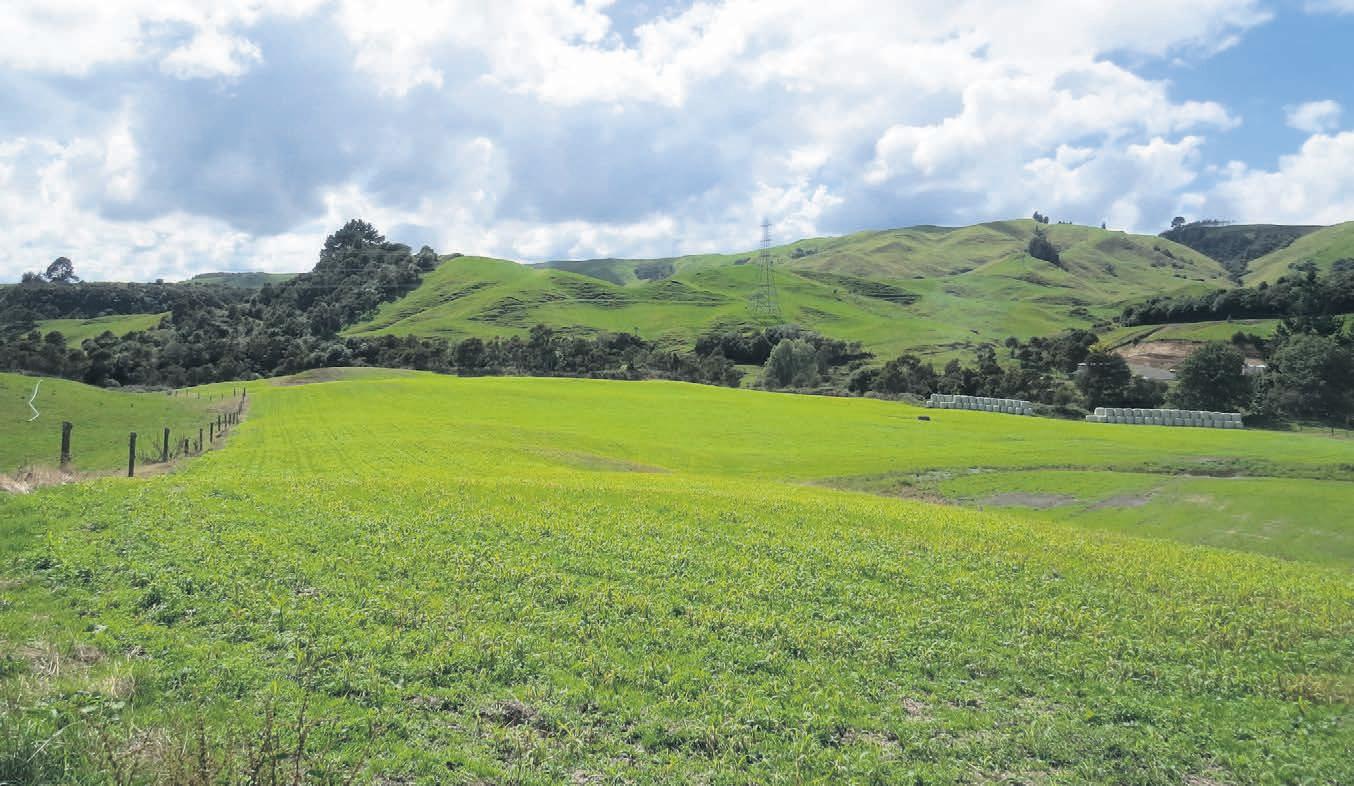
•300 ha - 250 ha effective, milking O.A.D

•Good 50 ASHB, 2 homes and shedding

•Mixed contour - self-contained unit
•A great late season chance to buy scale
Vendors are ready to move.
Rural Outlook Out March 2023
Grab the opportunity to showcase your property to 72,000 rural letterboxes and online nationwide
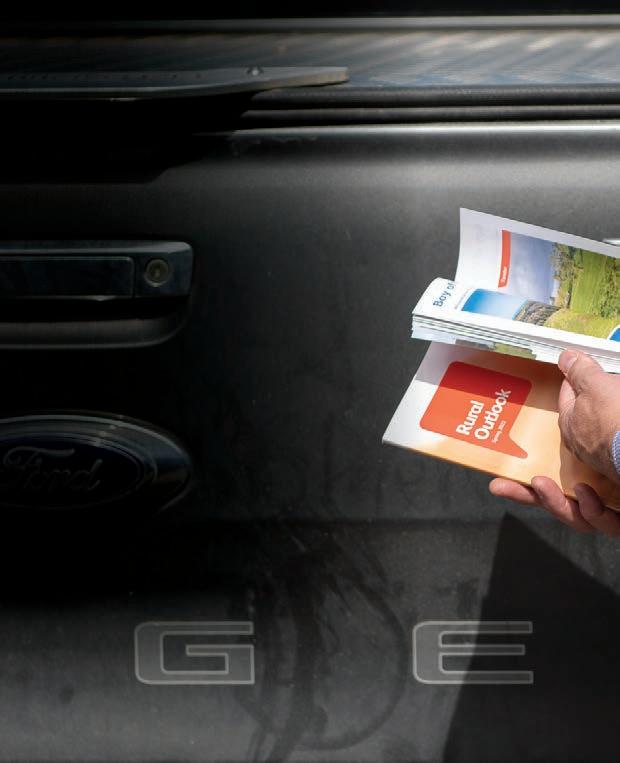
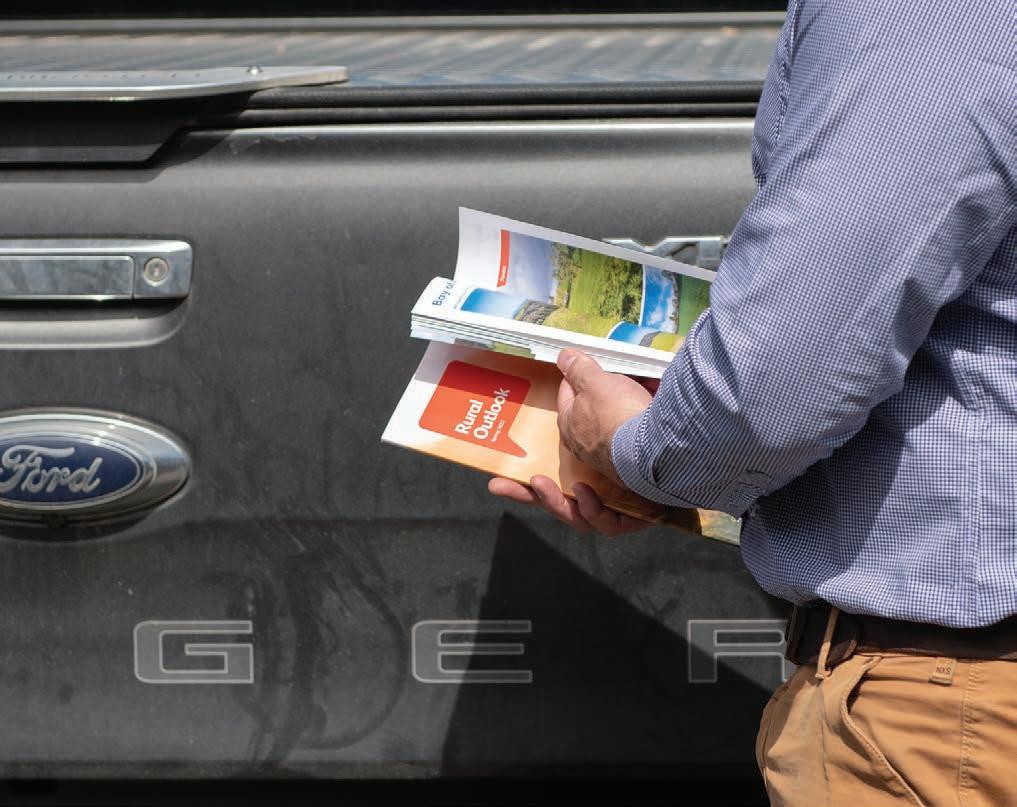
Booking closes 4pm, Thursday 2 March 2023
Give your local Property Brokers team a bell to book your spot today 0800 367 5263
PB064156
Auction 12.00pm, Tue 21st Mar, 2023, Hautapu Sports Club, 211 Victoria Street, Cambridge View Tue 14 Mar 11.00 - 1.00pm Web pb.co.nz/TWR116789
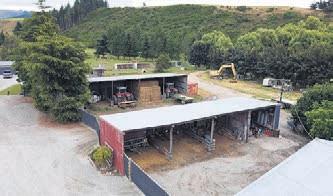

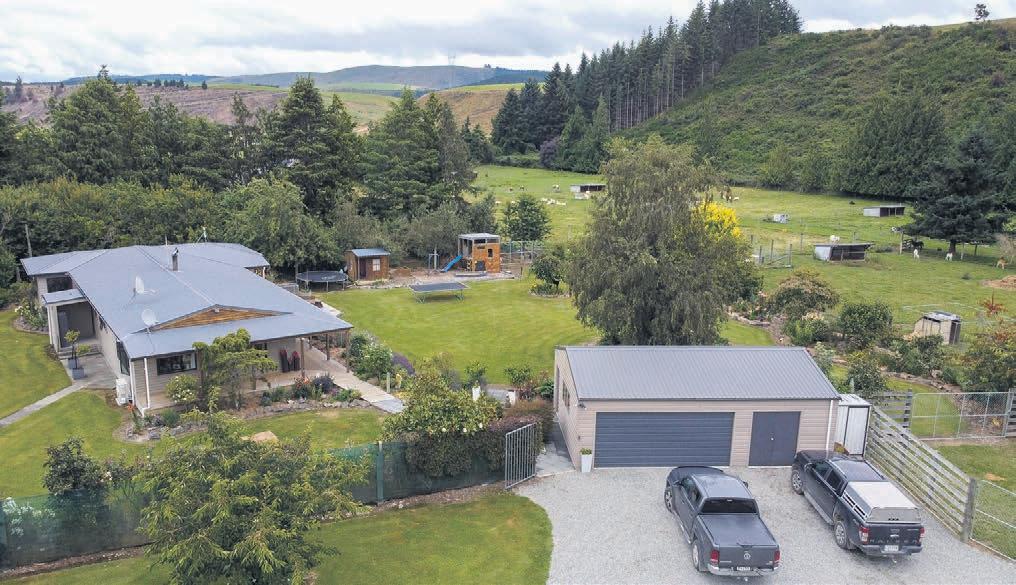
John Sisley M 027 475 9808 E john.sisley@pb.co.nz

Fairlie 1891 Geraldine-Fairlie Highway
Tender
Skipton Farm
216.59 ha of a well-developed farm has come to the market and could be your next investment. Currently running as a finishing farm for approximately 3,000 lambs and cattle, plus an animal park. The animal park has been set up with a variety of animals and birds, big and small, to attract people of all ages, there is a great deal of potential for this farm. Another option is forestry with approximately 50 - 70 ha of suitable land. Included on the land is a 4-bedroom renovated family home, 3 stand shearing shed, cattle and sheep yards plus other buildings, not to forget the duck pond in the middle of the farm. Don't delay calling for a viewing.
4 1 2
Tender closes 2.00pm, Thu 23rd Mar, 2023 (unless sold prior), Property Brokers, Timaru 83 Sophia Street, Timaru View By appointment Web pb.co.nz/TMR114452
Michael Richardson M 027 228 7027

Production Forest Opportunity
On offer is Omakura Forest, a second rotation Pinus Radiata Forest located in Mangamuka within the Far North District just off State Highway 1.
Omakura Forest is located just south of the Mangamuka Range and is accessed directly off Mangamuka Road or via a second entrance at Kauaepepe Road and has excellent roading throughout the block. The Forest has a total land area of 305.94 hectares.
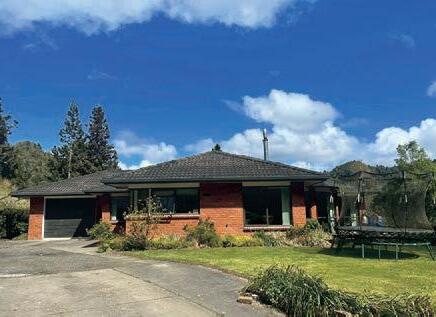
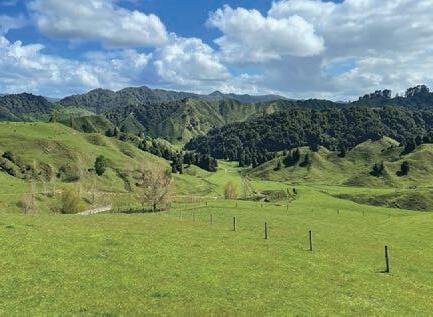

A majority of the property has been planted between 2015-2022 (163.88ha) on its second rotation. The block has a net stocked area of approximately 181.69ha planted in Pinus Radiata with the remaining crop being mid-rotation planted between 2006-2007 with two small stands planted in 1995 and 2000 respectively.
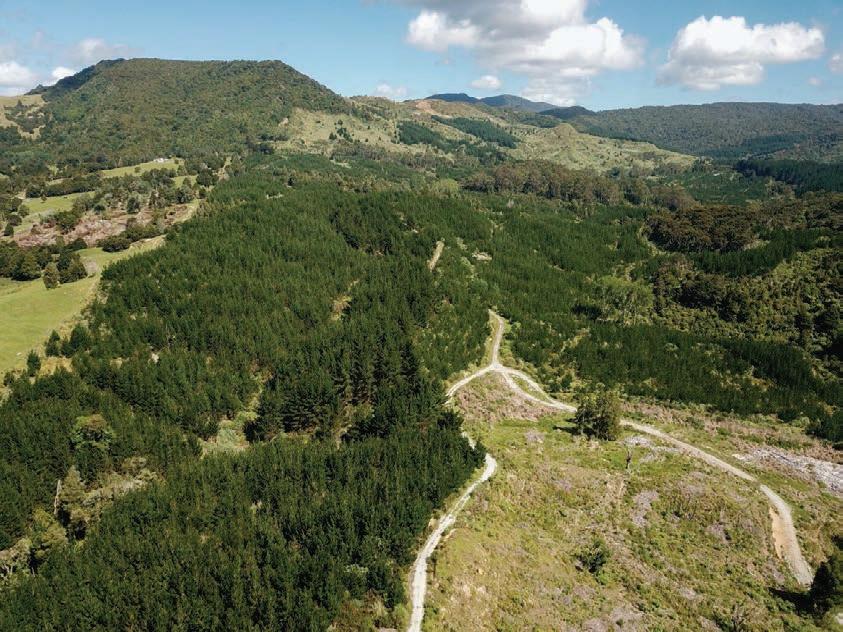
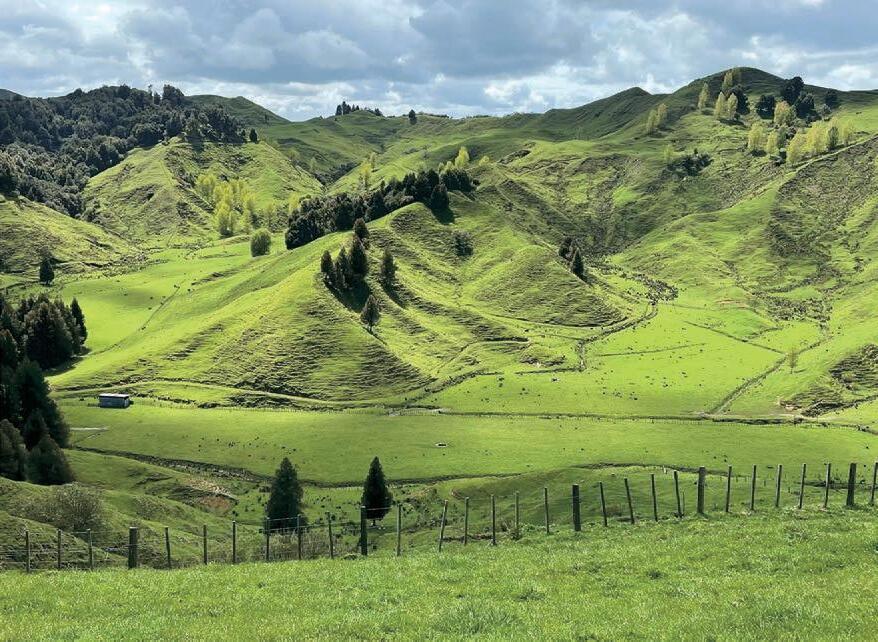
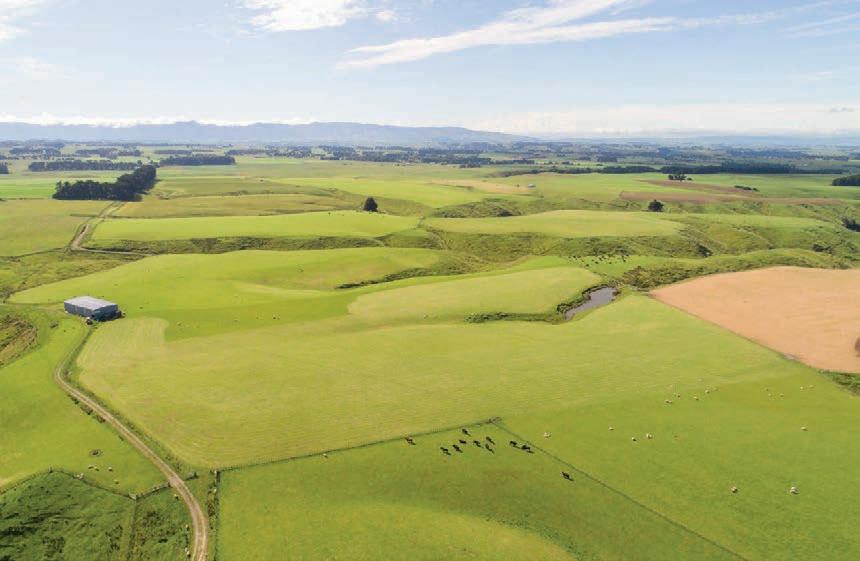
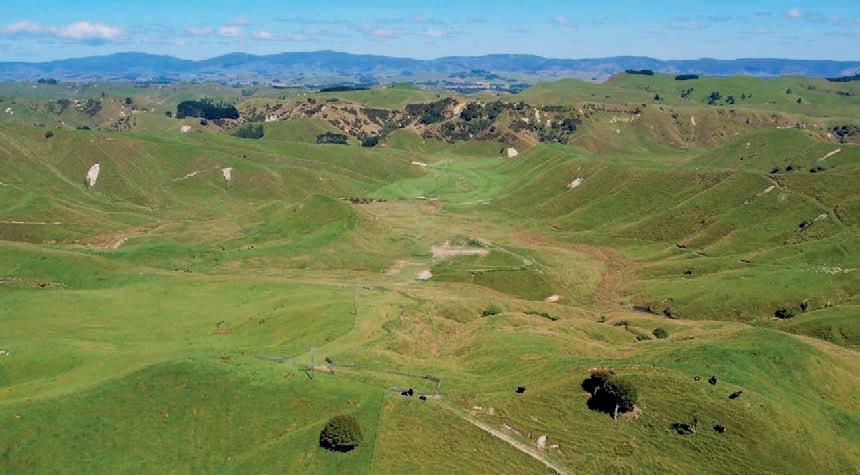
This is a superb opportunity to secure a second rotation forest that will produce a quality crop.
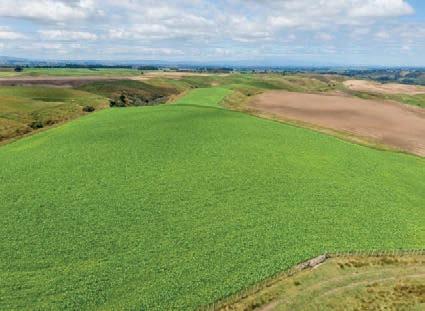

Don’t miss out contact your forestry specialists below to request the detailed Information Memorandum!
The property is to be sold by tender with deadline for all bids to be presented no later than 3pm, Thursday 6th April 2023 (unless sold prior).
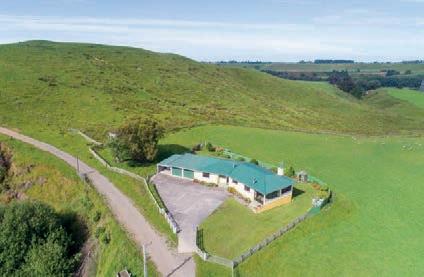
For further information contact: Warwick Searle on +64 21 362 778 or warwick.searle@colliers.com



'Barclay'
The Barclay family started farming in the Aria district in 1932 and have grown their holding into the high producing 867ha (more or less) farm it is today. Built on hard work, fertility and strategic selection of high performing livestock, this is a top-performing farm. Fertiliser applications have never missed a year. Target kill weight for both bulls and steer is 400kg dressed. The top Romney flock lambing percentage is over 150%. On average 400 bales of silage are made. Two dwellings - large four bedroom and three bedroom houses. Two x three stand woolsheds and multiple farm
Why wouldn’t you? Situated 32km in either direction from Waipukurau and Dannevirke is 42 hectares (103 acres) of flat-easy contour, with approximately 4 hectares being mowable, located in the Southern Hawke’s Bay. With well set-up infrastructure for calf-rearing, excellent fencing for sheep and cattle finishing, and a reliable water supply, this turn-key operation is waiting for its new owner.
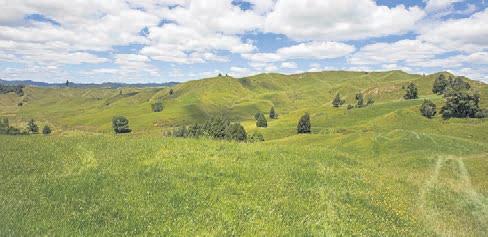


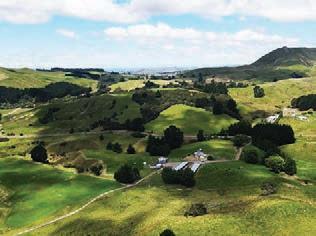
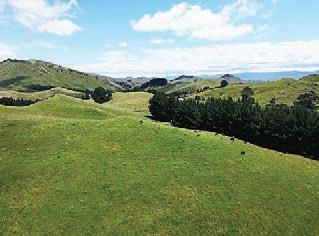
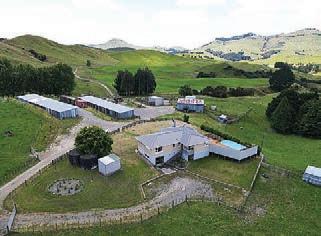
The property is complemented by a tidy three bedroom home with a large deck and swimming pool and the land even has its very own waterfall!
Call me today to book your appointment to view.
www.forfarms.co.nz - ID FF3542
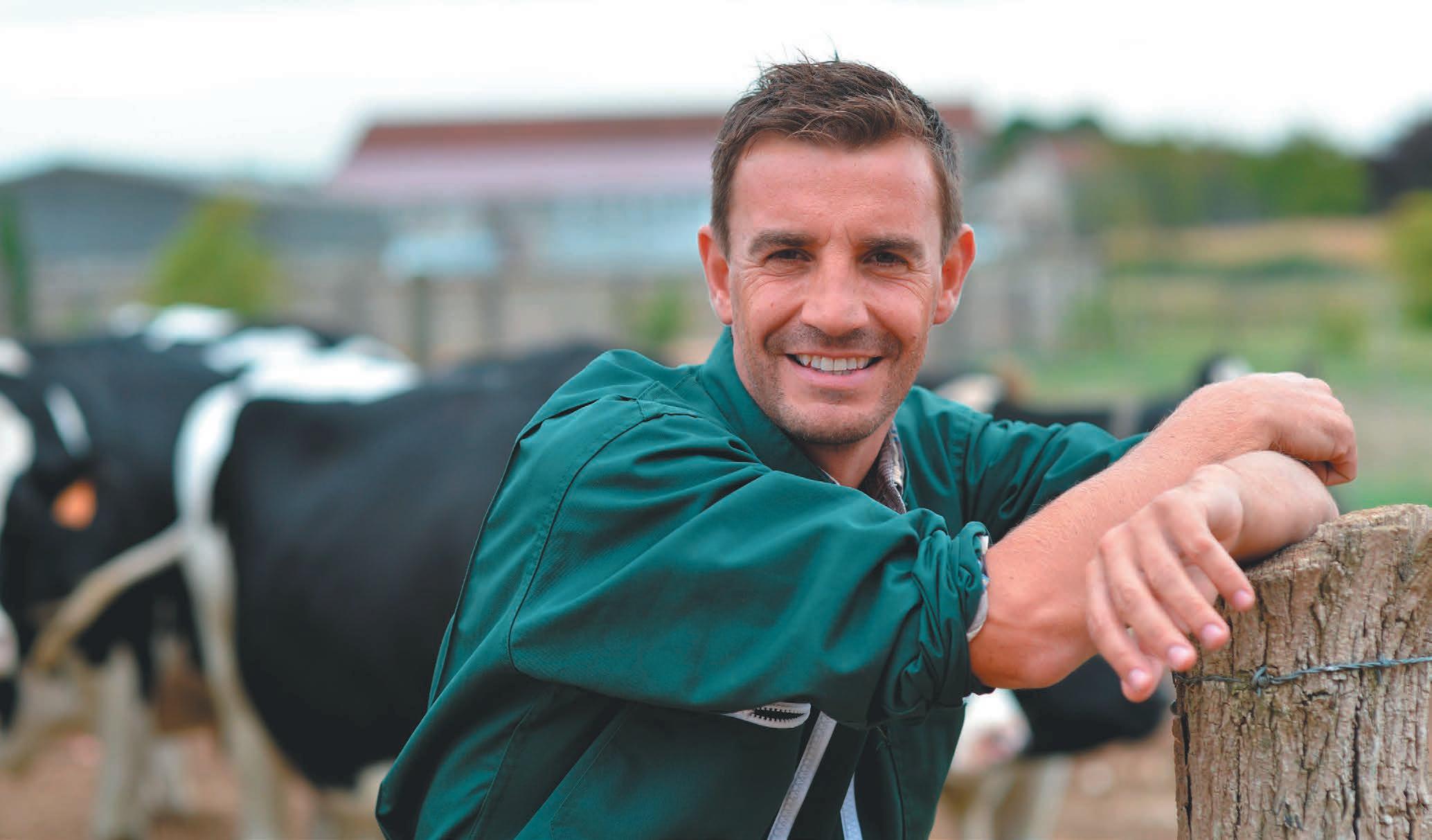

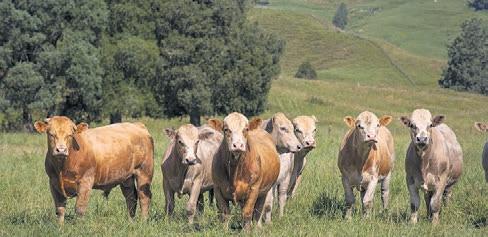


One day in class our teacher asked what our favourite animal was and I said “Fried chicken”.
She said I wasn’t funny but she couldn’t be right as the whole class was laughing.
Anyway, she sent me to the principal’s o ce where I told him what happened. He laughed and asked me not to do it again.
I don’t understand why. My parents always told me to tell the truth. Fried chicken is my favourite animal.
I went home and told my dad what happened and he said my teacher was probably an animal lover. I love animals too! Especially chicken, beef and pork. The next day my teacher asked what my favourite LIVE animal was. I told her it was chicken. Why? Because you could make them into fried chicken.
She sent me back to the principal’s o ce. He laughed and told me not to do it again.
I don’t understand. My parents always tell me to tell the truth, but my teacher doesn’t like that.
Today my teacher asked the class which military person we admired the most. I told her “Colonel Saunders”.
Guess where I am now?
12HP, diesel, electric start, 50 ton Heavy duty construction for serious wood splitting. Towable.
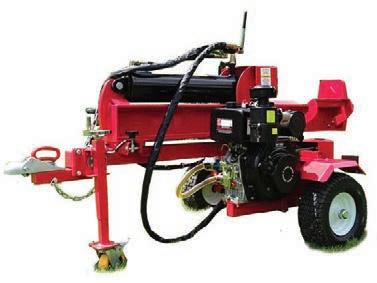
South Island High Country Grand Slam Self drive your own 4WD from Blenheim to Cardona in Central Otago through a network of high country tracks including Molesworth on this 7 day 8 night tour.
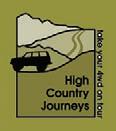
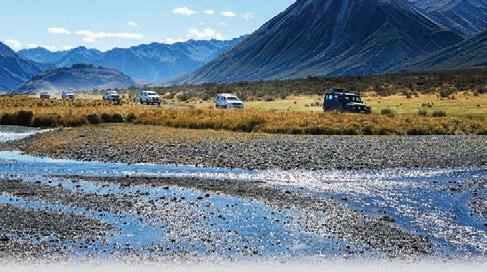
To find out more visit www.mowermaster.co
Phone 0800 422 277 or 028 461 5112
Email: mowermasterltd@gmail.com
Both these tours are; Fully guided with radio contact; Fully catered and stay in very comfortable lodge and farmstays; Made up of smaller tour groups (7-9 vehicles) and travel at a quieter pace.
NOW TAKING BOOKINGS FOR 2023/24 SEASON
Contact John Mullholland Phone
A BIT ABOUT SISAM & SONS – Sisam & Sons is a 4750ha, diversified pastoral-based farming company, situated 18km south of Whakatane, in Eastern Bay of Plenty. Pastoral farming is the core business on the property which comprises four dairy units, and two sheep and beef blocks. The dairy platforms are on the alluvial flats/rolling hills and the sheep and beef operations are on the rolling to steeper hill country areas surrounding the dairy farms. Commercial forestry is based on areas not suitable for pastoral grazing.
THE OPPORTUNITY – The 2400ha sheep and beef component of the business is run as two blocks, operating an intensive breeding and finishing operation. Reporting to the General Manager, the Sheep & Beef Manager is responsible for the implementation of the Sheep & Beef farm business plan through supervision of the land, pasture and stock with emphasis on effective people management. The role also encompasses maintenance and continued improvement of farm infrastructure, plant condition and the management of people resources. A Block Manager and two Shepherds are employed on each of the blocks to manage and run the day-to-day operations and a Tractor General is shared across both blocks.
A BIT ABOUT YOU – Along with a high degree of practical farming experience, including a sound understanding of industry policies, standards and regulations, the successful applicant will demonstrate:
Strategic planning and senior management experience
Technical capability with farm information systems and software
• Financial acumen (budgets/expenditure, P&L and Balance Sheets)
• Organised and able to deal with multiple priorities with urgency and accuracy
• High level of communication, numeracy and verbal reasoning skills
• Ability to work to deadlines and under pressure
• Able to develop a positive working relationship with all key stakeholders
• Capable team of working dogs
ON OFFER – A work vehicle is included, and accommodation is by way of a warm, tidy, fourbedroom home, which has been recently renovated to a high standard and well-established gardens.
The property is located within 30 minutes of Whakatane and Ohope beach offering a variety of recreational activities and schooling options, there are school buses available. The smaller farming community of Taneatua is nearby with local squash club.
FURTHER INFORMATION – For further information or to apply please visit http://bit.ly/41ramgu or give the Rural Directions team a call on 06 871 0450 for a confidential chat (Ref# 1036524).
Applications close Sunday 19th March 2023
Only job seekers who have NZ working rights will be eligible for this role.
ANIMAL HANDLING
FLY OR LICE problem?
Electrodip – the magic eye sheepjetter since 1989 with unique self adjusting sides. Incredible chemical and time savings with proven e ectiveness. Phone 07 573 8512 www.electrodip.com
CRAIGCO SHEEP JETTERS. Sensor Jet. Deal to y and Lice now. Guaranteed performance. Unbeatable pricing. Phone 06 835 6863. www.craigcojetters.com

ATTENTION
DAIRY FARMERS
COWSHED PAINTER AVAILABLE. Experienced. Old and new sheds. Herringbone and Rotary. Southland / Otago. Phone 027 517 9908 or email: raymond.d@slingshot.co.nz
ATTENTION FARMERS
CONTRACTORS
GORSE AND THISTLE SPRAY. We also scrub cut. Four men with all gear in your area. Phone Dave 06 375 8032.
DOGS FOR SALE
BUYING / SELLING. Huntaways. Heading dogs. Deliver NZ wide. https:// www.youtube.com/@ mikehughesworkingdog 07 315 5553. TOP BLOODLINES. Heading and Huntaway pups. Phone Dave Andrews 027 450 6095.
GOATS WANTED
GOATS WANTED. All weights. All breeds. Prompt service. Payment on pick up. My on farm prices will not be beaten. Phone David Hutchings 07 895 8845 or 0274 519 249. Feral goats mustered on a 50/50 share basis.
PROMOTES QUICK PASTURE growth. Only $6.50+gst per hectare delivered. 0508-GIBBGRO [0508 442 247] www. gibbgro.co.nz. “The Proven One.”
DAIRY OR GRAZING. Rangitīkei / Manawatū through to HB. Regenerative farming practiced. Open to developing land in partnership. Phone Michael 027 223 6156.
WORD ONLY
ADVERTISING. Phone Debbie on 0800 85 25 80.
ZON BIRDSCARER electro-tek@xtra.co.nz

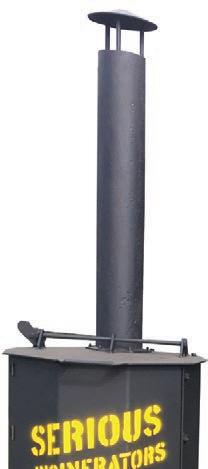
WANTED
NZ’s finest BioGro certified Mg fertiliser 0800 436 566
For a delivered price call ....
Pasture Seed Range and Mixes Contact us: 0508 733 343 or 021 228 5035 www.vernado.co.nz



NATIVE FOREST FOR MILLING also Macrocarpa and Red Gum New Zealand wide. We can arrange permits and plans. Also after milled timber to purchase. NEW ZEALAND NATIVE TIMBER SUPPLIERS (WGTN) LIMITED 027 688 2954 Richard.
GOATS WANTED
FERAL GOATS WANTED.
Pick-up within 24 hours.
Prices based on works schedule. Phone Bill and Vicky Le Feuvre 07 893 8916 / 027 363 2932.
NZ KELP. FRESH, wild ocean harvested giant kelp. The world’s richest source of natural iodine. Dried and milled for use in agriculture and horticulture. Growth promotant / stock health food. As seen on Country Calendar. Orders to: 03 322 6115 or info@nzkelp.co.nz
LEASE LAND WANTED
THINKING ABOUT RETIRING but don’t want to sell the family farm? Looking to expand our drystock property. Northland drystock / nishing farms of 100ha or more preferred. If bigger than 500ha then further away would be considered. Five year lease with option to extend to 10 years preferred. Enquiries ring Marty Vermeulen 09 439 0004.
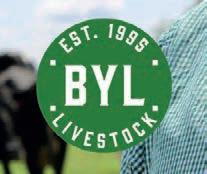
HIGH PRESSURE WATER PUMPS, suitable on high headlifts. Low energy usage for single/3-phase motors, waterwheel and turbine drives. Low maintenance costs and easy to service. Enquiries phone 04 526 4415, email sales@hydra-cell.co.nz
RURAL MASSAGE
RELAXING FULL BODY massage in rural Ohaupo. Unwind. De-stress. www. ruralmassage.co.nz or call 027 529 5540.
MOISTURE METERS Hay, Silage dry matter, grain. www.moisturemeters.co.nz 0800 213 343.


BREEDING EWES
FRSN BULL CALVES 150-200kg
300-380kg 18MTH HEIFERS
18MTH BULLS 330-450kg
380-450kg 18MTH STEERS
18MTH HERE BULLS
1YR ANG & ANG AX STEERS 500-600kg
COWS WITH CAF
www.dyerlivestock.co.nz


Ross Dyer 0274 333 381
A Financing Solution For Your

E info@rdlfinance.co.nz





TUESDAY MARCH 14TH
This year we will offer a varied selection of 46 incalf heifers including 9 polled heifers, 3 blues and a mixture of red, white and roan. For full details go onto BIDR online.
Hosted on Bidr.co.nz
Thursday 23rd March 2023 - 7:30pm
and inspection invited. Kevin or Megan FRIEL ph: (06) 376 4543 or (027)625 8526 kev.meg.co@xtra.co.nzwww.mtmableangus.co.nz
● 10 Stud quality replacement heifers carrying the best genetics from renowned Mt Mable Angus Stud
● BVD Tested Clear, BVD and 10 in 1 Vaccinated
● Breedplan Recorded, DNA profiled, parent verified and will be genomically profiled before sale
● TB Status C10

● Herd completely free of known genetic defects
● All vetted in calf to easy calving specialist heifer mating bulls with calving dates detailed.


Calves sired by McFadzean Cattle Company Genetics

MASTERTON WEANER FAIR 14 March 23
a/c McFadzean Cattle Company – 260 weaner bulls

A Jennings 027 594 6820
a/c Patrick Cattle Co – 65 weaner steers B Diamond 027 283 9600
a/c Waikaramu Station – 40 weaner steers
A Jennings 027 594 6820
TE KUITI WEANER FAIR 13
April 23
a/c Kiridale Station – 60 weaner steers Nate Lamb 027 326 5187
Tuesday 14 March
Masterton Saleyards
11.30am
Comprising approx. 800 Steers
• 350 Bulls
250 Heifers
Glenbrae, Masterton C/- Johnie McFadzean


300 Meat Maker bulls
Exceptional line up of very quiet meat maker bulls renowned for their superior growth rates.

Te Whanga , Masterton
50 Angus Steers
Onetai, Whareama
70 Simm X Steers
• 25 Simm X Heifers
Enquiries:
Steve Wilkinson 027 594 5110 Andrew (Elvis) Jennings 027 594 6820
Key: Dairy Cattle Sheep Other


Friday 17 March
12.00pm start
A/c GB & JZ Chambers (Farm sold)
• 190 Angus Cows. Capital stock

• VIC Angus Bull 20.11-20.01
Enquiries
Nate Lamb 027 326 5187
PRELIMINARY NOTICE
PLANT &
Friday 31 March
1.00pm start
A/C MR Simmons
90 Rathgens Road
Makikihi, South Canterbury
MAIN ITEMS WILL BE SOLD IN CONJUNCTION WITH bidr ONLINE AS HYBRID SALE.
START TIME APPROX. 1.45pm
For full details go to Agonline or PGG Wrightson Mid/South Canterbury Facebook page.
Outside entries are being accepted.
Enquiries: Kelvin Sadler 027 430 2029
“These calves are all genuine hill country bred cattle. Beef finishers are getting great results from MCC cattle”
It’s been an unusual start to the season, to say the least, but notwithstanding the weather there’s no hiding the fact that there are fewer weaner calves around. Those that have come to market are fetching top dollar.
Sheep and beef
THE beef weaner fair season is upon us again and, though slightly delayed by Cyclone Gabrielle, the markets have proved to be as strong as the record year of 2018. The fairs have kicked off in the North Island and will continue until early May. South Island calf sales will start from mid-March, so for now the focus is very much on the North Island.
A strong North Island season was anticipated, given the abundance of feed around and the expectation that supply of beef weaners would be lower as changes to farm policies and farm sales really start to bite into national beef herd numbers.
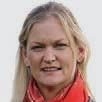
North Island schedule pricing is also slightly higher this year than 2018 and so it seems appropriate that the start to this season was able to match the record levels
set in that year. It did come as somewhat of a surprise though, and those that follow the fairs closely know that anything can change from the early weaner fairs through to the more mainstream events.
Total tallies since 2009 at these early weaner fairs for North Island yards covered by AgriHQ’s LivestockEye reports have fluctuated within a range of 2400 to 4000-head (heifer and steer tallies). This year’s total to date is 2870, the second lowest tally over that period and down from 3800 last year.
Some of that reduction can be attributed to Cyclone Gabrielle and the access issues created in its aftermath, and some of the calves that usually arrive at the early fairs will still appear later in the season. But that still doesn’t hide the fact that there are fewer around, and some fairs have been permanently delayed a week or two to better cater to farmers who wean a bit later. Once the season ends the total throughput will be telling.
Heifers now easily outprice what people were paying for steers 10 years ago.
From a bird’s eye view of the early North Island weaner fairs, prices for both the traditional and exotic steers and heifers that dominate these yardings are up on last year – for steers the lift has been $115 or nearly 50c/kg and heifers $90 and 44c/kg.

Average weight variations over the period from 2009 to 2023 have fluctuated from 227-253kg for steers and 195-223kg for heifers with this year’s very much finding middle ground in those ranges.
At an average of $980 for steers, the 2023 per head price rivals
$993 posted in 2018, while an average of $785 for heifers is the highest recorded, comparative only to $775 in 2016. The lowest average values recorded since 2009 were in 2013 when steers averaged $560 and heifers $427. Astute bidding over the years has meant that steer and heifer prices follow a very similar path, albeit with heifers at a lower trajectory or discount of 36-42c/kg ($132$200). However, heifers now easily outprice what people were paying for steers 10 years ago. While the beef weaner fair season is just getting going, the dairy-beef season is coming to a close and will kick back in from October.
Results posted for the first three months of this year (from North Island saleyards covered by AgriHQ LivestockEye reports)
comparative to the same period back to 2016, have been the best so far. Dairy-beef steers have averaged 195kg – which is significantly higher than previous years – and $796 per head, while heifers averaged 160kg and $639. The weaner Friesian bull market can be fickle, often selling at similar levels to dairy-beef heifers, but this year it really found its stride.
For an average weight of 154kg, per head prices lifted to the highest levels since 2016 at $662 and up from $530 in 2022. Relative to previous years these levels are up $60-$100, which reflects the fact that a shortage of calves created by fewer feeder calves being reared has unbalanced the supply and demand equation, as well as the flow-on effect of better returns on finished bulls.
New cattle sales appeared on the calendar over the past week and met keen competition. Due to access issues, cattle from Morunga Station in Matawai were trucked to the Rangiuru saleyards and sold on Thursday, March 2. These annual draft traditional and exotic R3 steers would usually be offered at Matawhero. And at Coalgate last Tuesday a traditional cattle sale was built around one main vendor and is expected to become an annual event. With travelling an issue for some buyers, especially in the North Island, bidr was well used at both these sales.
| March 6 | 973 cattle, 6686 sheep
1
2
3
GUARANTEED TO LAST LONGER
No risk - 60,000km to 80,000km guaranteed! Cooper Tires are built to last!



IMPROVED MILEAGE AND TRACTION
Deeper Tread depth - 14.7mm. 63% MORE than your original equipment tyre.

8 DEGREE SCOOPS CLEAR MUD FASTER
Unique to Cooper, 8 degree scoops clear mud faster, designed for Top Truck Challenge in USA.

MASSIVE OFF-ROAD TRACTION
From the latest adaptive sidebiters, delivering improved soft surface traction and they look COOL! 4
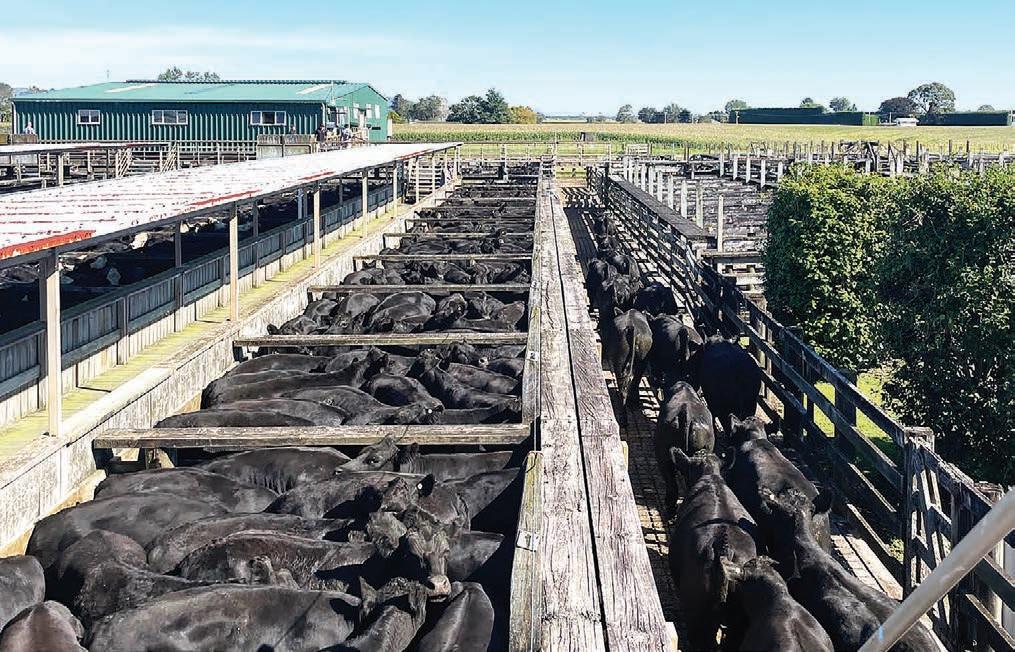
5

6

20% STRONGER SIDEWALL
Giving you less sidewall damage off-road due to high tensile body ply, other brands use standard tensile.

QUIETER RIDE
Whisper grooves block air & reduce road noise for a quieter ride.
ULTIMATE WET GRIP
Contains 30% chemically - coupled silica for reduced rebound for better grip and fuel efficiency.
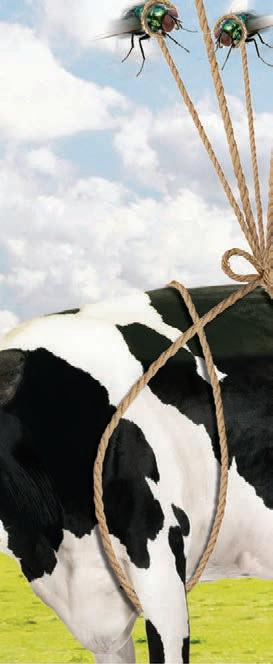








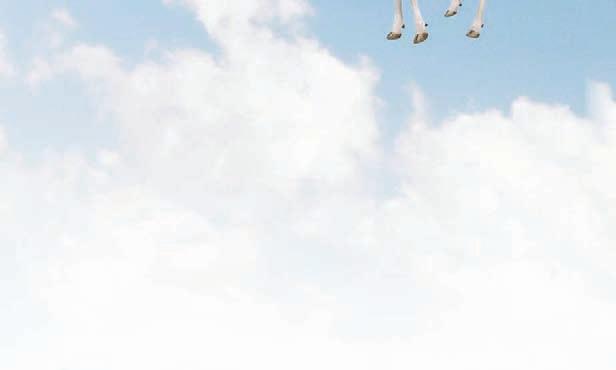





Insecticide




Don’t let flies take away all your hard work

Rip into nuisance flies, lice and ticks with the proven power of Ripcord®. Just one easy application provides long lasting protection from nasties around the herd and in the milking shed. And because Ripcord is MPI approved for use in dairy sheds, there is no milk withholding period. Ripcord is the perfect product to use.
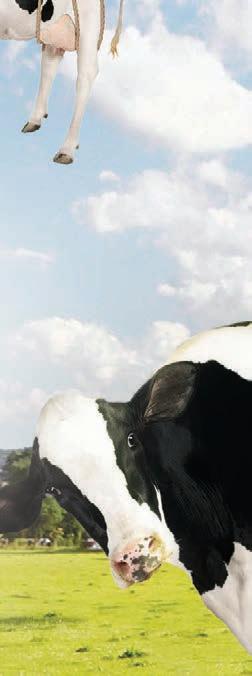

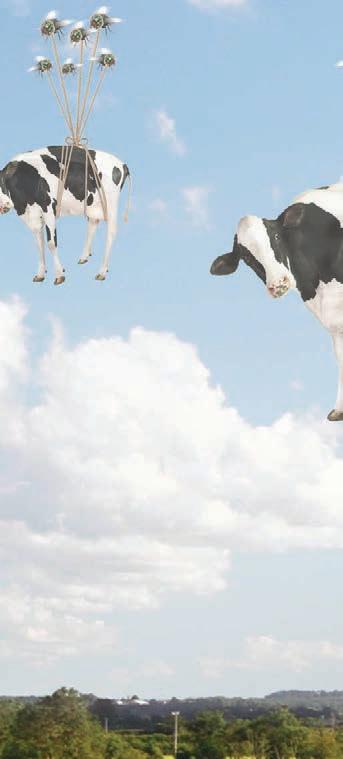


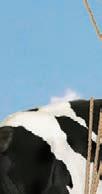
Don’t settle for fly-by-night treatments. Insist on Ripcord. Visit pest-control.basf.co.nz for more details or visit your local distributor.


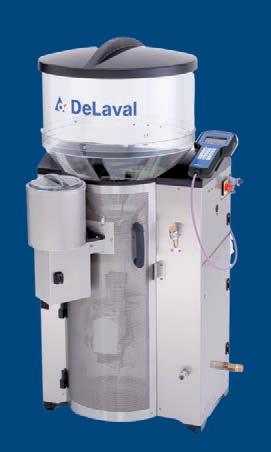
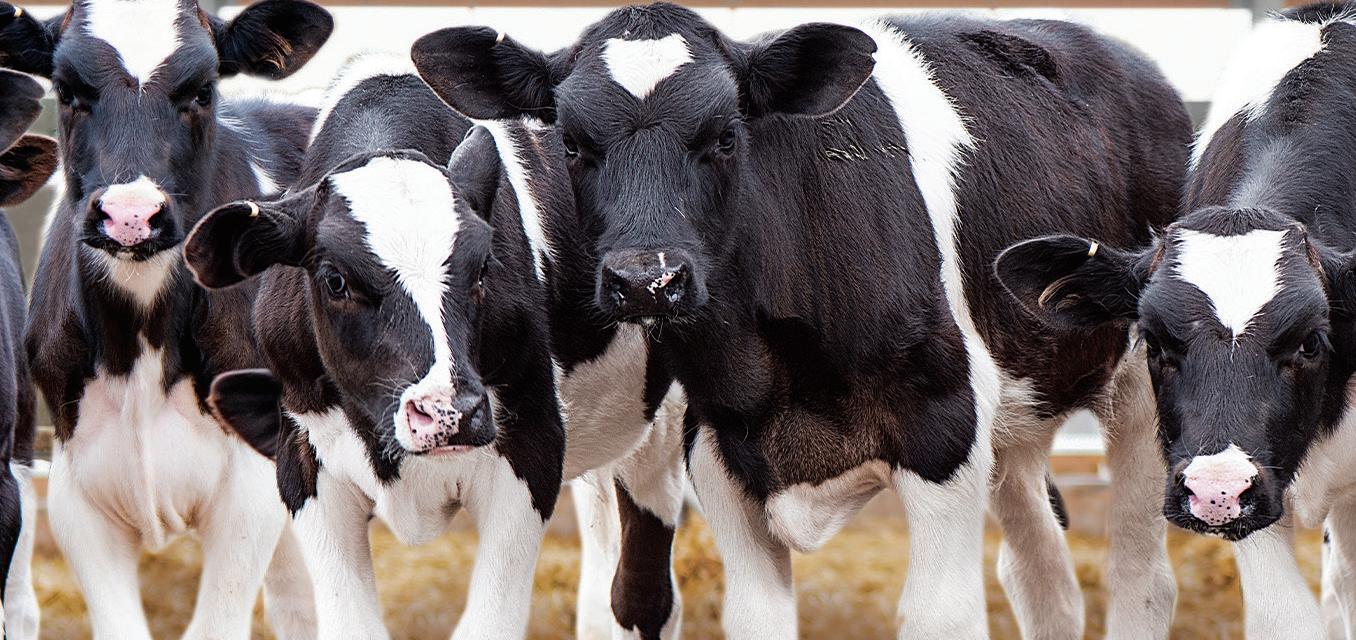



AUTUMN’s weather pattern is here and as La Niña continues to fade away the neutral and chaotic weather patterns are returning. This means more variety, and we’re less likely to be stuck in a pattern for months (as we saw in January and February with too much rain in the North Island and not enough rain in the lower and western South Island).
Over the past week – and again this coming week – we’re seeing autumn westerlies dominate. Some high-pressure zones (that over summer lay across the South Island only) are now shifting further north as they exit Australia. This brings more westerlies into southern NZ and fewer La Niña like easterlies and episodes.
In saying that, we are seeing plenty of energy in the tropics
this month and we can’t rule out another tropical low heading south, but for now these highpressure zones in NZ will likely keep any tropical cyclones well to NZ’s north – or our east. We also have more high pressure coming in for the South Island this week – which is not great for those needing rain, but for those further north desperate to cut hay this may finally give you that window.
Our updated longrange data shows an even drier outlook for the rest of March for most drenched North Island regions.
When we put out our last ClimateWatch update for March and autumn, we were still dealing with flood warnings for parts of the upper North Island. Now that we’ve seen that wet pattern move away, our updated long-range data shows an even drier outlook for the
rest of March for most drenched North Island regions. The reason the initial outlook on March first showed the North Island still leaning in the green “wetter than average” is because there were still tropical lows that could come down into NZ. Our updated IBM data suggests this risk may now be further to NZ’s north and east.
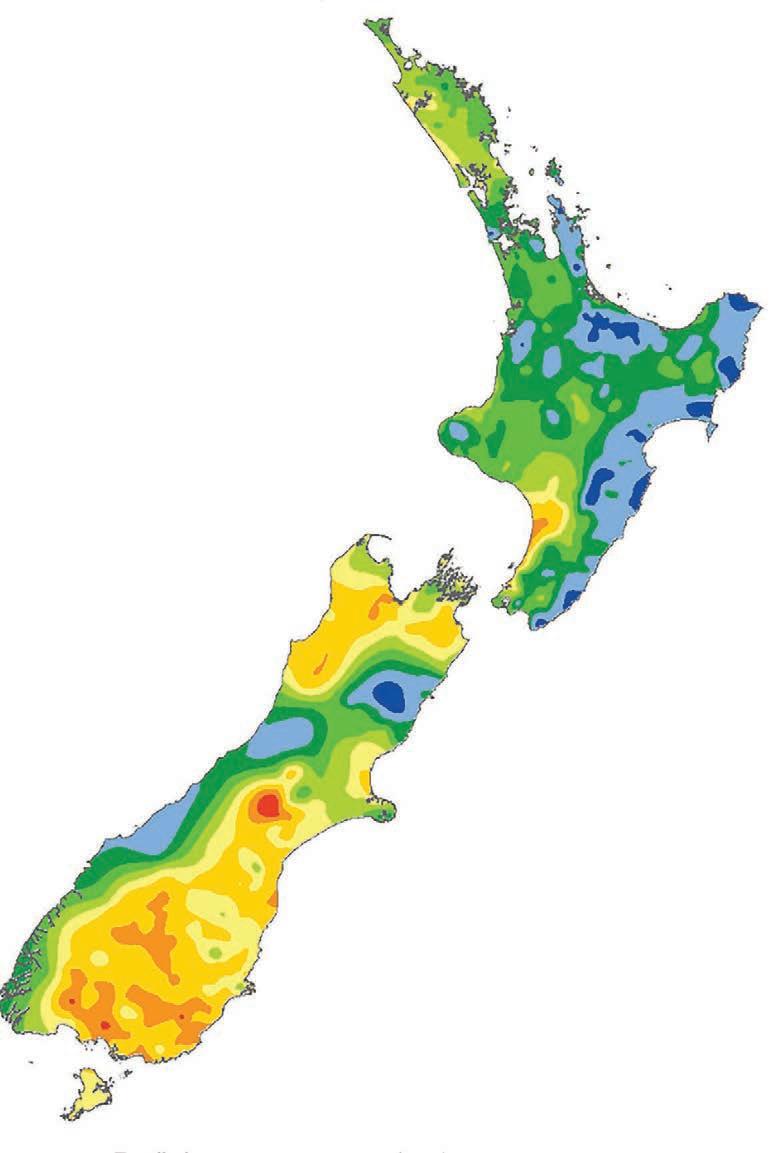
This means the North Island may see a big difference with a much drier set-up, although autumn’s showery changes are most likely to impact the lower half of the North Island. So this is a positive twist for North Islanders in March, but we still need to keep a close eye on the tropics with a high risk of storms forming up there over the next month or two. The cyclone season officially ends on April 30. Southland and Otago won’t be too happy to hear the weather may be drier than usual coming up. While we do see showers for these drought-affected regions, there doesn’t yet appear to be a “silver bullet” to fix it all in one go.
Upcoming highlights
• A drier-than-average trend for most North Island regions for March (showers about)
• Warmer than average for most if not all of NZ in March

• A big incoming high this week –a powerful one covering most of NZ for a time
• High pressure slides over the upper North Island towards the end of the week, allowing more west to southwest wind (and showers) for the South Island

